








Well, El Niño is gone, and the countryside is getting dryer.
Texas hunters are out in droves, dove seasons are coming to a close, and deer seasons are here. From what we hear about dove season, hunters were excited about the first hunting seasons that kick off Sept.1 each year. Dove hunters fire about 15 million shells while taking some five million doves for the cooker and grill.
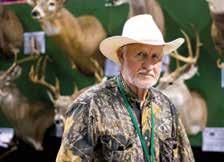
Archery hunters and those with MLDP permits started deer seasons the first week of October, and corn sales went up. Hunters are looking for cheap gas, and checking the trail cameras to see what is coming to the feeders. A high percentage of deer harvest has already occurred before the regular deer seasons open in November.
When the smoke clears (no pun) in January, some 800,000 deer hunters will have taken about 800,000 white-tailed deer—yes, that’s an average of one deer per hunter—from a statewide population of 5.3 million. Fact is, deer populations are increasing faster than deer hunters, so there are plenty of whitetails waiting for eager Nimrods.
If you’re looking for a Christmas gift, you might want to check out the new book, “Stringtown to the Kokernot,” an autobiography by yours truly. In the 288-page hardcover book with 97 color photos, I reminisce about my young days; hunting; Texas A&M; Texas Parks and Wildlife; the Kokernot Ranch; Texas Trophy Hunters; and a few secret challenges.
November and December have special holidays that get kids out of school and into the outdoors. Lucky boys and girls of hunting families will get to enjoy time in the deer blinds, viewing wildlife and maybe their first buck, or doe. Late dove and waterfowl seasons are still open so keep your favorite shotgun ready for another hunt.
Much of the state has had twice the amount of rainfall as 2023, which has been good for all wildlife habitats. Antler development will be good and does will be fat. Quail should be plentiful, with a wide variety of farm crops and weed seeds to tide them over.
I suspect 2024 may be a headliner year for deer hunters, if hurricanes don’t foul up the landscape. We’ve already witnessed Beryl, which drenched a large portion of South Texas. I’ve seen times when hunters couldn’t get in or out of the pastures, with mudholes and ranch roads that were impassable. Reports are showing an active season for hurricanes and storms.
Nov. 5 will be a special day for registered voters. The presidential election has taken some unusual turns during the last few months, and choosing the right president and administration for the coming four years has never been so important. So, choose your candidates and VOTE.
And remember to keep ’em running, swimming and flying by being good sports and obeying the hunting and fishing rules. Get the kids into the outdoors, and I’ll see you down the road.
Horace Gore
info@ttha.com
Founder Jerry Johnston
Publisher Texas Trophy Hunters Association
President and Chief Executive Officer Christina Pittman • christina@ttha.com
Editor Horace Gore • editor@ttha.com
Graphic Designers Faith Peña
Dust Devil Publishing/Todd & Tracey Woodard
Contributing Writers
Murry Burnham, Sandra Hosmer, John Goodspeed, Judy Jurek, Chase Phillips, Heath Siegel Shane Smith, Eric Stanosheck
Sales Representative Emily Lilie 713-389-0706 emily@ttha.com
Marketing Manager Logan Hall 210-910-6344 logan@ttha.com
Assistant Manager of Events
Jennifer Beaman 210-640-9554 jenn@ttha.com
Advertising Production Deborah Keene 210-288-9491 deborah@ttha.com
Membership Manager Kirby Monroe 210-809-6060 kirby@ttha.com
Events and Chapter Services Manager
Donicio Rubalcava, CMP 210-889-1543 donicio@ttha.com
To carry our magazine in your store, please call 210-288-9491 • deborah@ttha.com
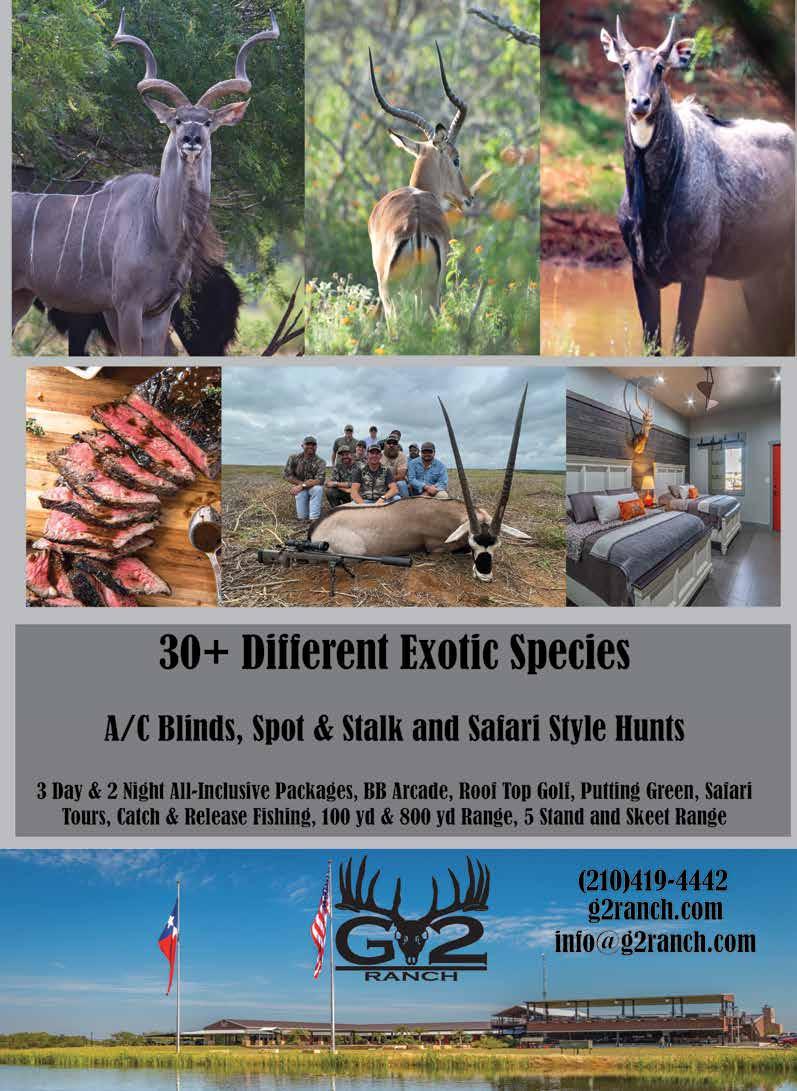

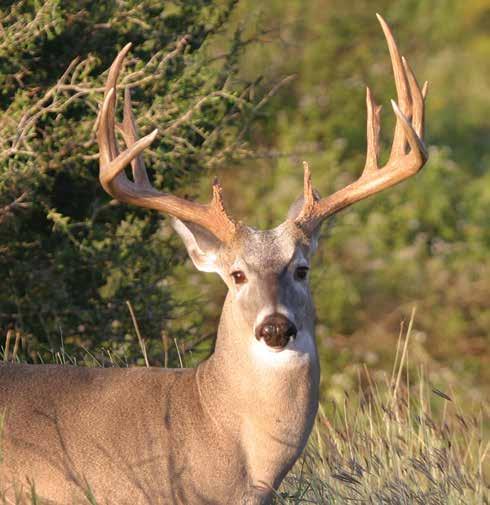

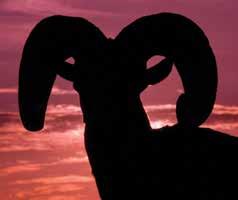


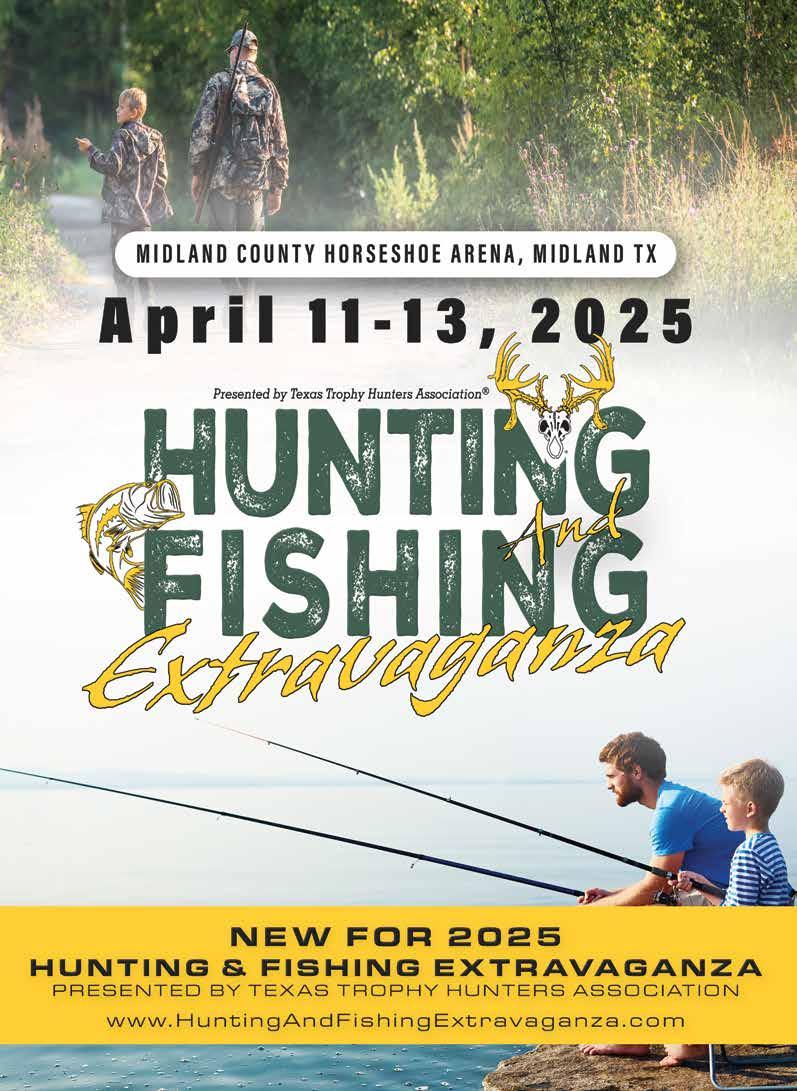


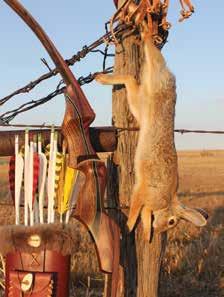
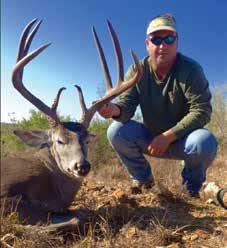

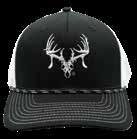
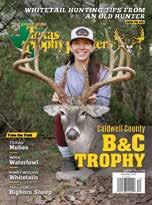

Attention, hunters. Your vote counts, too. Don’t forget to vote in this election. If you must be in a deer blind instead of a voting booth on Nov. 5, please go vote early. It’s your civic duty to participate in the democratic process. Besides, if you don’t vote, you really can’t complain about the candidates or the results afterwards.





By Horace Gore
Debbie Keene is a pioneer of our hunting heritage. A seasoned Texas whitetail hunter, Debbie is close to a lot of deer hunters in her dual role as executive editor for The Journal of the Texas Trophy Hunters and advertising production manager.
For the last 18 years, Debbie has dealt with outdoor advertising and putting together the best hunting/outdoor magazine in the Southwest. She was a regular at the Hunters Extravaganza Annual Deer Competition for many years, taking care of much of the paperwork and connecting with the visiting crowds and enlisting the assistance of her family to run the contest.
Debbie was born in San Antonio, but her parents moved to Kirby when she was 5 years old. She went to grade school in Kirby and to Judson High School. She and Buddy Kusenberger grew up together in Kirby—where everybody knows everybody—and started dating when Debbie was a freshman in high school. When she was about 15, Buddy asked her to join his family on her first deer hunt.
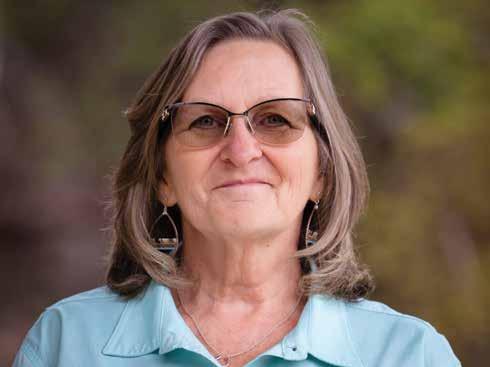
staff, I moved on to Builders Square, a new company formed from ex-Handy Dan employees. I worked for them for 11 years.”

Debbie had never hunted before, but her father had let her shoot with his shotgun. As a police detective, he showed Debbie how to shoot a pistol. That first deer hunt was near Harper, where Debbie hunted with Buddy and got her first buck with a Remington .222 Mohawk. Debbie would become a staunch whitetail hunter.
“I graduated high school on Friday and went to work in an advertising office on Monday,” Debbie said. “The agency handled advertising for Handy Dan stores. I worked there for 13 years. When they started closing stores and downsizing office
“Eventually, Builders Square was acquired by a company with headquarters in Virginia. We were not moving away from San Antonio, so I got a job with the Judson School District and worked there for eight years.
“In 2006, I saw an ad in the paper for an advertising position with Texas Trophy Hunters, noting, ‘Hunting enthusiast preferred.’ I answered the ad by giving my work experience and saying, ‘This past season I shot two does and a 10-point buck. Is that enthusiastic enough?’ I got the job!”
Eighteen years later, Debbie Keene has served TTHA well as its advertising production manager, and since 2016 as execu-
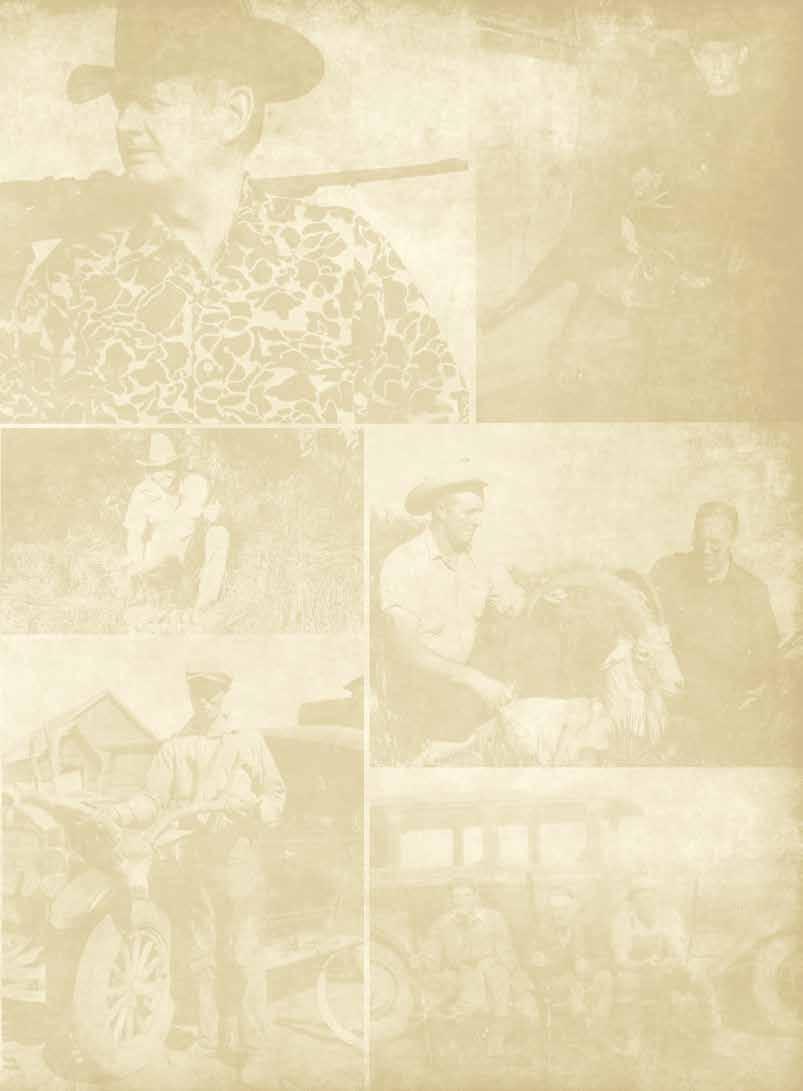

tive editor. The dual role puts Debbie in the forefront of dealing with writers and hunters, while continuing her specialty in advertising.
Before Debbie was old enough to vote, Buddy bought her a new deer rifle—a 7mm Magnum with a custom Del Weiss stock and Mauser action. Since then, Debbie has taken a truck load of deer with that premier rifle. She says, “I’ve been fortunate to have had some excellent deer hunting.”
Debbie and Buddy have one son, Glen, who is married to Trisha (née Hunter), and they have five children. Their oldest Kailyn (JoJo) is 17 and a high school senior; Melody (Dodie) is 15; Waylon (Julio) and Emelyn (LuLu) are twins, 13; and Dillon (Dino) is 12. Phil and Jackie Hunter, who apply all the nicknames, are their maternal grandparents, and all their deer hunting occurs on the Hunter’s Charco Marrano Ranch in La Salle County. The entire family are deer hunters, and five B&C bucks grace their walls.
Debbie and Buddy also have a daughter, Kristal. She and George Martinez
have two children: Alyssa, 19, a college sophomore; and Emily, 8, a third grader. Alyssa is an avid softball player and deer hunter.
By the number of grandchildren, you can see Buddy and Debbie spend most of their deer season hunting with the kids. All but Emily have killed bucks on Charco Marrano with Debbie and Buddy during the last 10 years. Emily is chewing on the bit to get her first deer.
Debbie has taken some very good bucks on the ranch with her custom 7 Mag. She took her best buck in 2008, which appeared as a story in The Journal. Debbie took another outstanding buck in 2020, but now she takes a .243 and hunts with the kids.
Debbie and Buddy love fishing, too. For many years, they’ve had a nice fishing boat and have spent a lot of time on Falcon Lake, Choke Canyon and Lake Amistad. In younger days, they fished a lot on Lake Dunlap in New Braunfels. “We like to go to a lake and check out the fishing!” Debbie said with a grin.
Today, Debbie plays an important role at TTHA. She’s dedicated to promoting hunting in Texas and has put a lot of effort toward that end. For that reason, we call Debbie our friend and cohort, and we’re proud to present her as a pioneer of our hunting heritage.
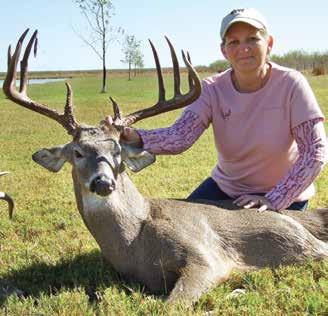
Do your part to preserve our hunting heritage. Share your passion with the next generation. Pass the torch.


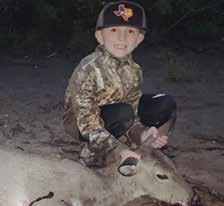
How do you pass the torch? Share your photos with us. Send them to editor@ttha. com. Make sure they’re 1-5 MB in file size.



Journal Editor Horace Gore, Texas Trophy Hunters Association, and friends have published a book that celebrates Gore’s memoirs and the 50th Anniversary of TTHA. The colorful 288-page hardback volume, titled “Stringtown to the Kokernot,” gives a lively account of Gore’s young life in Arkansas and his two careers since migrating to East Texas in 1945.
“I’ve been lucky,” Gore said. “I came from 1933 Depression poverty in the Stringtown community of Sevier County, Arkansas. With some decisive breaks in life, I have enjoyed the best that Texas can give to an immigrated Aggie.”
The new book dwells on Horace’s teen years in East Texas, Texas Parks and Wildlife Department, TTHA, and 22 years on the Kokernot Ranch in Gonzales County. The one-of-a-kind autobiography was funded by friends of Gore and TTHA.
Gore grew to age 12 in rural Arkansas, and eventually came to Texas to become a hunter, gun enthusiast, wildlife biologist, and writer. After high school at Hooks, in Bowie County, he attended Draughon’s Business College in Dallas before serving two years in the Army at Fort Hood.
After the Army, the GI Bill took Gore to Texarkana Junior College and Texas A&M University where he majored in wildlife science, and later join an elite group of wildlife biologists in the Texas Game and Fish Department—soon to become TPWD.
The Aggie became enamored with white-tailed deer, Rio Grande turkey, and
bobwhite quail, to become somewhat an authority on these wildlife species. He has been a speaker and writer about the biology and hunting of these three important icons of Texas wildlife.
Gore’s careers with TPWD and TTHA have been meritorious and eventful. “I have always tried to do my best, while enjoying life to the fullest,” Gore said. “I somehow managed to weather every storm, and came out smelling like a rose.”
In 1993, Gore’s friends sent him into retirement with a big wingding retirement party. The rambunctious affair was attended by a large crowd of his friends to celebrate his 33 years with TPWD.
After retirement, Gore moved to the Kokernot Ranch in Gonzales County in 1995. “Another good decision for the next 22 years,” he said. Shortly after moving to the ranch, Jerry Johnston asked Gore to take the job of editing The Journal of the Texas Trophy Hunters, along with other duties with the new Trophy Hunters TV series. He commuted to TTHA from the Kokernot Ranch for 22 years.
Gore spent an exciting second career in Gonzales County. “Some of the best years of my life, among the best people in Texas,” Gore said. His 33 years with TPWD, and 29 years with TTHA, gave him many opportunities to meet people and hunt two Americas. His writings influenced a 2021 book, “Texas Trophy Hunters—Under One Cover,” and now, his autobiography. Both volumes have a lot to say about TTHA and the wildlife of Texas, Mexico, The Rockies, and Argentina, in ways only Gore can describe. See page 27 to order Gore’s new book.
The “Wildlife Movement Through Partnerships Act” introduced in late June is an important milestone in the improvement of habitat management.
Sen. Alex Padilla (D-California) and U.S. Rep. Ryan Zinke (R-Montana) lead the bill in each chamber and hold key committee seats to enact and fund the non-federal habitat improvement projects directed in the bill. U.S. Rep. Don Beyer (D-Virginia) is a co-sponsor with a longtime champion of wildlife migration.
The Wildlife Movement Through Partnerships Act transfers Interior funds from two agencies—Fish and Wildlife Service and Bureau of Land Management—to the National Fish and Wildlife Foundation for distribution as grants for improving habitat in areas where wildlife migrate or move regularly. This formalizes the discretionary program at Interior that began in 2018 under then-Secretary Ryan Zinke’s Order 3362.
The program has proven since its inception that non-federal habitat projects are effective and respectful of property rights and multiple-use management of federal lands.
“The Boone and Crockett Club strongly supports the Wildlife Movement Through Partnerships Act”, said Tony Schoonen, CEO of the Boone and Crockett Club. “This bill is the natural next step to formally extend the last 5 years of successful habitat improvement under the Interior Secretary’s Order 3362. The bipartisan leadership of Senator Padilla and Representative Zinke is expanding the number of species and areas of habi-
tat that will benefit. The Club is proud of the teamwork among sportsmen and other partners that helped develop this important bill.”
The bill also allows a share of the FWS Partners for Wildlife Program to be expended directly for eligible migration
projects and for the US Geological Survey to assist states in developing maps of critical movement areas.
“Wildlife migration and movement have long been a priority,” Schoonen said. “In the West, big game is the biggest food source for entire ecosystems, and
A new study from Tel Aviv University identified the earliest appearance worldwide of special stone tools, used 400,000 years ago to process fallow deer. The tools called Quina scrapers—after the site in France where they were first discovered— were unearthed at the prehistoric sites of Jaljulia and Qesem Cave in Israel. The tools have a sharp working edge shaped as scales, enabling users to butcher their prey and also process hides.
According to researchers, ancient hunters were forced to make technological adaptations to hunt, butcher, and process much smaller and quicker game—fallow deer. The study also found the unique tools were made of non-local flint procured from the Mountains of Samaria, which probably also served as the fallow deer calving area, about 20 km east of Jaljulia and Qesem Cave.
Researchers hypothesize that Mounts Ebal and Gerizim (near Nablus of today) were considered a source of plenty and held sacred by prehistoric hunters as early as the Paleolithic period. Vlad Litov and Prof. Ran Barkai of Tel Aviv University’s Jacob M. Alkow Department of Archaeology and Ancient Near Eastern Cultures led the study. The scientific journal Archaeologies published their paper.
The researchers said for about a million years, starting 1.5 million years ago, early humans used stone scrapers to process hides and scrape the flesh off the bones of mostly large game. In the Levant, they mainly hunted elephants and other large herbivores. But about 400,000 years ago, the elephants disappeared, so hunters turned to hunting fallow deer.

the movement of big game distributes protein like circulatory system. Ensuring habitat quality along these routes is the key to big game survival and their ecological role.”
The bill also outsources the work from
“Clearly, butchering a large elephant is one thing, and processing a much smaller and more delicate fallow deer is quite a different challenge. Systematic processing of numerous fallow deer to compensate for a single elephant was a complex and demanding task, which required the development of new implements. Consequently, we see the emergence of the new Quina scrapers, with a better-shaped, sharper, more uniform working edge compared to the simple scrapers used previously.”
The study relies on findings from an excavation at the Jaljulia prehistoric site next to Highway 6 in central Israel, probably inhabited by humans of the homo erectus species, as well as evidence from the nearby Qesem Cave. At both sites the excavators discovered many scrapers of the new type, made of non-local flint whose nearest sources are the western slopes of Samaria, to the east of the excavated sites, or today’s Ben Shemen Forest to the south.
Prof. Barkai adds: “In this study we identified links between technological developments and changes in the fauna hunted and consumed by early humans. For many years, researchers believed that the changes in stone tools resulted from biological and cognitive changes in humans. We demonstrate a double connection, both practical and perceptual.

“On the one hand, humans started making more sophisticated tools because they had to hunt and butcher smaller, faster, thinner game. On the other, we identify a perceptual connection: Mounts Ebal and Gerizim in Samaria, about 20 km east of Jaljulia, were a home range of fallow deer and thus considered a source of plenty.
Litov explains: “In this study we tried to understand why stone tools changed during prehistoric times, with a focus on a technological change in scrapers in the Lower Paleolithic, about 400,000 years ago. We found a dramatic change in the human diet during this period, probably resulting from a change in the available fauna: the large game, particularly elephants, had disappeared, and humans were forced to hunt smaller animals, especially fallow deer.
“We found a connection between the plentiful source of fallow deer and the source of flint used to butcher them, and we believe this link held perceptual significance for these prehistoric hunters. They knew where the fallow deer came from and made special efforts to use flint from the same area to make tools for butchering this prey. This behavior is familiar from many other places worldwide and is still widely practiced by native hunter-gatherer communities.”
—courtesy Tel Aviv University, via phys.org

federal agencies to state, tribal, and private habitat specialists, a successful developing pattern for efficient use of public funds. “This bill and parallel efforts with it are showing what bipartisanship and partnership can do for wildlife,” Schoonen said. “The main effort began under the Trump administration, has continued under the Biden administration, and runs in parallel with a 2021 pilot program at the Department of Transportation to fund the construction of wildlife crossings on federal highways. Many sportsmen and other wildlife group have worked together to make all these advances possible.”
Previous efforts to ensure habitat improvement in movement areas attempted top-down, restrictive rules until negotiations produced the more effective current approach.
“We celebrate the bipartisan leadership of Sen. Padilla and Reps. Zinke and Beyer, and we urge strong support and quick enactment,” Schoonen said. — courtesy Boone and Crockett Club
Fernando Gutierrez, wildlife technician at Kerr Wildlife Management Area (WMA), is recipient of the 2024 James
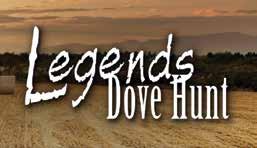
On Sept. 13 and 14, 2024, the Legends Dove Hunt of Abilene, Texas celebrated the 20th anniversary of the highly successful fundraiser that has raised over $5 million for Hendrick Children’s Hospital, a Children’s Miracle Network Hospital in Abilene. Twenty years ago, no one would have thought an annual dove hunt could raise millions of dollars for the kids.
The annual dove hunt began in 2004 when a young boy was thrown from his horse, and received a severe concussion could not be properly treated with the medical facilities in Abilene. The boy was flown to Dallas where he was properly treated and released in good health.
Three community leaders, Lanny Vinson, businessman/rancher; Bob Wiley, MD; and Shannon Cooke, MD, founded the Legends Dove Hunt as a way of developing funds to create a children’s wing of Hendrick Hospital that could handle any medical problem affecting a child. Today, all children with medical needs in the “big country” have charitable accommodations waiting at Hendrick Children’s Hospital in Abilene.
The 2024 Legends Dove Hunt went off with a bang as some 480 dove hunters arrived at the starting point on Friday to sign up, get a souvenir hunt package, and go on a private ranch dove hunt. Saturday morning was enjoyed by dove hunters, after which a chuckwagon lunch was supplied along with day-long clay bird shooting. Saturday night concluded with a special steak dinner and auction for 900 participants at the Abilene Convention Center.
Premier live auction items at the dinner were: a private concert and dinner for 20 with country music’s Aaron Watson at his home south of Abilene; a whitetail hunt with Ted Nugent—a deer hunt that the lucky bidder will never forget; a registered Boykin Spaniel pup not yet born, but will arrive before Christmas; a Georgia plantation quail hunt; and a varmint hunt with legendary varmint hunter, Gary Roberson of Burnham Brothers. On-line auction items were everything from computers to guns, and more.
The dove hunt raised over $480,000, bringing the total charitable contributions over $ 5.2 million for the children’s hospital. Congratulations to Lanny Vinson and the fine folks of Abilene and the “big country” for supporting such a worthy and auspicious cause for the kids. —Horace Gore
“Randy” Fugate Memorial Wildlife Division Professional of the Year Award.
The award, established in 2021, recognizes a staff member who demonstrates a positive attitude toward all aspects of their position, has an ability to provide high-quality customer service, demonstrates the capacity to build trusting relationships and consistently exceeds expectations regarding their work within the Texas Parks and Wildlife Department.
“The combined skills of caring for our natural resources and people alike are an outstanding representation of the trust [Gutierrez] captures and the positive attitude he emanates,” said John Silovsky, TPWD Wildlife Division Director. “His network has grown beyond the landowner, visitor or current colleague to a place of family.”
Gutierrez joined the Wildlife Division in January 1993 at the Kerr WMA and has faithfully served in his role as a wildlife technician for more than 30 years, supporting each project and research effort with an appetite for knowledge and unwavering support for the TPWD mission and the role of the Kerr WMA.
Like the award’s namesake, Gutierrez knows no strangers and represents his projects and TPWD in an outgoing manner, always welcoming the opportunity for engagement. He is often sought out by neighbors, landowners, hunters and many visitors. In doing so, he has taken on additional duties and provides technical guidance for several landowners in Kerr County with habitat recommendations, surveys and deer population management strategies. This is rare and special attribute for a wildlife technician to have and a valued contribution he makes as a division representative above and beyond expectations.
Gutierrez’s attitude is service oriented, and he has positively influenced past, present and future generations of Wildlife Division employees. His past travels and job duties have spanned from the construction of the bison pens in North Texas to pronghorn and bighorn captures in North and West Texas to alligator research and mottled duck captures on the Texas coast.
Gutierrez genuinely enjoys working across the state, meeting new people, and assisting in conservation projects and shared interests in science and learning. —courtesy TPWD
The Texas Parks and Wildlife Department has added a new helicopter to its fleet of law enforcement aircraft. The 2023 Airbus H125 helicopter will allow the Texas Game Warden Aviation Unit to expand their statewide response capacity for natural disasters, search and rescue incidents, air patrols and more.
“Adding a second helicopter with updated technology, Texas game wardens will be able to better serve the people of Texas by responding to natural disaster events and helping game wardens enhance their conservation law enforcement capabilities,” said Brandon Rose, Texas Game Warden chief pilot.
The aircraft is outfitted with the latest law enforcement technology and emergency response equipment, including a rescue hoist, thermal imager, searchlight, public address system, satellite communication, night vision and firefighting equipment. The new aircraft, which cost approximately $6.5 million, was made possible through legislative appropriation during the 87th Texas legislative session.
Based out of Austin, helicopter crews consist of a game warden pilot and a tactical flight officer. Both helicopters in the fleet have the capacity to carry additional game wardens and personnel, including K9 teams, during remote search and rescue missions and natural disaster response. The helicopters are also utilized for a variety of aerial surveillance operations such as showing wardens areas of their county not easily accessible by roads, finding hunters in remote areas and helping patrol for poachers.
“Since the new helicopter went into service in May, we have already assisted wardens and other agencies across the state in a variety of ways and have enjoyed the increased footprint two helicopters have provided us,” Rose said. “We’ve helped search for an evading felon in Bastrop County, assisted with a
theft case search in Jim Wells County, performed aerial patrols as part of Operation Lone Star, searched for drowning victims across the state, helped with riverbed violations, conducted water safety patrols, as well as numerous training exercises and survey flights.”
TPWD has been utilizing aviation assets since 1930. The current unit now consists of two Airbus H125 helicopters and five pilots. Two new Cessna fixedwing aircraft will be added to the fleet in 2025. Additionally, a team of game warden unmanned aircraft operators are stationed throughout the state to help further protect the natural and cultural resources of Texas. —courtesy TPWD
The National Shooting Sports Foundation welcomes the U.S. Fish and Wildlife Service’s (USFWS) announcement that more opportunities will be opened for sportsmen and women to hunt and fish on National Wildlife Refuges (NWR). The USFWS announced that 53 new hunting and fishing opportunities across 211,000 acres on 12 NWRs are being added to the 400 existing NWRs and 35 wetland management areas where hunting and fishing opportunities already exist.
“This announcement of more and expanded hunting opportunities on National Wildlife Refuges is an accomplishment all the firearm industry celebrates, along with all outdoorsmen and women,” said Lawrence G. Keane, NSSF Senior Vice President & General Counsel. “It has long been the goal that hunting opportunities should be opened on public lands and made available to the public. They are the public landowners and the ones who are vested in seeing these hunting opportunities benefit sustainable wildlife conservation. The firearm industry is particularly proud of the conservation investment made by firearm and ammunition manufacturers through the federal firearm and ammunition excise taxes that are the primary driver of wildlife conservation in America.”
NSSF welcomes USFWS’s recent

announcement embracing voluntary pilot programs to educate hunters about alternative ammunition options for hunting. Hunters and recreational marksmen should be free to choose the ammunition that will best serve their needs for ethical and efficient harvesting of wildlife. NSSF is disappointed, however, that today’s opening of additional big game hunting opportunities will restrict the use of traditional ammunition. Wildlife management decisions should be based on sound scientific field data. Restrictions on the use of traditional ammunition should only be imposed where the sound science establishes a wildlife population decline caused by hunters’ use of traditional ammunition and there is no other less-costly remedial measure available to effectively address the issue. Today’s “Hunt-Fish” rule does not set forth such science that would justify restricting the use of traditional ammunition on the newly opened big game opportunities.
NSSF is proud that the firearm and ammunition industry has invested over $27.38 billion, when adjusted for inflation, to wildlife conservation in America since 1937 through the Pittman-Robertson federal firearm and ammunition excise taxes. These taxes, paid by the manufacturers, are dedicated solely for the conservation of wildlife, the habitats in which they thrive, hunter education and construction of new, or expansion of existing recreational target shooting ranges to promote safe and responsible firearms skills, handling and ownership. These 10 to 11 percent excise tax dollars collected for the Federal Aid in Wildlife Restoration Act are specifically designated to be used by state wildlife agencies for conservation and related purposes. Collectively, purchasers of firearms and ammunition, hunters and the industry are the greatest source of wildlife conservation funding.
In 2024, USFWS apportioned over $1.6 billion to the states for wildlife conservation projects, of which $944 million was sourced from Pittman-Robertson excise taxes paid by firearm and ammunition manufacturers. —courtesy NSSF

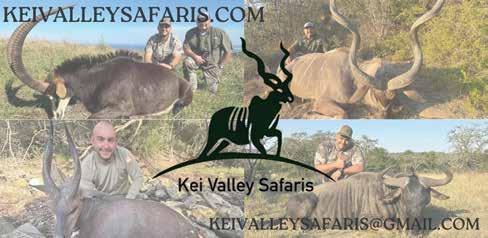

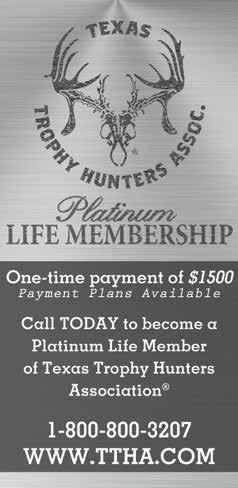
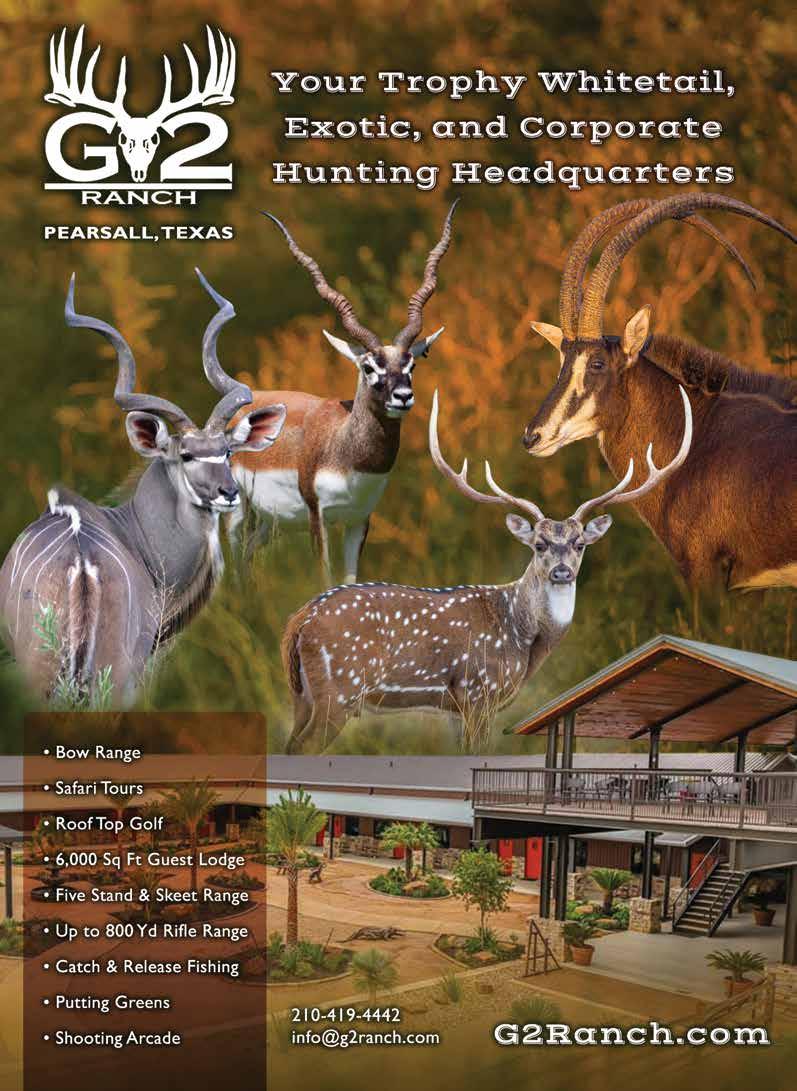

By Dr. James C. Kroll

During my early days of hunting whitetails, I never considered there were deer in the state of Texas east of the Hill Country or north of South Texas. I had only visited the Pineywoods Region of Texas once or twice on family fishing trips to Caddo Lake and Lake of the Pines. However, I quickly grew to love the smell of pine pitch and walking through trees three or four times taller than the live oaks I climbed to hunt deer near Fredericksburg.
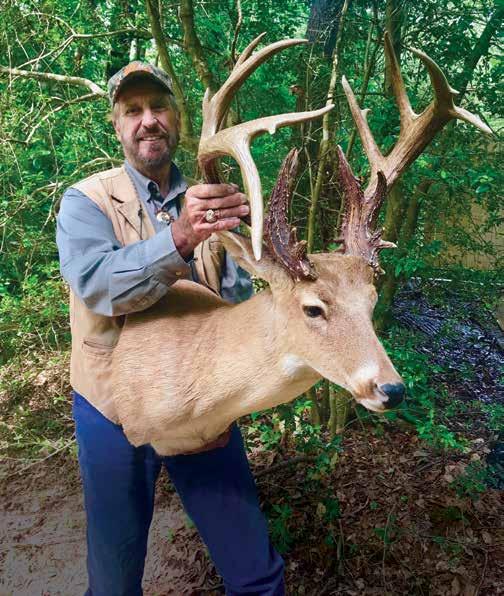
F. Austin State University in Nacogdoches to create a wildlife program in the School of Forestry.
The closest I ever had come to hunting in East Texas was a hunt with a junior high friend on his family’s place near Palestine. We spent three days there, and I never even saw a doe. The years passed and I went to college and received three degrees before I ever saw East Texas again.
In 1972, after receiving my doctorate at Texas A&M University, getting a job as wildlife biologist was pretty tough, so I settled for a football coaching/professor position in West Virginia. About a year later, I was offered a position at Stephen
I was excited to get back to Texas, and looked forward to getting to hunt some of my old haunts in Central Texas. As fate would have it, I decided to spend the rest of my career, studying deer in the Pineywoods; a place I knew little about. In 1974, I founded the Institute for White-tailed Deer Management & Research, and started on a 20-year plan that has continued through four decades.
My first deer hunting experiences had nothing to do with killing a buck. Rather, the job was to capture them so we could use radio collars to get the answers to questions almost
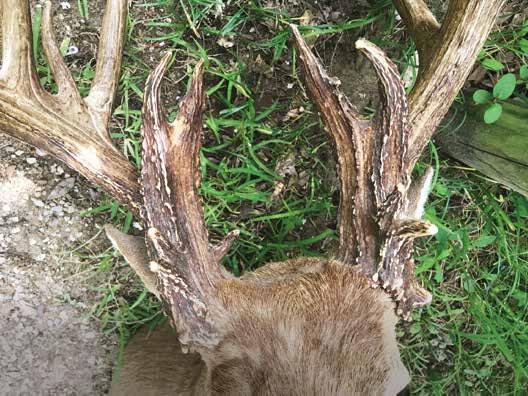
every Pineywoods hunter wanted to know. We had started our research program with what today would be called “focus groups,” made up of hunters, landowners, biologists, and foresters. We asked them, “What do you need to know about deer in East Texas? The two strongest answers related to planting for deer and the behavior of bucks.
In those days, you captured deer using either a drop net or a dart gun. To make it even more difficult, we were trying to capture deer in areas with a thin deer density of one to 60 acres, and a buck to 200 acres. Even seeing a buck, much less a mature buck, in the thickets of the pine and pine-hardwood forests was a challenge, much less capturing one.
When I arrived in East Texas to begin my career, “hunting” deer involved either dogs or carrying a rifle or shotgun in the back window gun rack of a pickup truck. The habitat was nothing like the live oak savannas and corn bait I had grown up with in the Hill Country. To become successful at capturing bucks, I would have to develop and perfect my skills in the “ambush style” hunting strategy that the handful of successful hunters were using in the pine thickets.
I captured my first deer, an eight-point 41/2-year-old buck, after 1,200 hours of sitting in trees with a dart gun. He was

valuable to me, and I remember one day sitting in the back of a truck with a Yagi antenna, tracking that buck while he was traveling along a drainage through a pine plantation. I began to sweat, when I realized the buck was heading right where I knew a hunter was sitting in an oak tree along the drainage. The buck continued down the drainage, then suddenly stopped, turned uphill, and walked completely around the hunter.
In the 50 years since, I have not only studied deer in the Pineywoods, but have studied and hunted them in every habitat in which they flourish. That covers an area from Stewart Island in New Zealand to the very edge of the tundra of northern Canada. After five decades, I am willing to say, with all experience and authority, that a hunter who takes a mature buck in southern forests could easily get a mature buck in any other habitat type with little effort. The southern forest whitetail is, without doubt, the most difficult to kill.
I have always had two goals in my professional life: to teach folks about managing deer; and, how to be a better deer hunter. That’s why I have had a column in The Journal of the Texas Trophy Hunters since the very beginning. So, let me give my Pineywoods deer hunting friends some pointers on hunting
mature whitetails in this daunting geographic region.
The key to consistently harvesting mature Pineywoods bucks lies solely on your willingness to study the deer you hunt. Deer are more than happy to tell you about where they move, why and when, if only you put in a little effort in studying their habits. Our research showed that bucks communicate with each other using rubs of two types—exercise and signpost.
Bucks begin to rub as soon as they strip velvet, mostly to develop the muscles they will need during breeding combat. At the same time, bucks express their social position in the herd by using scents deposited on special signpost rubs. These are made in and around two areas: their sanctuaries and staging
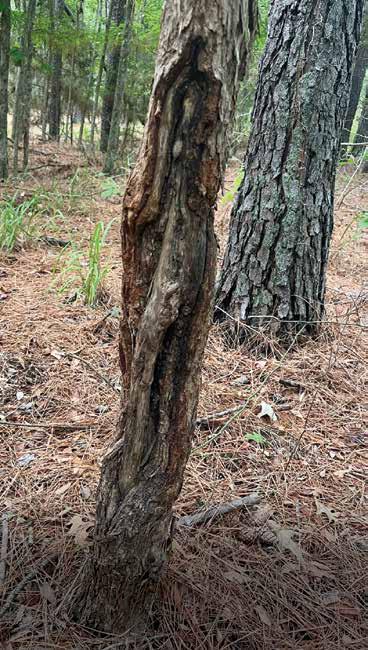
Deer rubs serve to develop muscles deer will need during breeding combat, as well as express their social position in the herd with scents they leave behind on the rubs.
areas. Both of these traits were discovered and revealed to the world as a direct result of our whitetail studies.
We also learned that unless the woods are changed dramatically, bucks will continue to use the same rubs and signposts each year. There also are two-way and one-way rub lines, which are distinguished by rubs on one side of a tree and on two sides.
Signposts are always located either near a mature buck’s bedding sanctuary or in staging areas adjacent to where does feed, most commonly down prevailing winds. Bucks arrive at staging areas just at dark, work their signposts, and remain in the area all night, trying to intercept does on their way to feed. Just at daylight, the mature bucks head back down their rub lines to their sanctuaries to rest until the late evening.
This is nice to know, but how does it help your hunting success? It’s simple—all you have to do is map out the rub lines and staging areas during the winter. Staging areas are recognized as being larger diameter trees in areas with high visibility, that obviously have been rubbed for years. They occur in clusters, not linearly along trails.
Gathering this information may take 2-3 years, but remember I said that rub lines are re-used year after year, unless the habitat is dramatically changed. In essence, you create a map of the buck’s travel in your hunting territory. Once you have that, the next step is to stand back, look at the map and habitats, then decide where the logical places are to ambush a buck.
You have to consider how you can get to that place, and mark each potential location with the preferred wind direction. In the Pineywoods, permanent blinds are the enemy of mature buck hunting. You can easily construct brush blinds or use a treestand. Or, if it is the combat period or the chasing period, you can set up and call bucks to you.
This is what it took me some five decades to confirm as increasing your success rate in the Pineywoods. On Dec. 18, 1987, I put all of this together to harvest one of the largest white-tailed bucks killed in the Texas Pineywoods that year, the Boggy Slough Monster. I had his movements worked out long before that day, without ever having seen him. He was a legend at North Boggy Slough Hunting & Fishing Club, and many hunters had tried to kill him without success.
Using one of the first modern grunt calls, made specially for me by famed duck-call maker Eli Haydel, I set up on the intersection of two rub lines headed into a sanctuary of young pine, gave three grunts on the new call, and waited. It was less than a minute before the huge buck came charging out of the pine thicket.
The Ruger 7mm Mag. roared at the buck less than 10 yards as he turned and dashed back into the thick pines. I got my colleague Bill Goodrum to help me find the buck in the thicket. The old buck ran almost 300 yards with his heart severely damaged. The Boggy Slough Monster was dead, and I had learned how to win.

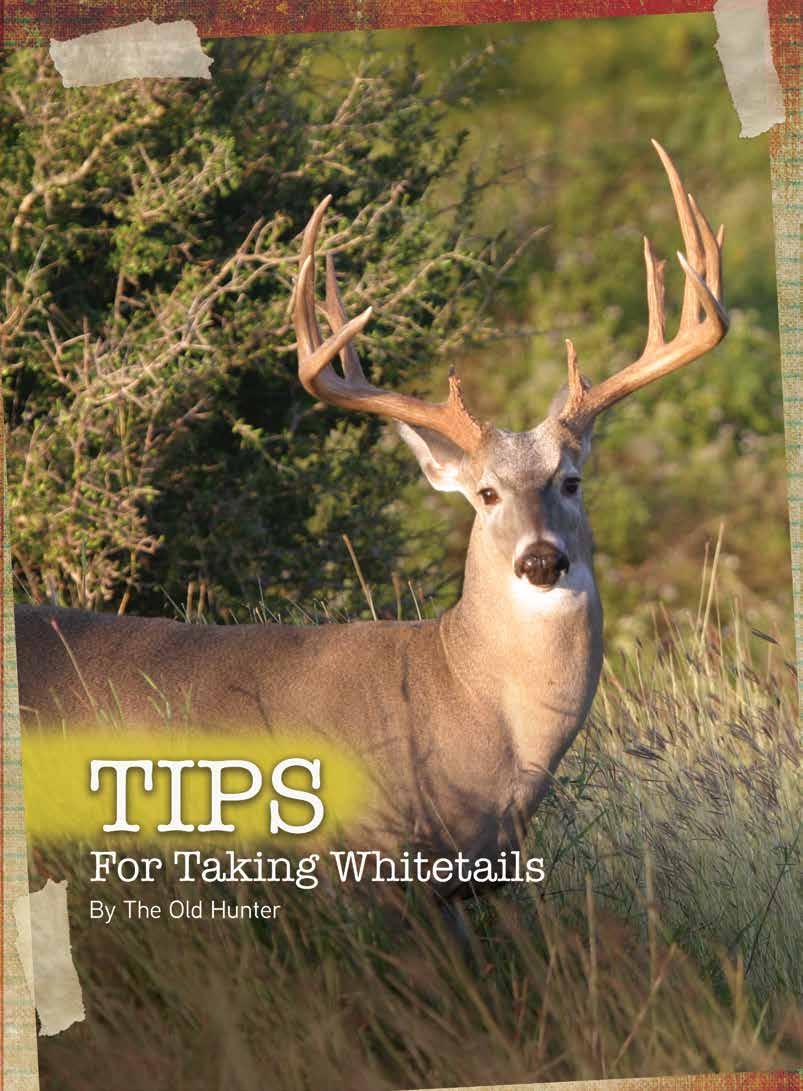
Whitetails are known as “America’s healthy red meat.” Freezing deer meat correctly will ensure you have the best steaks, breakfast sausage, and more.
Some of us old hunters have taken a lot of whitetails through the years, and are well aware of things that affect deer hunting success. Here are a few tips that may help you get a buck or provide some ideas on what to do after you have killed a whitetail.
Many older whitetail bucks are run off by hunters going to the blind on a four-wheeler or ATV. Your best bet is to walk to the blind if possible. If not, have someone take you to the blind before daylight, with no talking. Do your bathroom duties before going to the blind. ATV and four-wheelers left downwind close to blinds smell of gas fumes and exhaust. Leave such vehicles at least 100 yards upwind from the blind.
Most whitetail hunters respect a full moon, and experience very little deer movement at dawn following a bright moonlit night. Tip: Sleep in after a full moon night, and go to the blind about 9 a.m. Take everything you need to stay in the blind all day—right up to dark. Many bucks have been killed between 11 a.m. and 3 p.m. when the moon is full.
Don’t laugh at this rut tip. Hunters have told me that they put doe scent on the soles of their boots before walking to the blind— morning or evening. The doe scent trail left by the hunter often brings bucks within shooting distance from the blind. Think about it!
Human scent lingers in a deer blind, depending on how many hunters are using it. A ground blind has more scent distribution than a high blind. If you’re hunting a mature buck, it’s best not to use a ground blind more than two consecutive times unless you use a scent killer. Pure vanilla flavoring on a rag or clothing will help kill human scent.
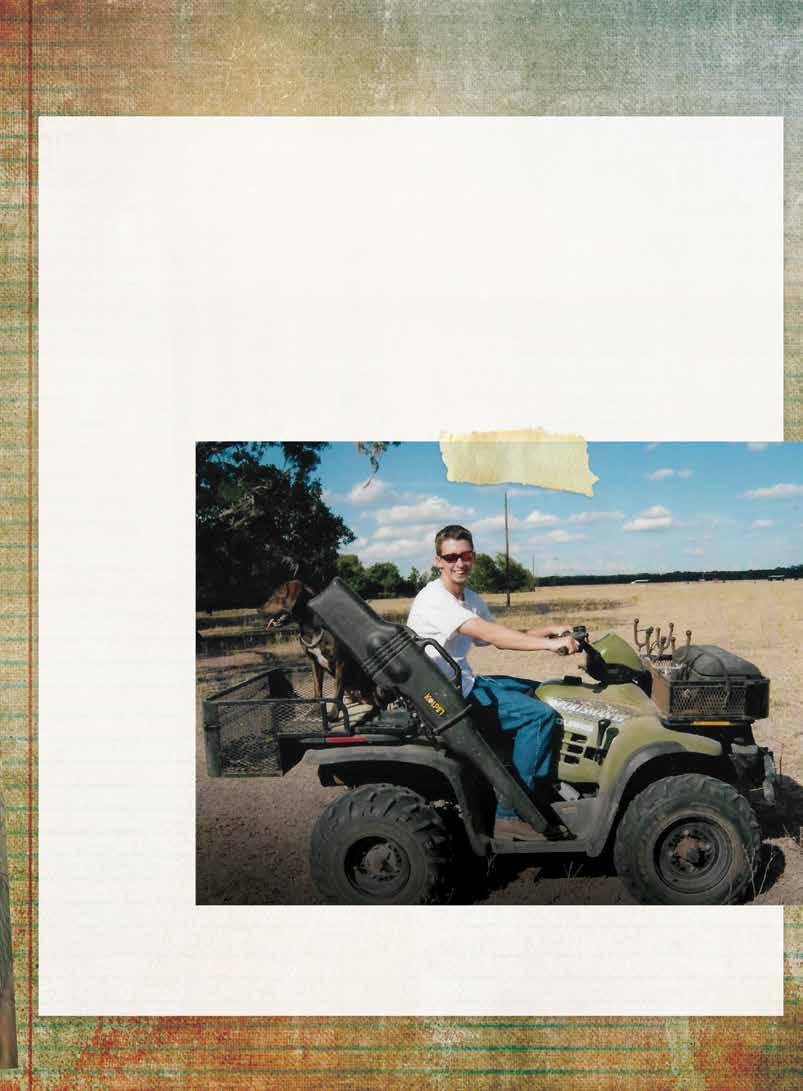
quiet until daylight. As a rule, deer hunters hunting alone do better with gun safety and concentration on shooting.
When more than one hunter in the blind, guns should be unloaded until you get settled. If you must put a shell in the chamber, close the bolt and leave the bolt handle up. Pump and auto rifles should have an open chamber until you get in the blind, and don’t make a lot of noise closing the action. Take care not to drop anything on the blind floor, and use flashlights sparingly until daylight. Keep rifle barrels pointed in a safe direction.
Leaving the morning blind earlier than 10 a.m. is often a mistake, especially if other hunters are in your area. Hunters leaving blinds early often cause deer to move, and the hunter who’s still in the blind at 9:30 could get a shot at a disturbed buck. So, sit quietly in the morning blind as long as you can.
Hunters or youth driving around on a deer lease on an ATV or four-wheeler during the day can run deer off a small
The old hunter recommends keeping ATV or four-wheeler activity to a minimum or not at all during deer season. Such activity can run deer off a small lease.
If you have a hunting companion, no talking. Get into the blind as quietly as you can and leave as little human scent outside the blind as possible. Place guns in a safe place and be
lease, 150 to 300 acres. Recreational activities on a deer leases should be held to a minimum or not at all during the season. On small leases, hunters should walk to everything except picking up a deer.
Hunting companions do better on an evening hunt, because they get into the blind early and let things quiet down before deer start moving. On evening hunts, do not leave the blind before 30 minutes after sundown. Many older bucks are killed during the last few minutes before dark.
A flashlight might be needed for evening hunts, so carry one or keep one in the blind. Bucks killed at dusk should be handled the same as a buck killed at daylight, field dressed and hung to cool as soon as possible.
A deer lease will usually have a grade of deer from poor quality to high quality, and the hunter needs to know what the hunting area has to offer. The hunter who consistently passes up a good buck —when that’s the best deer on the place—is not very smart. Moral: Know what kind of deer you have and don’t pass up the best buck. Trail cameras will tell you about your deer.
Deer should be shot outside the feeder fence, if possible. Once you decide on a buck, shoot it before it jumps into the pen—otherwise it must be lifted over the feeder fence. Bucks leaving the feeder pen may not stop for a good shot, so don’t hesitate too long. A walking buck can be stopped by a slight noise or cough to get the deer’s attention for an immediate shot.
With two hunters or more, and one shoots a buck early, stay in the blind. A dead buck won’t prevent other deer from coming to the feeder. Remember that an outside disturbance at the blind may mean 30 minutes to an hour goes by before deer will return, so don’t leave the blind for any reason until you are through hunting.
Two hunters can follow the blood trail of a wounded buck. A gut-shot buck bleeds very little outside the stomach cavity, and often leaves a spot of blood every few feet. Blood trails should be followed in good light.
Find a spot of blood and one hunter stays while the other hunter looks for another spot. The first hunter who is standing at the blood spot does not move until the second hunter finds another blood spot. This is continued as long as the trail can be followed or until the deer is found.
Whitetails can be killed from a blind/feeder with a number of rifles from .22-250 to .30-06. Recoil shy hunters do well with .243, .25-06, 6.5 Creedmoor, and 7mm-08. No need for using a Magnum when hunting from a blind, and shot placement is the key to success. Always shoot the rifle you shoot best!
Scopes will vary, depending on the shooter. Most hunters want powerful scopes that aren’t needed when hunting from a blind. Any good 4-power scope is all that’s needed when hunting from a blind, and if you have a 3-9X variable scope, keep it on no more than 4-power when you’re hunting. Binoculars are good for looking, while scopes are good for shooting.
Deer hunters need a sharp 3-4-inch knife. Take the deer away from the blind and feeder to field dress before going to camp or home. It’s easier to gut a deer on the ground than one that’s hanging, so learn to gut them on the ground. On a buck, cut the hind leg scent glands off after you gut the deer. Clean
the knife blade or use another knife to cut on edible meat.
A deer can be skinned, covered securely with a gauze buck bag, and hung in the shade for 3-4 days with no problem. If there’s no buck bag, leave the hide on and wipe the inside dry. Leave the deer hanging away from the sun and rain. Any bot fly eggs will be inside the cavity, and can be washed off later. If you see large bot fly larva under the nose of a hanging
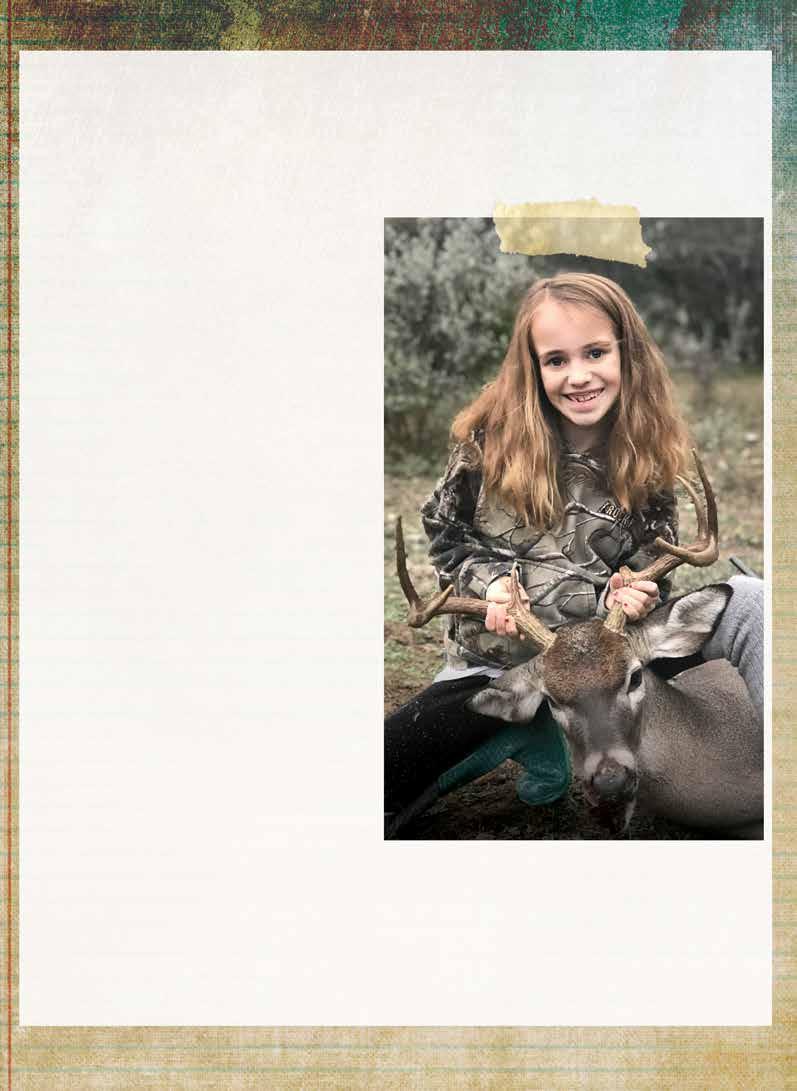
The most important tip for young and old hunters: always practice safety.
deer, don’t fret. The larvae come out of the deer’s nose and are harmless.
Whitetails are known as “America’s healthy red meat.” If you care for a deer correctly and freeze the meat correctly, you will have some of the best steaks, stew meat, jerky, breakfast sausage, and hamburger that is available today. If you have kids, make a lot of hamburger—good for a variety of menus that kids love.


At an early age, Chai pursued her dream of becoming an Olympic figure skater. But a knee injury sidelined that pursuit. Little did she know it would lead her down the path to the sport of hunting.
Hunter recruitment is of utmost importance to the future of deer hunting. Introductions to the sport come in a variety of ways and occur at different stages of life for many. The fortunate are introduced to deer hunting at an early age, while others must be shown the way. The Balke family of Brenham loves to hunt, but it hasn’t always been that way.
For years, Chai Balke was content watching as her husband, Nick Balke, and sons, Wyatt and Eli, enjoyed the thrills of hunting. Nick grew up in a family of hunters, so it has always been second nature to him.
“I remember reading every hunting magazine I could find when I was a kid,” Nick said. “I wanted the boys to have the same experience, so I began hunting with them when they were young.” Wyatt is now 12 years old, and Eli is 10. Both boys bagged their first bucks when they were about 8 years old, and since then, both have managed to take a buck every season.
“I always encouraged Chai and made the opportunity to hunt available to her, but she never showed much interest,” Nick
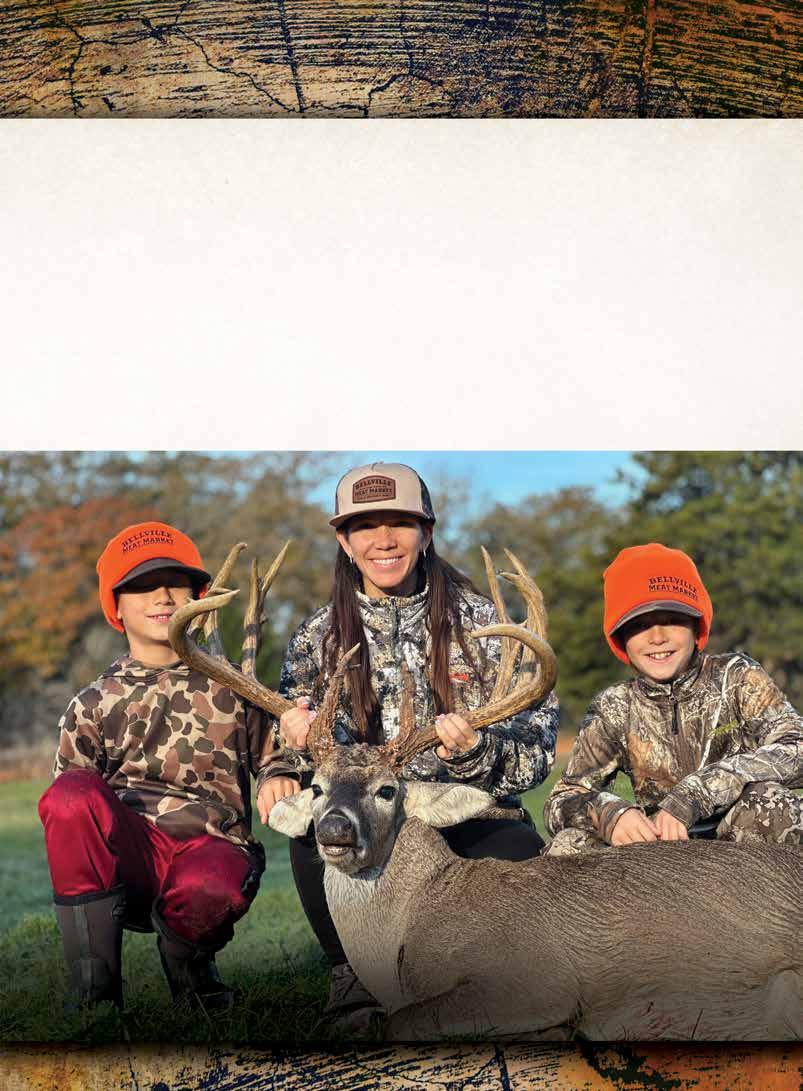
said. Chai enjoys spending time outdoors and loves to hunt shed antlers. “I really like to see the boys in their element. They belong outside exploring. It’s their happy place,” Chai said. “I never thought I’d be a hunter. The only things I’ve ever wanted to kill were spiders and cockroaches,” she said in jest.
While her path brought her to this place in life, it started out on a drastically different course. Chai was born in Thailand and spent her formative years there before her family moved to Southern California. “I spent my spare time at the beach,” she recalled.
Chai began competitive figure skating at an early age and pursued her dream of qualifying for the Olympics before a knee injury sidelined her. Growing up in Southern California in the world of competitive figure skating is an unlikely path to the sport of hunting.
Last season, at the urging of family and friends, Chai decided it was finally time to try her hand at deer hunting. “The boys kind of challenged me, and I thought if they can do it, then I
can too,” she said. “I guess I had been watching Nick and the kids, and finally felt comfortable enough to give deer hunting a try.”
As the season approached, Nick helped Chai practice shooting a rifle. “She was a good shot, and it helped build her confidence,” Nick said. “She could shoot a two-shot group about the size of nickel.” The boys couldn’t understand how she could shoot that well, but they were, without a doubt, proud of their mom.
Excited, and with high anticipation, Nick and Chai set out to get her first buck. “We started hunting a wary old buck that we’d only seen a few times on the trail cameras. For the most part, he was nocturnal, but was a beautiful deer and well worth the wait,” Nick said. And wait they did. The two would hunt about 25 times before finally getting a chance at the huge buck.
Their luck finally changed early one morning. They arrived at the blind well before daylight and settled in. “We had been hunting so hard, and I remember thinking he’s not going to show,” Chai said. “We could make out dark shapes of deer feeding and as the sun came up, we saw a big buck along the tree line.” Nick studied the deer through the binoculars before quickly blurting out “It’s HIM!”
Chai put her rifle out the window of the blind and got ready to shoot. There were several other deer around and it proved difficult to get a good clear shot. “I was really nervous but focused on getting the buck” she said.
Chai waited several minutes, while the buck followed a doe

Chai’s buck measured 217 gross. Not bad for a firsttime hunter.
off to the side and provided the opportunity. “I waited for him to turn and took the shot,” she said. The distance was about 90 yards, and the buck lunged forward when the bullet hit its mark. Nick recalled how the buck reacted when Chai shot. “He tried to keep up with the other deer as they scattered, but stopped and fell over within sight.”
Congratulatory hugs were exchanged as the excitement took over. “We waited a few minutes before going over to take a look at my buck,” Chai said. “When I walked up to him, I couldn’t get over how big he was. He was a huge buck and such a pretty deer!” They admired the trophy for a few minutes before leaving to get their boys and some hunting friends before returning for a photo session.
Upon their return, the boys couldn’t get over how big their mom’s deer was. “Good job, mom! He’s huge!” they yelled out in unison.
“Everyone was so proud and excited for her,” Nick said. Memories were made, photos were taken, and a new hunter was ushered into the ranks. Chai’s huge buck was later measured with a gross score of 217. It was the deer of a lifetime in more than one way for the first-time hunter.
“I’ve come to understand hunting, and why people love it so much,” Chai said. “I enjoyed the experience and the opportunity to be able to share it with family and friends. It truly is a blessing, and I look forward to the many future hunting experiences that lie ahead for myself and the family.”
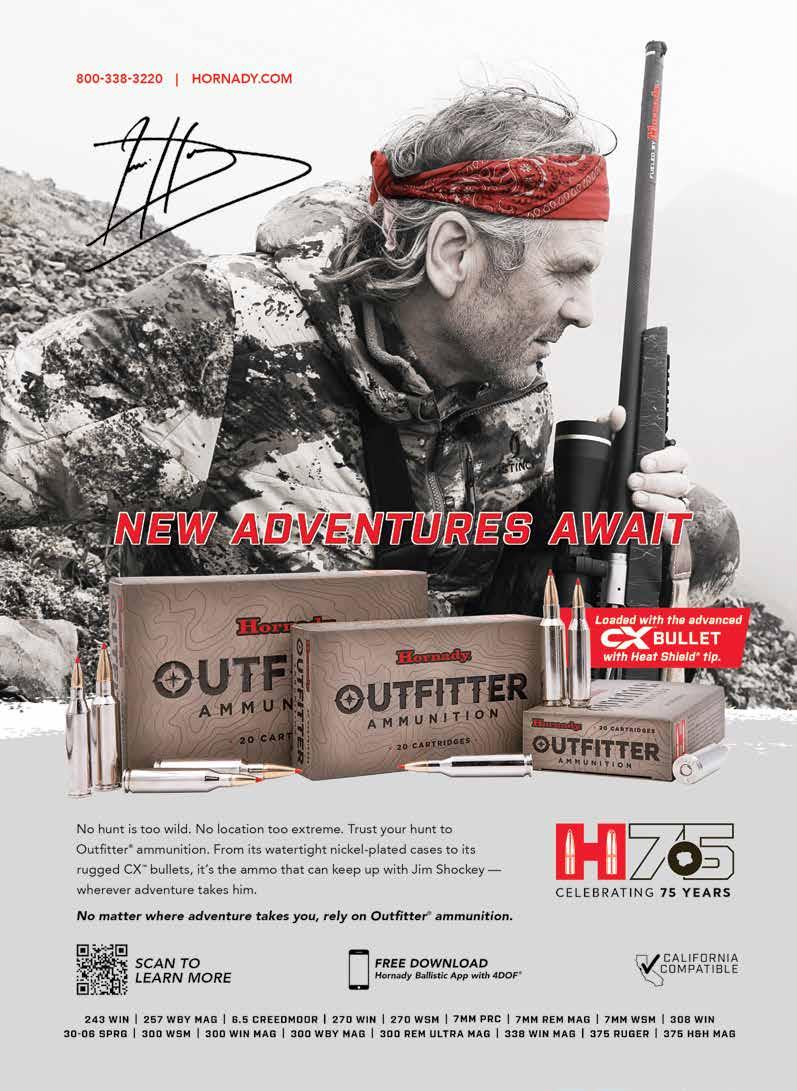
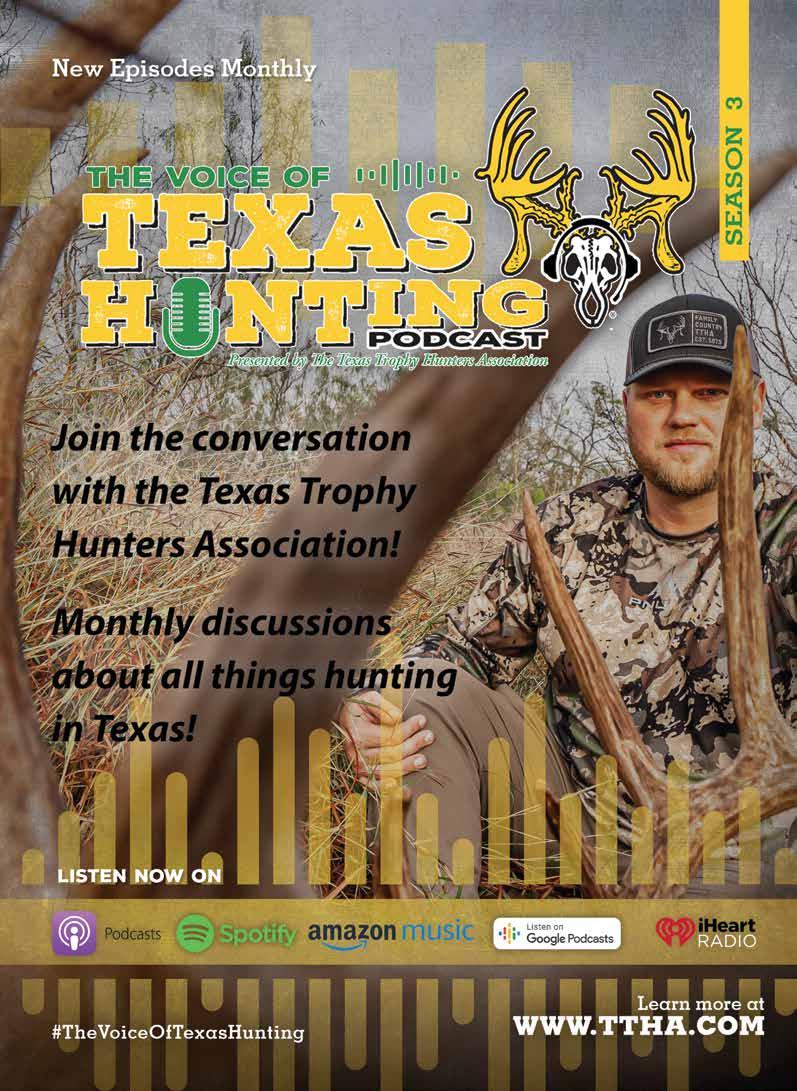
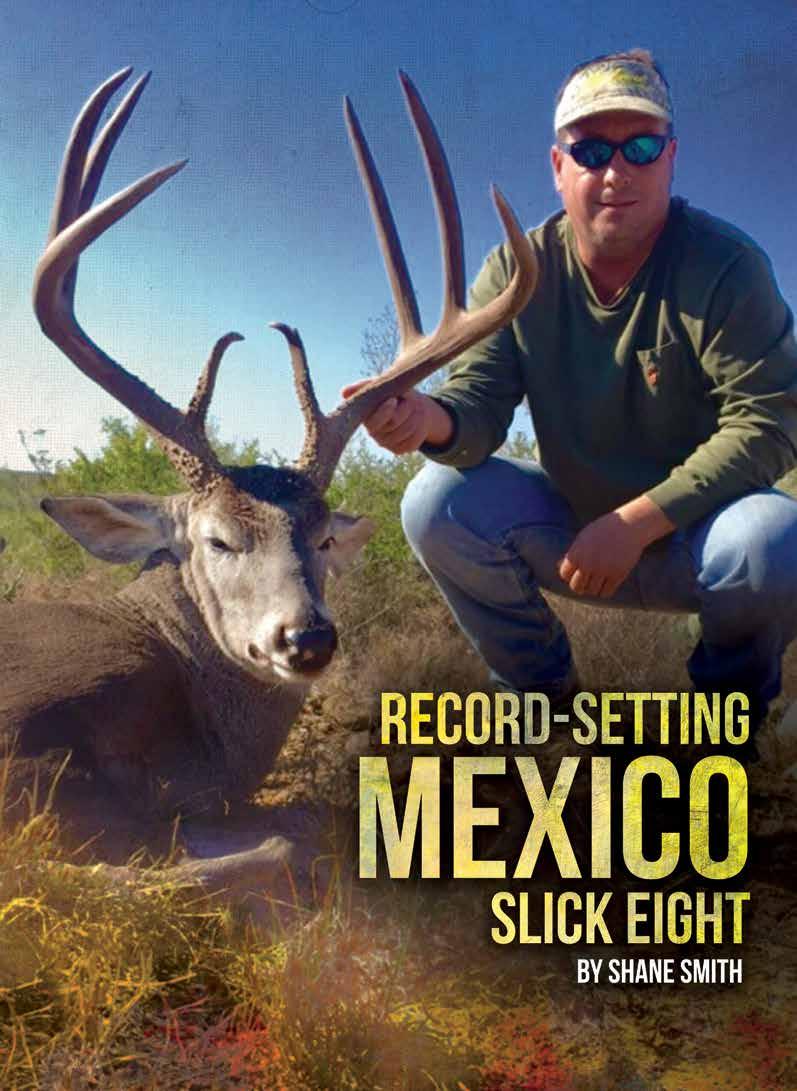
It never occurred to me that I might be able to break any kind of record, especially when it comes to deer hunting. I’m just a regular guy who has hunted all my life. And, while I’ve killed some nice bucks over the years, my best until Dec. 9, 2015, was a 150-class whitetail. On that day I took a monster eight-point whitetail in Mexico that set B&C records at ANGADI in Nuevo Laredo, and Muy Grande at Freer.
In 2013. I was invited to hunt a management deer on a friend’s deer lease in Tamaulipas, Mexico. The ranch had been carefully game managed for years with only mature bucks allowed to be killed. I had been asked to join the lease years before but between my job and family I didn’t have time for a deer lease. As a guest I was allowed to hunt management deer.
In 2014, one of the lease members dropped out due to not being able to spend the required time to use the lease. This time when asked I said yes, after two years of hunting management deer had allowed me to see some awesome bucks.
During the 2013-14 season one of the hunters saw a huge, tall-tined perfect eight-point buck. The whitetail was immediately dubbed “Twin Towers” because his rack went straight up. During the 2014-2015 season the buck was seen again, and looked about the same as before.
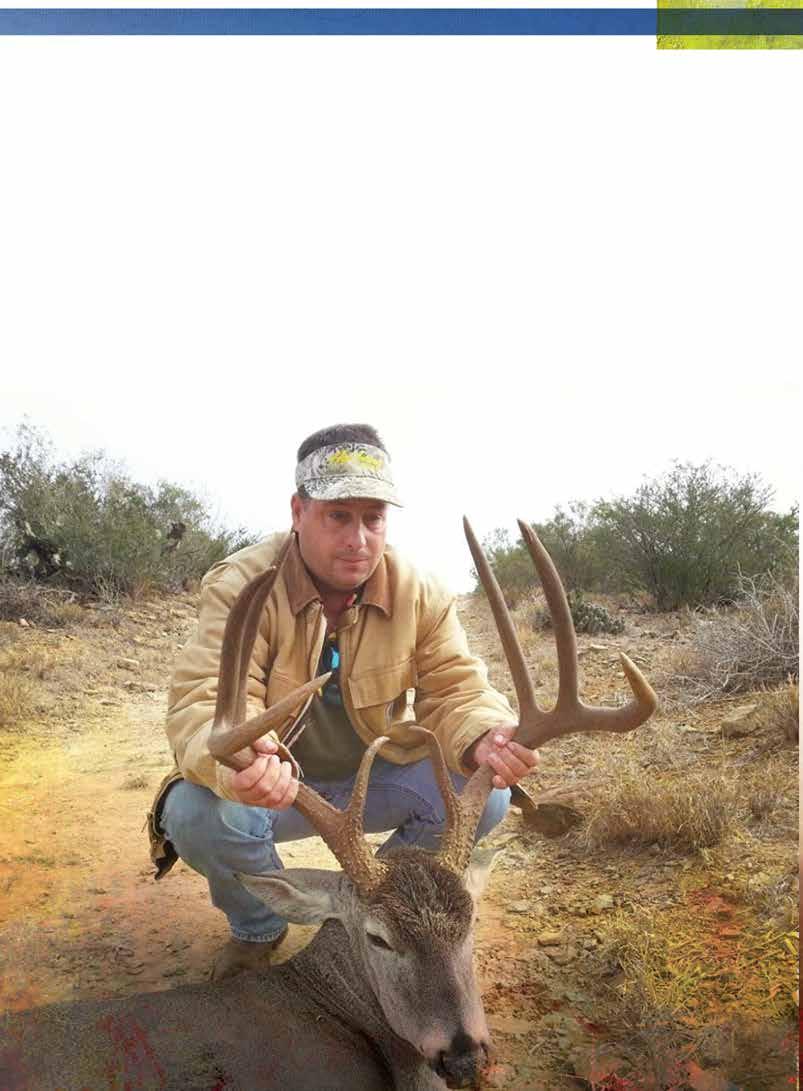
There was much discussion about what Twin Towers would score, and we decided to allow for another year of maturity. The following spring both sheds were found by a ranch hand, allowing us a good look at this buck’s antlers. Allowing for a 17-inch spread, we came up with a gross score of 156. We were all impressed with the perfect eight.
The buck never appeared on any game cameras at protein or corn feeders. He was only seen from one blind that seemed to be a regular haunt. Being the low man of the totem pole, my only choice of hunting areas was one being vacated. As it turned out, this blind was where Twin Towers had been seen the most.
I was ready when the 2015-2016 Mexico deer season opened. I hunted five days straight without seeing Twin Towers or any other mature buck. I had to go home empty handed but not disappointed as many up-and-coming bucks were seen. The hunting manager was guiding a management buck hunter who promptly tagged out, and he decided to sit in my stand. He hoped to get a good look at Twin Towers.
On Sunday morning the manager saw the big eight-point and snapped a cell phone photo. He sent me a text telling me to get my butt across the border as soon as I could—which was Tues -
day. Arriving late on the afternoon of Dec. 8, I corned the senderos but stayed away from the area. Wednesday morning the hunting manager joined me in my stand.
Thick fog rolled in at daylight. You couldn’t see 50 yards, but we toughed it out. Around 8 a.m. we briefly caught sight of Twin Towers as he moved around in the mist. I tried to put my scope on the buck, but all I could see was fog.
About 9:15, the fog began to lift, and in a few minutes it went away. We kept our eyes moving, searching for Twin Towers. Suddenly we spotted him at some distance. After watching and waiting for what seemed like forever, he slowly got closer and stood broadside. I steadied my rifle; I took a deep breath, and squeezed the trigger. The big buck dropped in his tracks, and we got all excited. After congrats and back-slapping, we got out of the stand to see this great eight-point up close.
During my deer hunting career, I’ve taken a lot of Hill Country bucks. Like so many hunters, ground shrinkage hits hard with disappointment as you approach your kill. This was not the case with Twin Towers, and it’s one of the best feelings a hunter can ever experience when the antlers appear

to grow before your eyes! Greed took over a bit as I hoped the massive eight-pointer might break 170 inches.
Rough scoring the rack on the spot showed 171 B&C gross.
To say I was excited is an understatement. Photos were texted to friends, family, and fellow hunters. The celebration lasted a couple of days as I waited for other lease members to arrive so they could see the buck. On the way home I made the rounds of the deer contests: ANGADI, Cola Blanca, Los Cazadores, Freer Deer Camp, and Muy Grande.
The ANGADI scorer said it was the biggest eight-point he’d ever seen from Mexico. Several other contests said the same. Arriving at Muy Grande, Leonel “Muy” Garza declared my buck a new eight-point record holder for his 51-yearold competition. Wow! As I said in the beginning, I never thought I would ever kill a record-setting buck.
The fresh green score put the spread at 18 6⁄8", with main beams 291/4" and 281/2" respectively. The brow tines were both over 6 inches, with G-2s of 12 and 13 inches, and G-3s at 12 and 9 inches. The overall mass totaled 36 inches—quite an accomplishment for a slick eight.
Contest scores varied between 174 and 172 gross B&C. At the Houston Hunters Extravaganza, I won the Best Perfect 8 category. I was disappointed the score was only 1637⁄8 B&C, until Horace Gore reminded me the contest score was net score, not gross. The rack’s right-side scores a bit less, but it’s still an unbelievable trophy to me—the biggest I may ever kill.
Today, Twin Towers adorns my home as a pedestal shoulder mount on a mesquite stump. Almost every time I look at this magnificent slick eight-point, I remember that amazing moment when I walked up to see him close for the first time. To me, a hunter cannot experience a greater feeling.




By Will Leschper
The dawning of a new day along Texas beaches is something to behold. Locating schools of bait fish early in the morning is always a great way to find big-game species, including tarpon.
The Texas coast is an amazing ecosystem unlike any other in the Lone Star state.
The distinctive habitat spanning hundreds of miles from Sabine Pass near the Louisiana state line to South Padre Island near the Mexican border offers the prime vacation locale for countless numbers of Texans during the spring and summer. The draw of cool winds and shimmering waves is obvious for the out-of-town crowds; but if you’re a local like me, a Corpus Christi resident, you know firsthand just how bountiful and productive our Gulf of Mexico waters are in terms of a prime draw all year long: surf fishing.
Fall months bring about thoughts of hunting seasons for more than a million Texas residents and nonresidents, according to license sale figures from the Texas Parks and Wildlife Department: 1,236,677 to be exact in 2023. While those plans typically revolve around white-tailed deer, doves, ducks and host of other wildlife, there also are big-game opportunities for those willing to make a trip down to where the glistening sandy dunes meet the


vast, salty expanse.
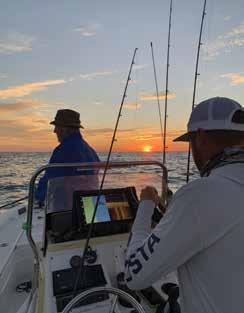
The big three for inshore saltwater anglers –dubbed a “Texas slam” if you catch a keeper of all species in an outing – are speckled trout, redfish and flounder. While you also can catch those fish on the Gulf side, including at jetty systems, there are countless other species that can be had not far from the beach whether you’re fishing from land or from a boat.
From sharks, jack crevalle and tarpon to pompano, whiting and mackerel, there are plenty of options to target, especially if bait fish are running or are schooled up in tight concentrations. These “bait balls” are known to bring in numerous different species that are simply keying on gorging themselves.
The redfish run is among the most amazing sights in
“Working the birds” is a concept used by inshore anglers to locate schooling trout and redfish. It’s also applicable when targeting fish in Texas’ surf zones as birds will congregate around bait fish activity.
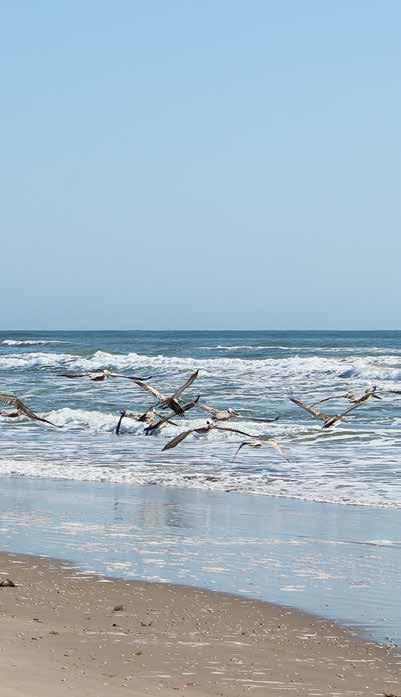
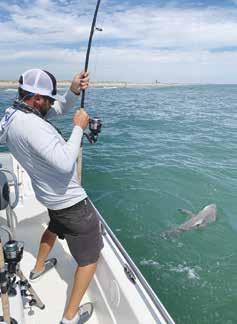

with the oversized red drum tag from your saltwater fishing license. During the fall run, it’s not uncommon for anglers to find nothing but “bull reds,” fish that are well above the slot, and not be able to keep them, which sounds like a good problem to have!
Pompano, also known as cobblerfish, are a common find along Gulf beaches and pass areas. They frequent sandy areas where they pick off sand fleas and other critters that find themselves unlucky enough to be near the bottom. Pompano don’t get large – the average fish is anywhere from 2 to 4 pounds – but the state record is 6.25 pounds and even small ones are superb at the dinner table. There’s also no size or bag limit on pompano, and if you find hungry fish schooled up, you could find yourself in for a long day of fish cleaning.
Anglers targeting “pomps” typically use rigs fished near the bottom featuring small hooks baited with bits of shrimp, which are easier for them to take. Live bait also will produce when you’ve located a school of hungry pompano, and the fish also will hit small spoons, jigs and mullet-looking artificials. Beginning south of Corpus Christi on the beaches of the Padre Island National Seashore, there are miles of suitable fishing locales for anglers targeting pompano, and the farther south you head, the better the fishing typically gets when it cools off.
Whiting don’t grow to the same size as other surf dwellers, but they nonetheless put up a good fight when weighing upward of 2 pounds, especially on light tackle. The ticket to filling up on fillets – there’s also no bag or length limit on whiting – is using natural baits including shrimp and cut bait. They usually are found in schools cruising near the bottom and using enough weight to keep your presentation there is key, especially if the current picks up. Some surf anglers also will use whiting as cut bait for other species, including sharks.
Jack crevalles aren’t fit for eating but can reach 20 or 30 pounds with ease, and a fish that size has almost
Fishing guide Brian Barrera brings a blacktip shark to the surface during a fall outing out of South Padre Island.
Trolling for tarpon in the fall is also a great way to find hungry sharks.
saltwater angling, and they’re in full force along Gulf beaches, jetties and piers during fall months. The Texas state record was plucked from the Gulf in January 2000 and weighed 591/2 pounds. As these fish mature, they move out into the Gulf where they spend much of their lives. That’s a great thing for surf, jetty and pier anglers, and these brawny battlers will take a number of offerings, including cracked crabs, shrimp and bait fish of all sizes. They’ll readily slam live and dead bait, but anglers toting artificial lures should always remember to pack heavy spoons, swim baits and other variations that mimic mullet or croaker.
The daily bag on redfish is three in a slot limit of 20 to 28 inches, though you may keep one over 28 as long as it’s affixed
no equal when it comes to a fight. They also run in schools, targeting bait fish such as mullet, and if you find them, hang on. Cut bait is among your best options for jacks since they always are opportunistic feeders.
When it comes to true big-game hunting at the beach, there’s an old saying that if you saw what was past the second gut in the Gulf you may never go swimming again. Numerous varieties of sharks are much closer than you may think, and they almost always are prowling beaches up and down the coast looking for an easy meal in the fall.
Some notable surf anglers will target jacks specifically to use as shark cut bait, but other species work as well, including large mullet. Stout tackle is a necessity if you’re targeting razor-toothed critters, including wire leaders and a full complement of heavy line. Many anglers who target sharks will employ a kayak to drop their baits out farther than they can cast and then paddle in and put their rods in a holder to play the waiting game.
As you can see, fall and winter provide some of the liveliest opportunities for anglers willing to spend a day at the beach for Texas saltwater fishing pursuits. Most outdoorsmen are thinking about big bucks and lots of ducks right now, but if you’re seeking new big game to hunt, look no further than the surf.
It’s the perfect time to head to the beach.
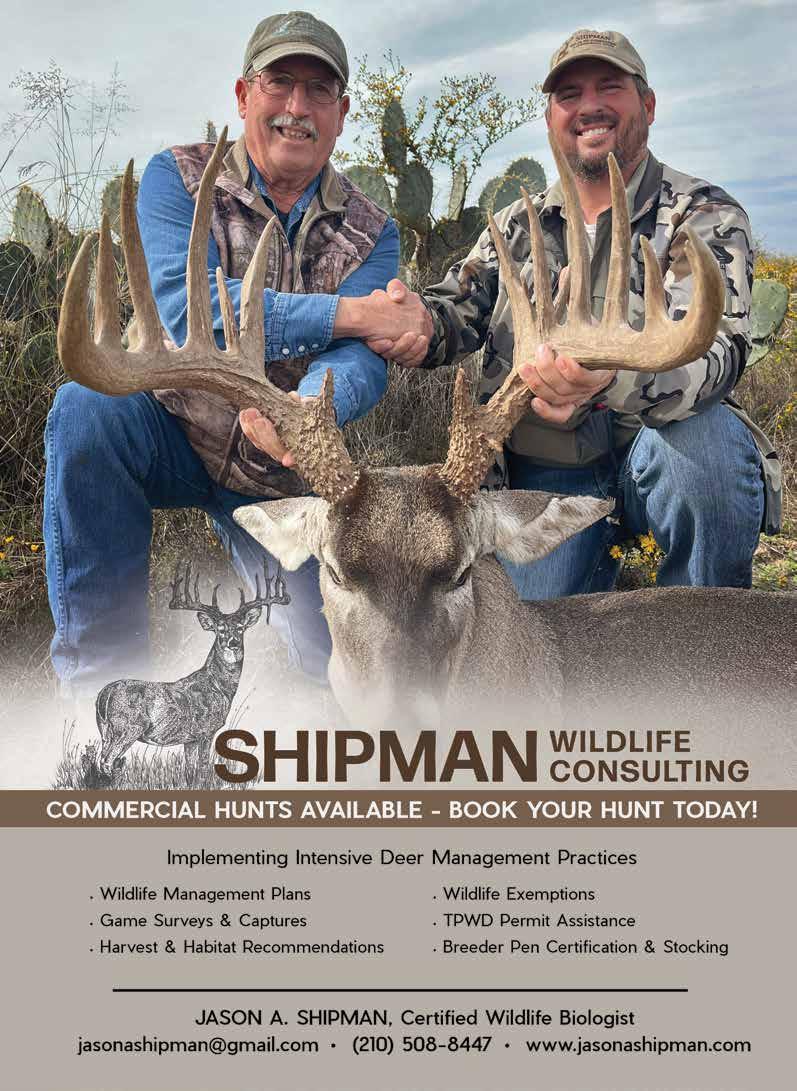

After the drought year of 2022, I was anxious to see what the 2023 deer season would bring, after receiving much needed spring rains. I started camera surveys in midJuly and the first buck pictures that I scrolled though showed a buck starting to grow a drop tine on his left side. A few pictures later I realized that the same buck was sporting a drop on his right side. It was a symmetrical double drop tine deer. I felt like a lottery winner! He promptly got the nickname “Double Drop” or “DD.”
Fast forward to mid-August, and the wide-antlered buck finished out well as a perfect main frame 10 with identical drops below his G-3s. He had been a regular at one spot until things started to dry out and he moved about a half mile to a more reliable water source. He was now living near a low border fence, and I knew the neighbors would start seeing him.
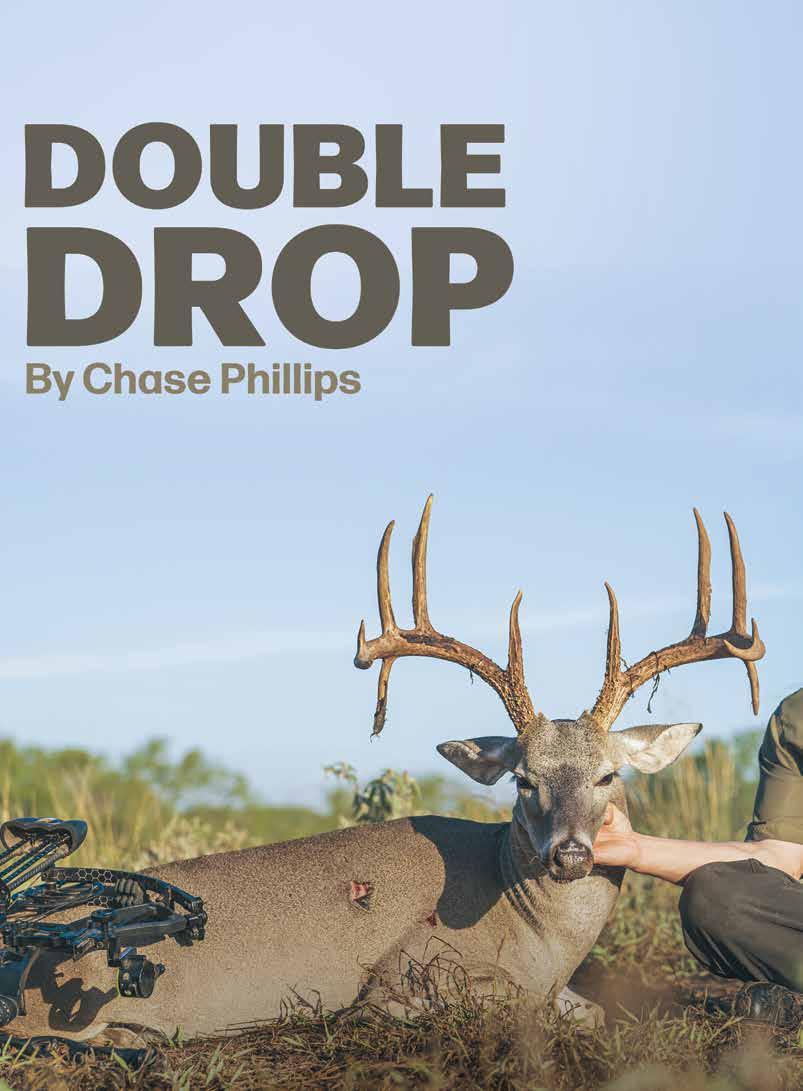
Chase had a most challenging hunt for his buck, “Double Drop,” aka “DD.” The buck survived Chase’s first attempt, but Chase persevered.
When he became a regular at the new spot I knew I wanted to see this buck in person. With my camera in hand, I braved the dog days of summer in a ground blind, but he didn’t show for the first time in a week. I didn’t see him for several more evenings, so I let things rest for a few days until he returned.
I was in my blind one evening as deer started filtering in. I noticed DD’s running buddy appear at the edge of the field, and I knew he had to be close because he was never far from this young buck. I’ll never forget seeing him appear on the field edge for the first time. Over the next few weeks, I saw him a half dozen times.
Bow season was coming, and I started to really pay attention to his movements. I had put out several trail cameras and had a lot of intel on him. He would show up every morning before light at my blind, and then walk over to the neighbors and spend the rest of the morning over there. In the evenings I had him every day on one trail camera.
Just before the season, I had found his water source that was basically a mud hole. With conditions getting super dry the next closest water hole was a third of a mile away. This caused him to spend more time on our property, but I knew he was still visiting the neighbors. All I could hope for was that he hung around long enough on opening morning for me to get a chance at him.
Opening morning, Saturday, finally came and I got settled into my ground blind and nocked an arrow before daylight. Around 6 a.m. I could make out DD’s running buddy and not long after, Double Drop walked out. With several minutes till it was light enough, I was worried that he would leave for the rest of the morning.
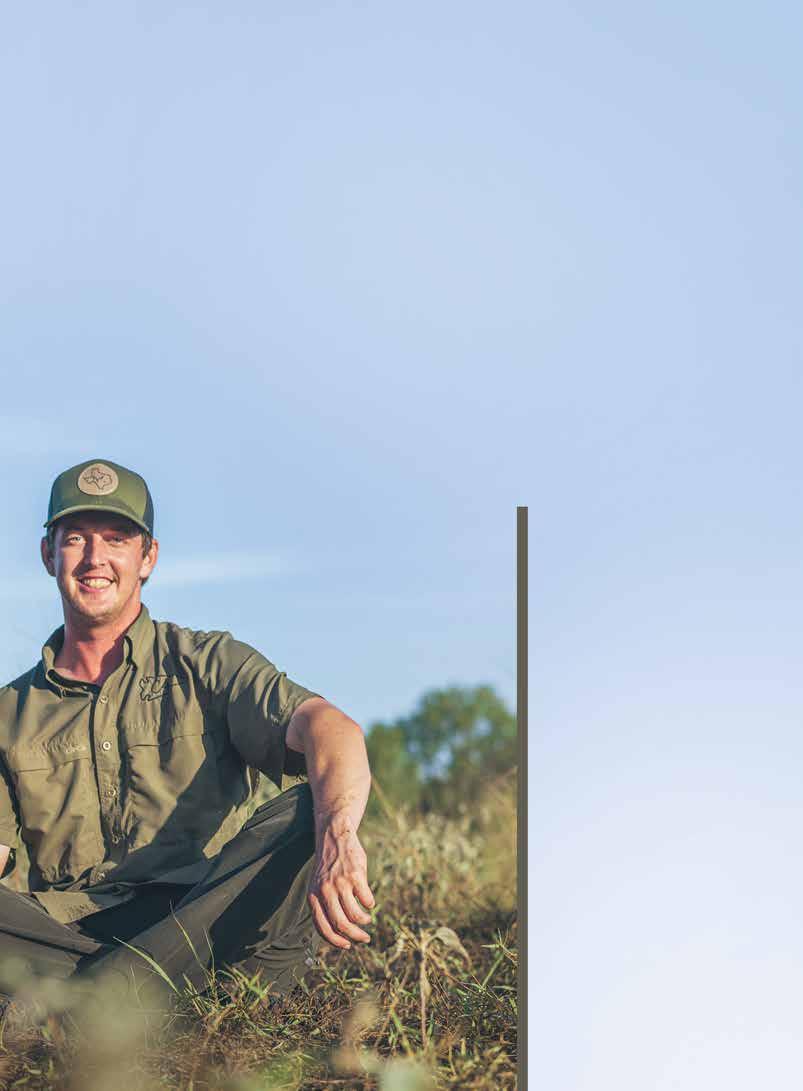
Sure enough, after a few minutes he walked off straight for the fence line. My heart sank because I knew the neighbor would be hunting and would have a good chance at getting him. I wasn’t after any other buck. It was Double Drop or nothing!
About 45 minutes after shooting time, I heard a lot of commotion on the neighbor’s side, and every deer was alert in the field. I knew something had happened across the fence, and thought the neighbor had just killed DD. I got out of my blind and went to my truck and went home. I was so discouraged.
I texted my neighbor, but it wasn’t until lunch time when he sent me a picture. To my surprise, he didn’t get the drop tine buck, but another gorgeous 10-point. He followed up by saying he didn’t see Double Drop, and my hopes were high again for that evening.
I practiced with a few arrows before I headed out for the evening hunt. I got settled in, nocked an arrow, and got my camera set up to film. It wasn’t until sundown when the action really picked up. About 6 p.m., DD appeared on the edge of the field 75 yards away. He headed straight towards me. Every yard he got closer, my heartbeat got faster and louder. I frantically tried to get set up for a shot, as he was now 18 yards away and facing me.
I settled my pin as he fed, head down broadside. WHACK! He whirled and ran as I watched my Luminok disappear and could see the arrow sticking out the other side as he bolted out of the field. I could tell I hit him high, but it looked good as he ran off.
I reviewed the shot on my camera but once again my heart sank. The shot appeared higher than I had thought, and looked like it went right through that area between the spine and the belly—an “open” area that’s not lethal to a deer.
After sending the video to several friends, I received mixed reviews on whether he would be dead. I personally didn’t think it would kill him, but knew I needed to go look for him after giving him some time to expire.
The next morning, before I went to look for DD, I sent Roy Hindes the video and asked his opinion. Roy said he didn’t think his dogs could find the buck, and
the deer would likely survive the arrow. He added there was a good chance the buck would show up again.
I waited until mid-morning before going back to where I shot DD. I went straight to where he had entered the woods and found the arrow right away. It lacked blood and I knew that the chances were slim to find him. I only found two bloody spots, but there was no blood trail. I went home and figured I would give it a day to rest before going back.
On Monday around lunch time, I went out and took a drive around the property looking for buzzards. Again—nothing! So, I went to check trail cameras, and there he was with a visible wound on both sides. He was back and had spent the whole morning at my blind and feeder. It would have been an easy shot if I had been there. I headed back to get prepared to hunt that evening.
That evening was a bust. High winds had the deer on edge, and they just couldn’t get comfortable, and I didn’t see DD or his running buddy. The big buck had looked fine in the trail cam photos, but it did leave me guessing about him.
I headed out to the property on Tuesday morning, not confident about seeing him. I got settled in around 5:30 a.m. At daybreak I could see DD at about 60 yards, walking around fine and wearing a perfect 3-blade broadhead scar high on both sides. Again, I thought he might leave before I could get a shot. He didn’t feed long, and started to walk off.
I figured that he was going to walk away, but he stopped and bedded down at less than 100 yards. I had about 15 deer feeding all around me as DD got back up and headed straight

for the feed at 20 yards. I was waiting, but unfortunately he was eating head on and wouldn’t give me a good shot. This went on for 10 minutes, when he raised his head to chase another deer and turned broadside.
I didn’t hesitate at the opportunity and drew my bow back as quietly as I could. He was quartered away slightly and this time his head was up looking at another deer. I settled the pin. WHACK! This time a much louder impact and the sound of bone as I buried the broadhead all the way through into his opposite shoulder. The shot was higher than I liked, but he dropped in his tracks and expired shortly after.
It’s hard to explain the emotion that I felt, looking at the magnificent double drop tine buck laying in the pasture—a buck that I will remember as the one that almost got away. Few hunters get the opportunity to put two arrows in the same trophy buck.
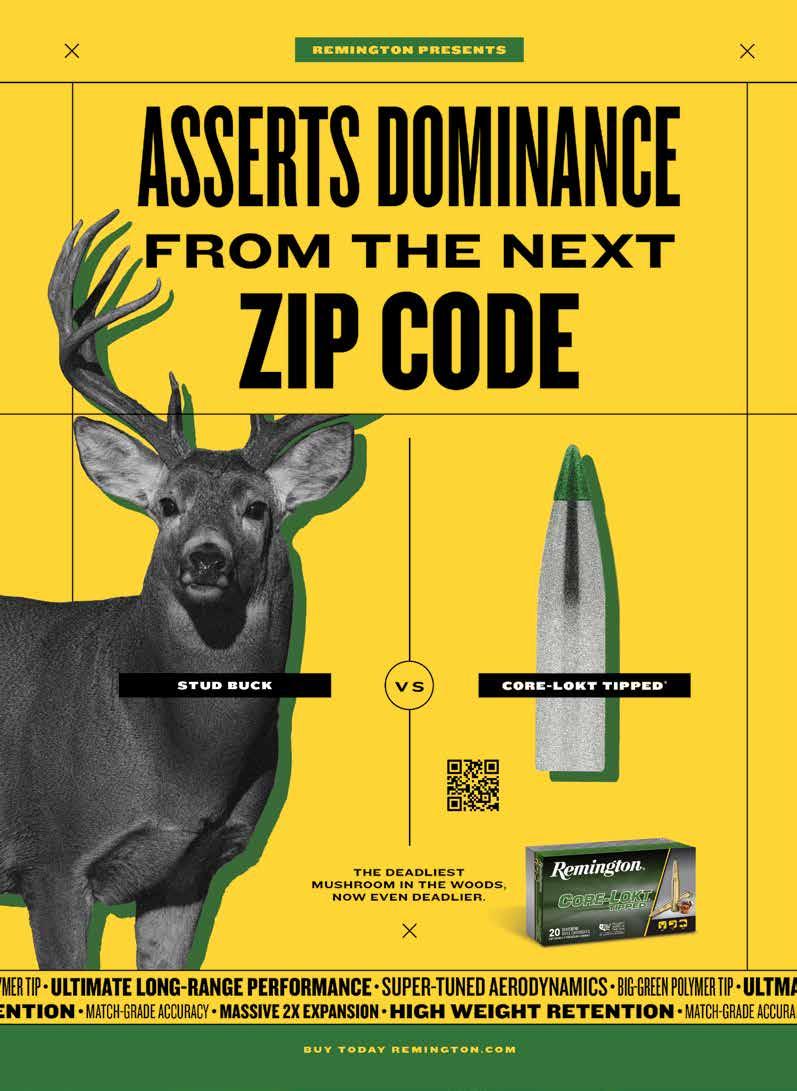
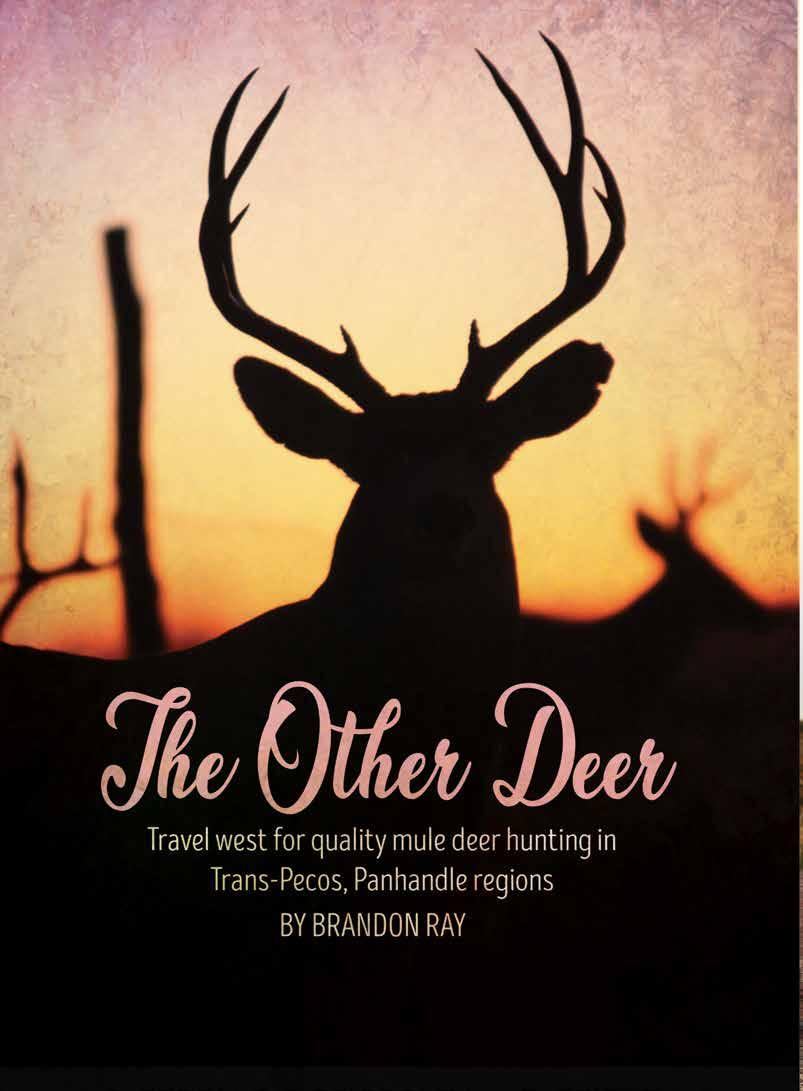
The man at the gas pump was wearing a coat and tie. I was dressed in camo. It was late November. He leaned my direction and said, “You hunting whitetails or mule deer?”
“Today, I’m hunting mule deer,” I replied. Without hesitation, the stranger fired back, “I prefer hunting whitetails. Are there any big mule deer around here?” “There’s a few,” I said with caution, hesitant to reveal my secrets. We small talked about the weather, then I left the pavement for the rough country. There’s little time for chit-chat during the rut!
Texas is home to both whitetails and mule deer. Whitetails are much more common, inhabiting 252 of the 254 counties with an estimated statewide population of 5.4 million. Mule deer are less plentiful and found only in the western-most counties. The statewide mule deer population changes with times of drought, but it’s usually around 200,000. I asked Texas Parks and Wildlife biologist and Mule Deer Program Leader Shawn Gray for the latest numbers on Texas’ other deer:
“TPWD conducts post-season helicopter surveys for mule deer using a stratified random sampling design within monitoring units. In 2011, a sightability model was initiated to improve population estimates. The data are used to determine population trends, estimate population densities, and document herd composition to evaluate the impacts of regulations and management actions on mule deer at ecoregion and monitoring unit scales.
“In general, the Trans-Pecos population is on a decreasing trend because of drought conditions since 2020. In addition, aoudad and elk numbers have exploded over the last 10 years in the region and are more than likely compounding the impacts of drought on mule deer. The 2023 mule deer estimate of 96,549 is the lowest since 2011. The estimated 2023 fawn crop of 44 fawns:100 does was higher than in 2022 (37 fawns:100 does) and the long-term average of 36 fawns:100 does, which is promising. The sex ratio for 2023 was 2.1 does per buck, slightly closer than the 2011-2023 average of 2.5 does per buck.
“The Panhandle population trend is on an increasing trend since 2011. However, mule deer numbers have declined after the all-time high documented in 2017 until 2022 when the population seemed to stabilize. The 2023 population estimate of 86,710 was higher than the 2021 and 2022 estimate of 71,171 and 71,121 respectively. Fawn production was 29 fawns:100 does in 2023, which was above the 2022 estimate region average of (17 fawns:100 does). The sex ratio for 2023 was 4.3 does per buck, higher than 2022. Sex ratios have varied from 2.8 to 4.7 does per buck since 2011. Sex ratio data indicate a higher harvest rate of mule deer bucks compared to the Trans-Pecos in almost every year, but the post-season sex ratio has been below 4.7 does per buck in 10 out of 11 survey years. There are no changes to mule deer regulations for the 2024 season.”
The experts have data to support the long-standing rule that most bucks grow their best antlers at age 61/2 or 7 1/2. That has been my observation with the environmental factors, such as
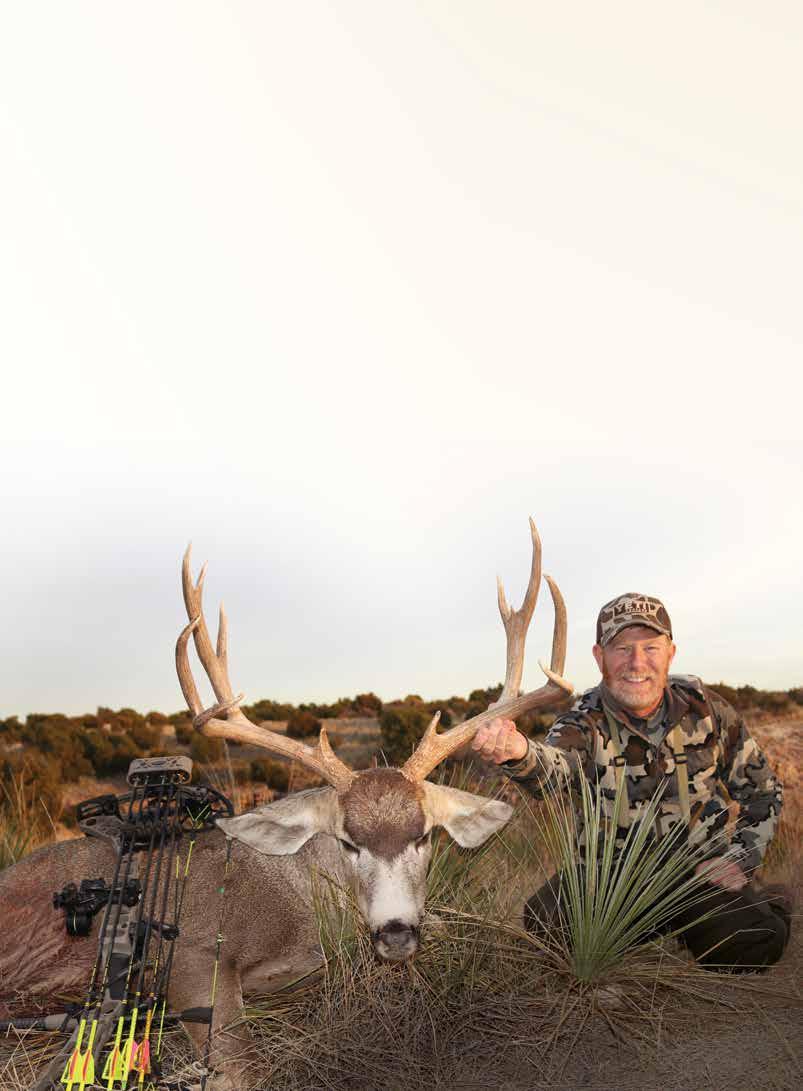
Brandon with his 2023 Texas mule deer buck. He arrowed the big 11-point at 2:10 p.m. on Dec. 20 on an MLDP property in the Panhandle.
The following list includes the top three typical and non-typical mule deer entered in the Texas Big Game Awards (TBGA) program from the 2023 season. Exceptional bucks were taken in both the Trans-Pecos and Panhandle regions. Culberson County in Region 1 is well represented in the top spots in the TransPecos. In the Panhandle, the western counties along the New Mexico border continue to produce the biggest bucks of Region 2. Minimum scores to enter TBGA in both regions are 145 net typical and 160 net non-typical.
TRANS-PECOS TOP THREE TYPICALS
Hunter’s Name County Gross Score Net Score
1. Dan Hughes Culberson 1955⁄8
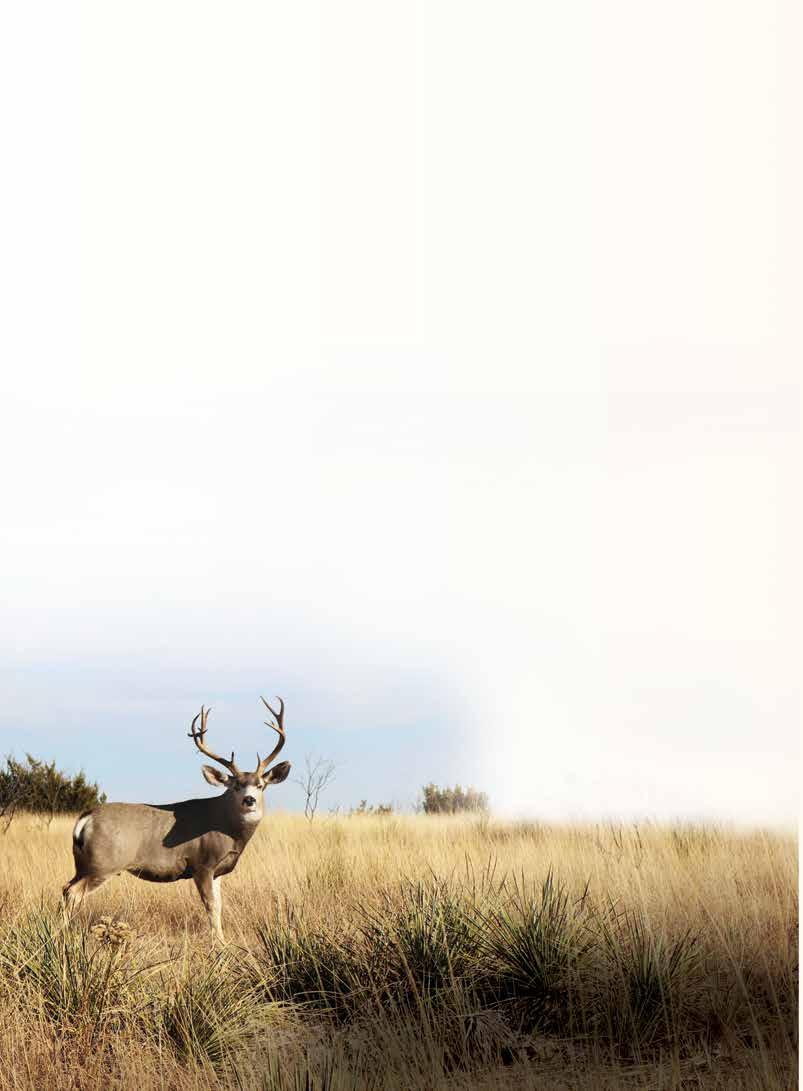
TRANS-PECOS, TOP THREE NON-TYPICALS
Hunter’s Name
1.
Hunter’s
2.
3. Trenton
PANHANDLE, TOP THREE NON-TYPICALS
Hunter’s
drought versus a wet spring, also factoring in on what year a buck grows his biggest rack. In addition to having a limited harvest of mature bucks, landowners can do other things to improve their land for mule deer. Limit cattle grazing and improve water distribution with either windmills or by adding dirt ponds. Remove excess brush like mesquite or cedars as mule deer favor more open landscapes compared to whitetails. Also, remove invasive species that compete for space and food, like aoudad and feral hogs. In counties where mule deer and whitetails coexist, a heavier harvest on whitetails may be necessary if growing mule deer is your priority. Aggressive removal of predators like coyotes, bobcats and cougars can also improve fawn survival and adult survival.
Landowners that do these extra measures to manage deer can potentially enroll in Texas’ Managed Lands Deer Permit (MLDP) program for mule deer. Participants do yearly deer surveys, either with a spotlight or helicopter, keep good records on deer killed each season and continue to do improvements on their land. There’s a fee of $300 per year to be in the program. The benefit of joining the program is an extended season that allows hunting into late January. A TPWD biologist will make recommendations on how many bucks to harvest per property based on survey data. You cannot exceed their recommendation or use your hunting license tags once permits have been issued.
Texas mule deer are special, so I guard my tag and wait for a big one. Where I hunt in the Panhandle, deer numbers are modest, but given the chance to fully mature, bucks can grow impressive racks. Panhandle bucks have the benefit of ag
Brandon photographed this familiar Texas buck in early December 2023. Guessing the buck’s age at 5 1⁄ 2 -years-old, he passed the buck in hopes the buck will have another year to pass on his good genetics. Maybe the buck will be even bigger in 2024.
crops like wheat and milo, something Trans-Pecos bucks do not have. Continued antler restrictions in 28 Panhandle counties, a regulation implemented to improve the age structure of bucks and sex ratios in the herd, should help more bucks reach trophy size in the coming years. To be legal in those counties with an antler restriction, a mule deer buck must have an outside spread of at least 20 inches of the main beams. Antler restrictions do not apply to MLDP properties. Check with TPWD for a complete list of counties included in the antler restrictions.
It was after Thanksgiving and the bucks were starting to become more interested in the does. I was seeing the same familiar, averagesized bucks I’d seen in October, but now they were sparring with each other. Fresh rubs showed up on mesquites and cedars. I was hopeful a new boss buck would show up when the first doe came into heat.
Late one afternoon in early December, I was glassing a herd of six does when I spied wide antlers behind a bushy cedar. When the big-bodied buck stepped out, I recognized him immediately. I’d watched that same buck near that same windmill for four years. I estimated he was 51/2 years old now. His rack was heavier this year, wider and sported extra kickers on his right side. I counted 12 points in all. I was tempted, but I knew he would likely be bigger the next year. I watched him sniff the girls for 10 minutes. I snapped a few photos of him broadside at less than 40 yards, then the herd disappeared into a brushy draw near the property line. I could only hope the neighbors would show the same restraint.
bouncing back down a cliff through cedars and yuccas. The does scattered, too. I debated following them, but decided patience was the better option. If I was patient, the buck might come back to sniff the girls again and give me a point-blank shot. It was 10:20 a.m. when I crawled in the ground blind with my bow. That wasn’t my plan for the day, so I only had one small bottle of water for the all-day sit.

To improve your land for mule deer, make sure they have year-round water sources like windmills, tubs or dirt ponds. Even when there are no livestock on the ranch, leave the windmills running for the wildlife.
An hour later, three does and three small fork horn bucks played chase in front of my blind. The does seemed unimpressed with the youngsters. Eventually, all the deer left, and I found myself watching blue jays squawking in the cedars. Time dragged like a snail.
Where I hunt in the Panhandle, the rut doesn’t really get cranking until early to mid-December. At that time, every year, I see new bucks I haven’t seen the first half of the fall. I’m not sure if those new faces are there all along, just being sneaky, or if they travel miles from somewhere else to my place just to chase girls. I suspect it’s a little of both.
There was one new buck that showed up on a trail camera in early December. It was one photo at 8:37 a.m. on Dec. 6. The mystery buck was following a doe. It was in a location where I hadn’t seen a trophy buck in 20 years: a ragged cliff edge mostly used by aoudad. I took note of the image, wondered if the buck was just passing through and if I would ever see him, then decided to check back at that spot often for the next few weeks. Eight does were at that location regularly. They say find the does during the rut and the big boys will be there eventually, right?
It was Dec. 20, late morning, when I rolled up to check the camera at that remote location. Three does were standing near the free corn and alfalfa. Then I spied big antlers behind in the cedars. It was the mystery buck from Dec. 6! He spooked,
Hours later, movement caught my eye to the west. Two does were headed my way, acting nervous, each one watching her back trail. Then I saw him! The same big buck I’d seen that morning was sniffing the last doe in line! When he cleared the thick cedars, I confirmed he was old enough and big enough. I waited at full draw until he paused at 20 yards. The arrow blasted through grey hide, the buck trotting a short distance and stopping. I seized the chance and sent a follow-up arrow into the ribs from 46 yards.
I found the 61/2-year-old buck dead as a stone just 50 yards away in a rocky ravine. His perfect rack was almost 25 inches wide. He later field-dressed at 190 pounds. Back at the barn that night, meat hanging to cool in the brisk night air and the dusty barn radio playing old country songs, I rough-scored his antlers at 160 inches.
An interesting note to that hunt is the time of day when I got my shot: 2:10 p.m. A time when most hunters are back at camp taking a nap. It’s the third mature buck in as many years I’ve taken between 11 a.m. and roughly 2 p.m. Dates for the last three of my Texas mule deer kills have been Dec. 4, Dec. 24, and Dec. 20. I’ve slowly learned it pays to wait until the frenzied days of the rut before putting my tag on an average buck too early in the season.
Hunt whitetails or hunt mule deer? Who says you have to choose one or the other? Make this the year to hunt both!
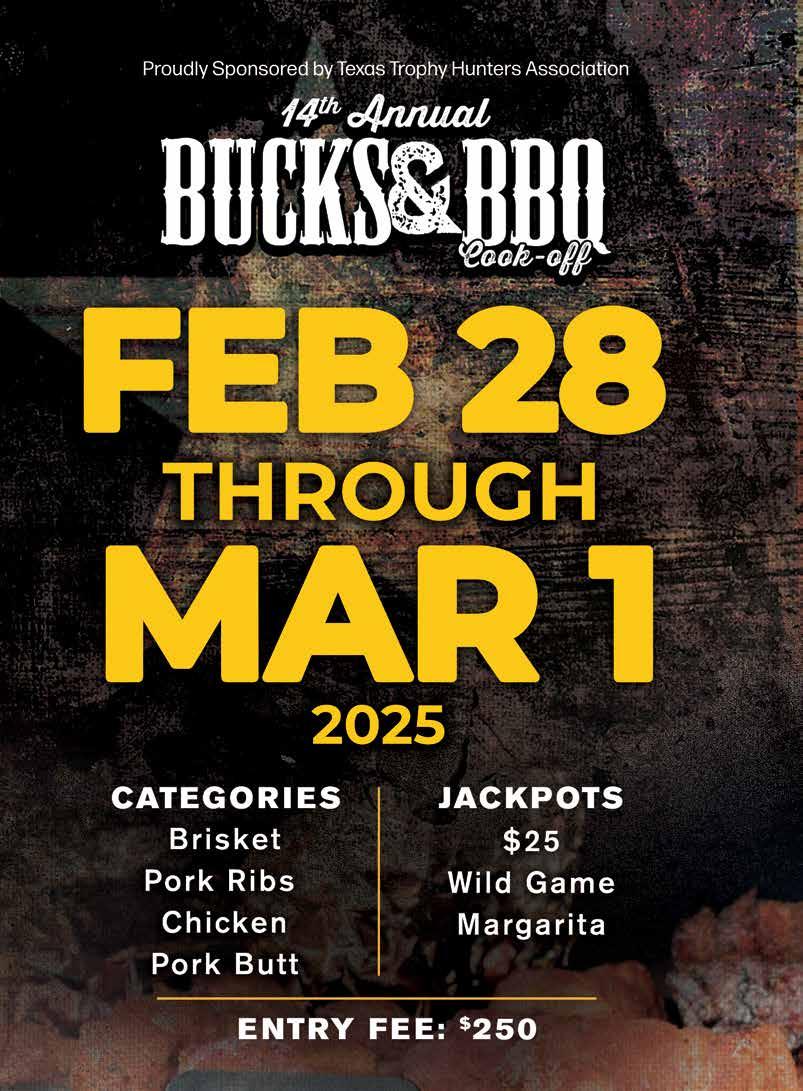


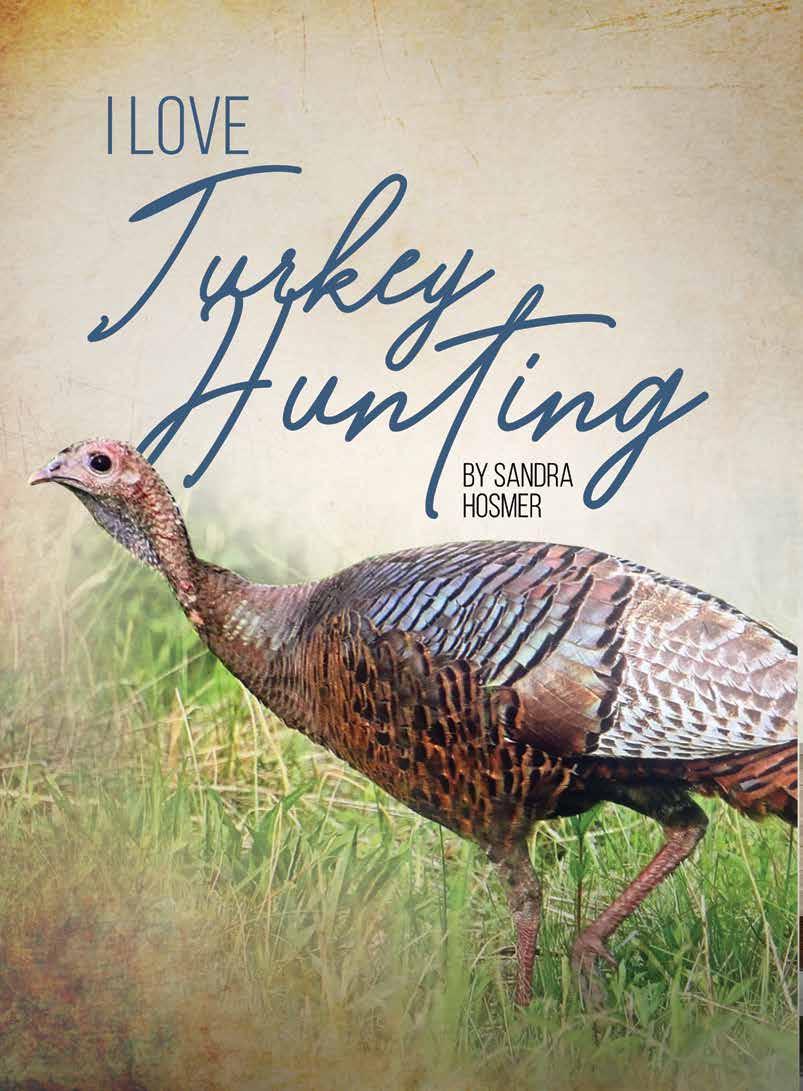
Sandra says turkey hunting makes her feel like a kid again.
Editor’s Note: Sandra Hosmer is the widow of the late Joe Hosmer, longtime hunter and SCI official. Joe and Sandra moved from Maine to Fredericksburg several years ago, where she is now treasurer of the local SCI Chapter.
Wild turkey tastes better than domestic, and hunting is more fun than shopping at the supermarket. Surely, readers of this Journal are enthusiastic turkey hunters. I am, too; but I have a different perspective. The pleasures of hunting are subjective and intense. I am writing as a suburban housewife who came from a non-hunting family.
Harvesting directly from nature started with baby steps and led me on some interesting paths. We always had a vegetable garden, and nothing tastes better than a tomato right out of the garden.
Some favorite memories were made when Dad would take my brother and me fishing. Using worms for bait, we usually fished on the shore of the neighborhood pond, and sometimes he would take us in his boat. It was 14 feet long with an outboard motor, but that made the fishing so much better.
We had more senses involved. We felt the warmth of the sun and the breeze while we were in motion. We saw a duck that

pretended to be hurt as she tried to lead us away from her nest. In the fall, I remember the vivid New England foliage reflecting in the water. But this was not just a joyride. We were there to fish.
The pond had bass, perch, pickerel, catfish, and blue gills. Dad would fillet the “good fish,” and Mom would fry them in corn meal. I really liked it. She would boil up the rest to feed our cat.
I picked wild mushrooms and blueberries with my grandmother during my grade school years. That made more happy memories while harvesting from nature. When I hunt, it is for the freezer and my mindset is harvesting from the wild. I don’t get buck fever and I’m mainly glad to have it done.
Except for turkey hunting!
I have so much fun — just like being a kid again. There are elements like “red light, green light” and “hide-and-seek” that my brother and I would play along with friends. I get so excited I hardly sleep the night before turkey hunting. I have to be at my blind before dawn, so it is an early rise. During the night I keep checking the clock to be sure I did not miss the alarm.
Through my sampling of hunting, I developed an opinion that I prefer to shoot things that are ugly and taste good. I don’t
want to shoot cute rabbits or beautiful pheasants. I consider deer as handsome creatures, too, but I set my mind on population management.
Turkeys fit the bill. To edify myself, I started by attending seminars. I used to dismiss the turkey calling competitions as silly, until I learned that turkeys have a vocabulary of 37 distinct sounds. They purr when everything is calm, cluck when it is time to pay attention, and make a certain sound when they wake up in the morning to acknowledge each other. Gobbling isn’t just the sound; it also changes meaning with pitch and volume. Again, I rely on someone else’s skill for calling.
Calling the turkey is really important because in the natural world, the hen comes to him for breeding. The calling needs to sound like an extremely seductive hen to get the tom to approach, because you are going against the standard process.
Among my turkey hunting adventures was a trip to Wyoming for a Merriam’s turkey. After the successful hunt, my guide was arranging the typical photo scene. This tom must have been the neighborhood rock star. Both of us humans were amazed when a hen caught sight of the tail feather fluffing and came running toward us. My guide had to stomp and holler to chase her away when she was about 10 feet from us. It was awesome to interact with a wild creature like that.
On the topic of turkey romance, this bit of trivia blew me away. Consumers buying turkeys at the supermarket look for birds with plump bosoms. Domesticated turkeys have been bred over the years to have such large breasts that they can no longer reproduce naturally. Every single domesticated turkey is now a product of artificial insemination.
Our colonial house in Maine had 90 acres of field, lawn, orchard and the majority was wooded. We had a flock of Eastern turkeys that would pass through in the morning and late afternoon.
I had a grudge to settle. We had a grapevine that draped across a stone wall behind our house. I watched the grapes mature with thoughts of making jelly. Ah-ha! Those grapes looked about ready. First thing the next morning, I took my laundry basket out to the backyard to pick them. But all the grapes were gone.
The day before my hunt, I set up a blind of camo cloth and some tree branches around a tree. Red light, green light. Turkeys have acute hearing and eyes like eagles. Remaining still and quiet are paramount to success. At home I readied my camo, shotgun, and gear. Then I set the alarm so I could be

in my blind before dawn. By the way, my blind was almost in sight of our house to avoid the need to be rescued if I got lost.
My experience in the blind was intense and unforgettable. After I got settled, my first thought was, “Did I ever think I’d be sitting alone in the woods in the dark on purpose?” Soon the sun started to rise. Wow. Yes, I had glanced at the sunrise when pacing the floor with a baby, but this was powerful to behold the developing dawn.
The quiet time was sweet. I watched a chipmunk, then a spider working on its web. I looked at my watch not from boredom, but rather I’d look at the angle of the sun and try to guess what the time was. I felt accomplished when I got good at it. Here’s the juiciest part. Suddenly, the back of my neck felt strange. I held very still, not even breathing. I heard nothing and waited. A short time went by, and I heard a cluck.
I kept holding still, and within 6 feet of me, a hen walked by. She never saw me. I won hide-and-seek! Not only that, I discovered I have an instinctive sixth sense. A day of hunting, like shopping, can be good, even if you don’t bring anything home.
Regarding the pleasures of hunting, one of my favorite elements is travel. My hunting buddy, Bunny, and I went to Mexico to get a Gould’s gobbler. I had the tail mounted in a fan.
On a family trip to South Africa the only thing I wanted to hunt was an ostrich. (Ostrich = ugly but tastes good.) I thought it would be cool to have a fan of ostrich tail feathers displayed with my turkey feathers. I fulfilled my quest and got a bonus: a custom-made ostrich handbag. My response to compliments is, “I shot it myself.”
Memories of hunting adventures are vivid because they involve all senses—hearing, seeing, feeling, and smelling—but the best one for me is tasting.

By Horace Gore
Occasionally, a group of deer hunters will get together for a doe hunt, and there may be several does to skin. Doe deer are usually killed for the meat, and a cleanly skinned doe means better meat.
One way to skin several deer is to use a golf ball or round rock, cable or stout nylon rope, and an ATV, four-wheeler, or pickup. This method will work if the deer is NOT shot in the neck; the cable or nylon rope is adequate to tie around the skin-covered rock to take a large amount of pressure; and the instructions are followed to a T, and all skin cuts are completed before the skinning begins.
To begin, hang the doe securely by the neck to a stout skinning rack, tree limb, or other strong stationary object. The skinning pressure will start between the neck skin of the deer and the bumper or other strong area of a vehicle. This skinning process will put a lot of pressure on the deer, so it must be hung to a strong structure.
After the doe is securely hung by the head or neck, the skin around the neck halfway between the head and shoulder is cut completely through all around. From the underside of the neck, the skin is opened down to the brisket and out both front legs. If the doe is not field dressed, the skin cut should be continued down the center of the belly and out the underside of both hind legs. All leg cuts are terminated by a complete cut through the skin around the leg bone.

Note: If the doe has been gutted, follow the instructions for cutting around the neck, down to the brisket and out the underside of front legs. Cut the belly skin to join where the deer was gutted. Go to the pelvis and cut through the skin on the inside of each hind leg to a complete circular cut on the leg bone. Make sure all skin is cut to allow it to be removed completely.
The skin will be removed by pulling pressure all the way from the neck to the rear end, so keep that in mind. Use common sense, and think about the completed cuts, and if you have missed something.
Next, pull the neck skin down about 6-8 inches—enough to place a 2-inch round rock or golf ball inside the top skin so that it can be secured with a small cable or 1/4-inch nylon rope. You will apply pressure on the skin-covered ball to remove the entire skin starting from the top of the neck.
Back the vehicle up to 6-8 feet of the hanging deer, and secure the cable or rope to the vehicle. Make sure that the cable or rope is secure around the ball that is inside the neck skin. Slowly move the vehicle so that pressure is slowly begun on the deer skin. As the skin begins to peel off, increase the pressure from the vehicle until the entire skin is removed. The pressure to remove the skin will be astounding. The skinned deer will swing wildly after the skin is removed.
You should now have a cleanly skinned deer ready to continue the gutting and butchering process.
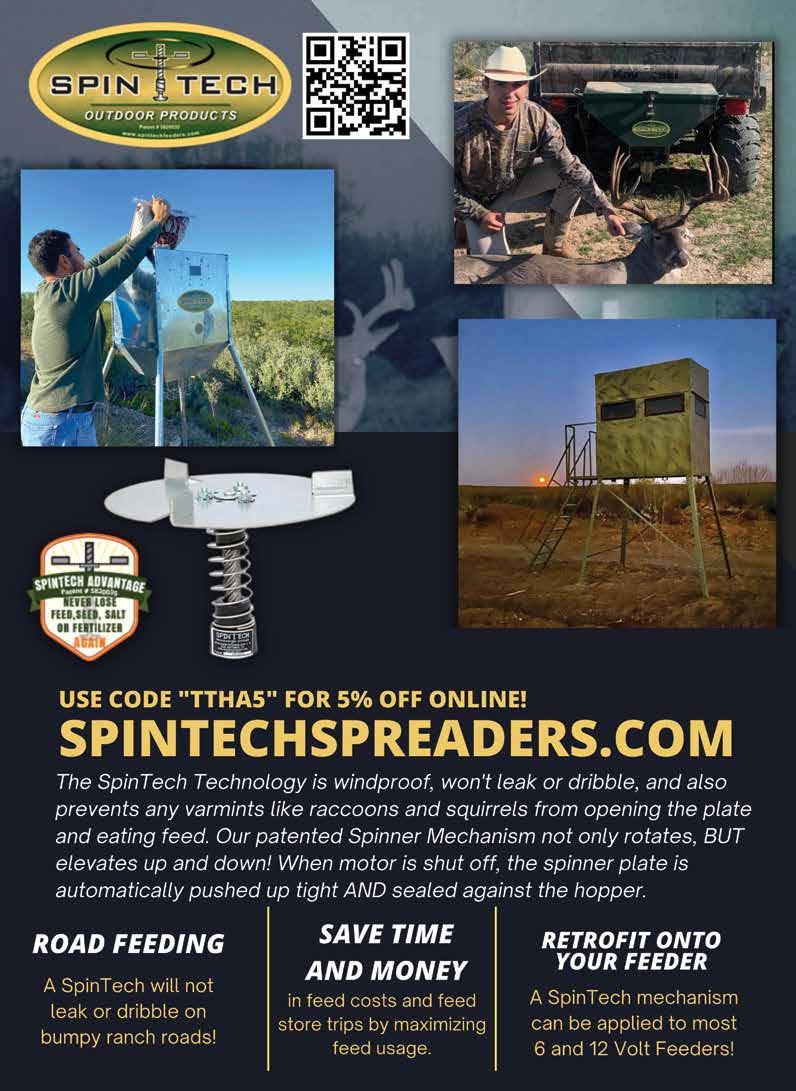
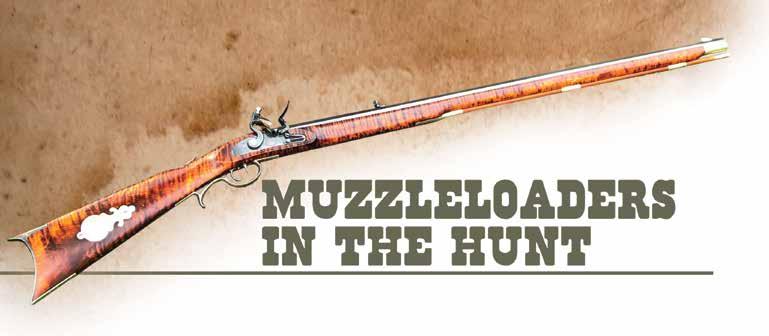
by Eric Stanosheck
As if hunting with black powder and a muzzleloader isn’t challenging enough, try hunting the single largest predator on the North American continent, knowing you only have one shot. That was my mission last April when
I flew to Alaska to hunt brown bear. Hunting in Alaska is always a long journey, and this hunt was no different. It took two commercial flights to get to Anchorage, where I overnighted; then took another charter flight to the village of
Port Allsworth, where I overnighted again. Finally, I took a Super Cub flight with Jeremy Davis, owner of Lake Country Lodge, to get to our base camp on the South Fork of the Hoholitna River.
Day four of my trip was actually day
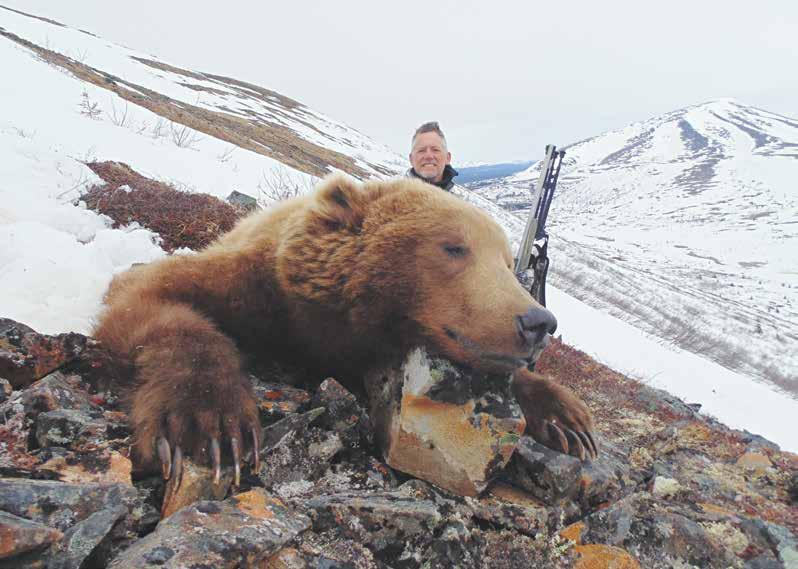
The author’s big brown bear will rank No. 7 in the current Longhunter Muzzleloader record book.
one of my hunt. Jeremy’s son, Callen Davis, and I loaded up in his Super Cub and flew southeast to a small frozen lake just past the Mulchatna River drainage, where we would set up our tent camp for the remainder of the hunt.
Everything was covered in snow and ice, as mid-April in southwest Alaska should be. Our first order of business was digging out the snowmobiles which were left on the tundra the previous October. The handy machines would serve as our main source of transportation during the next week. That evening we set up a small, but comfortable camp in the snow and ate a hearty dinner. We spent the remainder of the evening going to two small mountains to glass for bears, but saw nothing.
Spring brown bear hunting in Alaska is a different game. The bears, which have been hibernating since late October, are just starting to dig out and soak up some needed vitamin D from the sun after losing up to a third of their body weight during hibernation. Nights are cold; mornings are nippy; however the sunny days make the snow melt faster, which turns the flats into slushy bogs.
The next day Callen and I covered 45 miles on snowmobiles, investigating some dens on really steep mountains, with no luck on seeing a bear. The steep mountains and deep snow created an incredible workout as we hiked to the peaks to glass, after parking the snowmobiles. We did find two younger bears that had denned about 20 yards apart for the winter, and had just emerged to enjoy each other’s company.
On April 23, we covered a lot of ground, unable to locate any fresh bear sign. On the way back to camp my snowmobile broke down, which meant flying back to the village of Port Allsworth for parts. Fortunately, Callen found the spare parts in the hangar while I grabbed fresh baked cookies, meat and veggies for camp supplies.
Back in the plane, we took advantage of the time and flew over all of the mountains we would hunt, eventually locating a large single boar on a brushy, steep mountainside about 16 air miles from camp. Once we landed back on the frozen lake, we rode tandem to the stranded snowmobile and with the new carb, plug, and a tune-up, we soon had it purring like a kitten!
Due to Alaska’s law of “Same-day Air-
borne,” we were not able to hunt, so we headed back to camp, had an early dinner, and went to bed knowing that the next day we would try to find the big bear we had seen from the plane.
Wednesday, April 24, just felt different. The cloud cover was thick, which provided an insulated layer for the night and kept the snow melting. We went through many slush bogs on our way to find the boar. My anticipation of the hunt was high, and I carried the unloaded muzzleloader carefully as we plowed through ice, snow, and boggy flats. I could load the old gun quickly, if need be.
After a couple hours of hard riding, we stopped to glass a mountainside from two miles away. “Eagle-eyes” Callen soon had the bear spotted, so we planned for our approach to the far side of the mountain with the snowmobiles, so we could climb up and over to drop down undetected. As expected of a mature boar, he bedded on the steepest mountain in the area that also had thick alders helping to conceal his hideaway.
A 500 vertical foot elevation gain in waist deep snow is no joke. However, the 700 vertical foot descent to where we last saw the bear wasn’t a cake walk either. Once we had what we believed was a good vantage point and correct wind, we sat and waited for the boar’s next move, while I swabbed the barrel and loaded my muzzleloader.

After not seeing any movement from the bear, we continued cautiously across the mountain face. Callen got my attention and pointed back to the direction we had come. The boar was giving us the slip, heading up the mountain right where we were previously sitting. We moved quickly to gain elevation in waist deep snow, as I got ready for the shot.
As I stabilized my muzzleloader, Callen whistled the bear to a stop, ranging him at 137 yards. His front leg was forward, as he stood broadside. The rifle roared, and the 250-grain bullet, with its slow-moving shockwave was headed toward the bear’s vitals. When you have one shot; one op-
The steep mountains and deep snow created an incredible workout as the author and his companions hiked to the peaks to glass.
portunity, on a giant boar, you focus and pick a vital spot, and I was confident in the shot.
The bullet yielded a loud “whomp” as it connected. The bear hunched up, took a couple steps uphill, and four steps back down and tipped over—not exactly what you would expect from a muzzleloader, but we were elated. The big brown bear will rank No. 7 in the current Longhunter Muzzleloader record book.
No matter how big your dreams or how crazy your adventures are, you will always enjoy every detail and struggle of an Alaska hunt. And you practice for the single perfect shot with your black power rifle, knowing you may never get another one when you have the limitations of a muzzleloader.

After several misses,

by Judy Jurek

“Look, Dad! There’s a big one! Can I shoot him, Dad? Please, Dad, please!” The rush of excitement in those whispered words filled the small deer blind. At 7 years old, Paxton was ready for his first deer.
A massive, heavy antlered, 10-point whitetail stepped out. Dad had lost his breath. This great buck rivaled some of his best to date.
He helped Paxton put his rifle out the window. The youngster made a great shot, dropping the deer in its tracks. The buck scored 164 B&C.
Fast forward 30 years, and Paxton no longer hunts deer. “I was pretty much ruined killing a huge buck as my first one,” he said. “It was bigger than my dad had ever taken. I killed a couple more, but the thrill was gone, as they weren’t bigger or better than my first one.”
“I wish my dad had started me out with a doe or small antlered buck and let me work my way up. I might have continued deer hunting,” Paxton sighed, adding, “I still hunt, but only waterfowl, doves, and occasionally feral hogs. My interest in deer just isn’t there.”
My personal 50-plus years hunting experience covers a vast variety of game. I believe many youngsters don’t continue deer hunting as adults after taking a huge buck as a young kid. There are many reasons, but often it’s simply losing interest due to taking a trophy early in life that they may never match again, like Paxton.
Of course, a trophy indeed lies in the eye of the hunter. Some of my best “trophy” bucks have been rather small, but it was the experience that made it a trophy to me. However, for the sake of this article, the definition of a trophy buck means big, as in high scoring B&C, P&Y or SCI measurements.
Start ’em out small, meaning: let a young hunter strive for something better. Youngsters or teens hunting their first whitetail have hopefully practiced at the shooting range to know their weapon. Buck fever happens despite the target being a doe, spike, or cull buck. That’s one reason not to let a novice hunter shoot a trophy buck. They may make a crippling shot!
Adults are the teachers and mentors. Young hunters want to learn. It’s up to us
to be their guides when it comes to hunting. A hunt should be much more than simply pulling the trigger. It should be about nature, the outdoors, the adventure, and using skill and knowledge.
The mentor should explain why this or that may occur. Encourage a youngster or novice regardless of age, to absorb and appreciate their surroundings as well as hunting opportunities. It’s more than shooting. Enjoying and learning from each experience may hopefully solidify hunting desires for the future.
Today’s society aims for instant gratification. Kids receive participation awards rather than achievement awards. Kids grow up wanting the biggest, best, immediate success for everything. They don’t really want to learn and earn, as in climbing the achievement ladder. Hunting is no exception.
Every young hunter needs to develop their hunting skills. Accuracy, patience, determination, and tracking is the begin-
ning point. Young hunters suffer from huge disappointment if they shoot a big buck that gets away. Should it happen more than once, a lack of confidence may occur, further hampering that hunter’s achievements.
At age 7, Mason missed his first deer due to nervousness. Over six seasons, he missed every deer, yet killed hogs and coyotes. At 14, he missed a buck once again, but another buck walked out.
Hunter Kana is skillful with both bow and firearms. She’s already been to Africa three times.
With a patient guide slowly talking to him, Mason finally killed his first deer. Now at age 24, he’s been successful every season since getting that first buck.
Yes, we all want a big buck, but truthfully, you may be sabotaging a youngster’s future hunting desire before it has even begun. Eric had two sons: Devin, 12, and Kash, 10. Both boys played various league baseball year-round. They were highly competitive, as was their dad.
Eric took Devin hunting for his first buck. Long story short, he allowed his son to kill three eight-point bucks,
discarding the first two because their antlers “weren’t big enough” to beat Devin’s best friend’s buck. When the word got out, Eric was kicked off the ranch. This was certainly not a good example of ethical or lawful hunting.
A successful attorney’s lavish office has wildlife mounts from around the world adorning walls and tables. In a prominent display behind a massive desk is a leather covered skull plate of a four-point whitetail. “That was my first deer,” Edgar said with a smile. “I was 7 when this buck stepped out and stared at me. I killed it with one shot.”
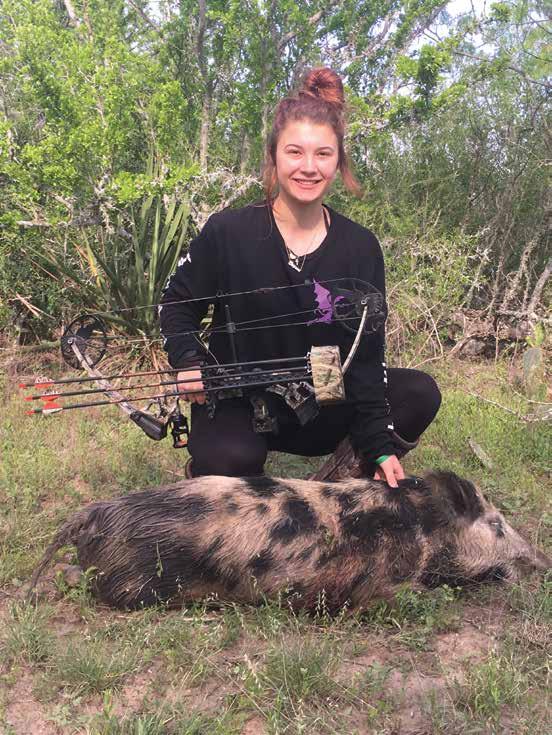
Chuckling, Edgar added, “That little buck fueled my hunting desire, and I’ve been a hunter ever since.”
Allison, who killed her first deer at age 9, is the mother of three young sons. “The tall spike seemed like a big buck,” she said. “It jumped and ran but I insisted I’d hit it square behind the shoulder. It went only a few yards, and we found it dead in a patch of cactus.”
“Marriage and babies came along, interrupting my hunting for a while,” Allison said with a laugh. “I’ve taken several whitetails, and also guided myself to a West Texas mule deer buck while my four guys stayed at camp. Now it’s all about the boys learning as I did by starting small.”
“Our oldest just turned 10,” she said. “He’s begged us to let him take a big buck but we’re making him work his way up. Last season he shot a small eight pointer, his best yet. We emphasize the good venison, hunting skills, and cleaning and processing each animal.” Allison and her hubby have the right attitude. It may be hard to say “No” to youngsters begging to shoot a big buck, but think of their future. If you truly want them to gain respect for nature, hunting, and you as their teacher or mentor, start ’em out on something small.

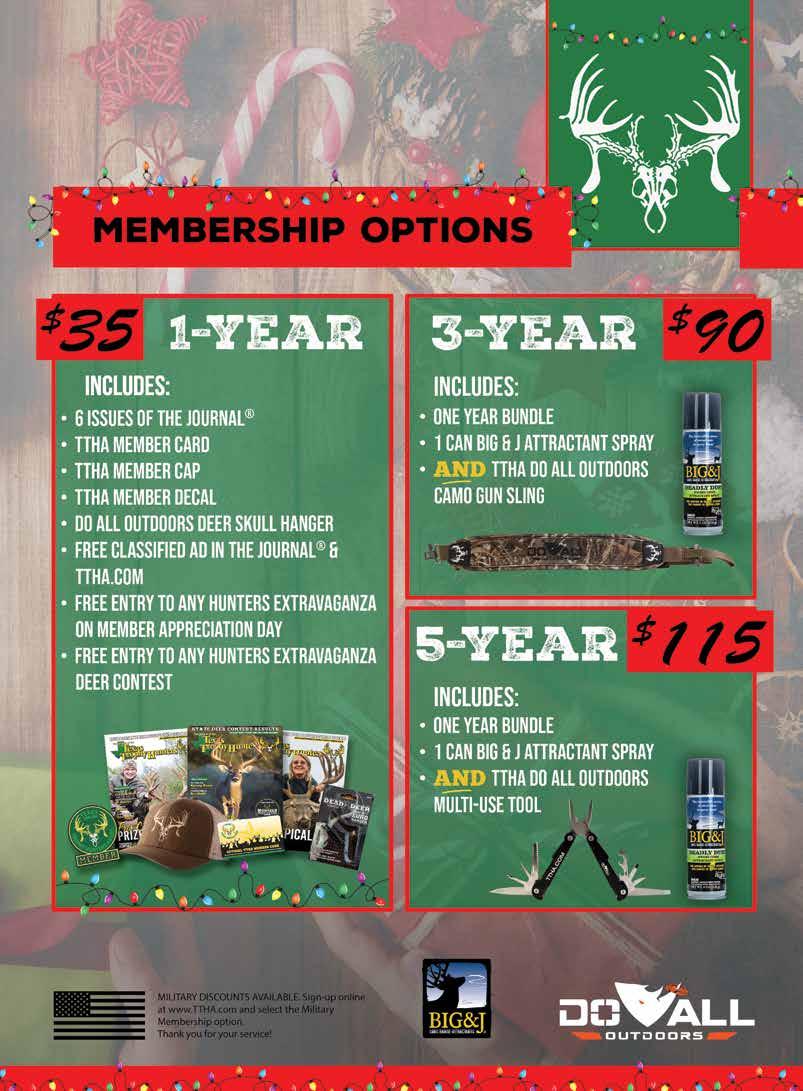



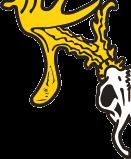
Looking for that perfect gift for the hunter in your family? We’ve got you covered for must-gives this holiday season. With all new t-shirts, caps and other TTHA Gear, you will find the perfect gift for the hunter in your family. Members get preferred pricing on TTHA gear. Not a member? Join now (see page 64).
Visit TTHAGEAR.com to see our full line up.
The PASSION 15X50 HD binocular features an incredible light transmission, 99.7 percent ags; Double HD glass technology; a great field of view with perfect edge sharpness; GPObright lens coating technology; center-focusing locking diopter; tough aluminum eyecup tubes; magnesium microbridge and body; waterproof and fog-proof; and PASSIONdrop hydrophobic coating. It measures just 6.9 inches long, weighs just 34.1 ounces, and has a 266-foot field of view at 1,000 yards. Visit gpo-usa.com.
gpo-usa.com

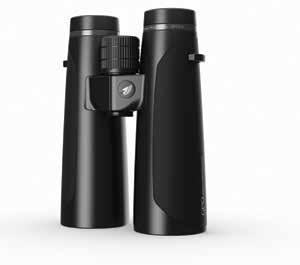
Making its debut at the 2024 Hunters Extravaganzas, the Blazer Automatic Dog Feeder features a large 40-pound capacity, doubles as a food storage container, and was engineered for indoor or outdoor use. It runs off a rechargeable battery so it can be placed anywhere, no power outlet required. Designed to feed all sizes of dog food, customize meal portions up to nine times per day using the EZ Set Timer backed by a five-year warranty.
Dispense smaller portions, over time, to prevent gulping and improve pet health and digestion. It’s easy to fill with a lock tight lid and metal liner that keeps food fresh, and pets out. The convenient clear sight gauge allows you to monitor feed level at a glance with an eight-cup, dishwasher safe, stainless-steel bowl. Designed and built in San Antonio. Available at SimplePets.com and TexasHunter.com.


Constructed from robust, thick-walled steel and finished with a tough powder coat, Rinehart’s new Universal Bag Stand measures 42 inches tall and 36 inches wide, accommodating bags up to 30 inches in width. Its durable construction ensures stability and longevity, making it a reliable addition to any archer’s setup. The stand comes with stakes, allowing it to withstand an archer’s toughest shots while still remaining firmly in place. Plus, it’s designed to endure all weather conditions. Set-up is a breeze, allowing shooters to focus on honing their skills rather than dealing with equipment issues. Visit rinehart3d.com.
Utica Cutlery Company is excited to launch our new EDC (everyday carry) line. This new family of EDC’s will come with a stone washed finish, solid D2 blades offering great edge retention, lighting fast one hand opening, textured black G10 handles with blood red liners and topped off with very competitive pricing. Visit uticacutlery.com.
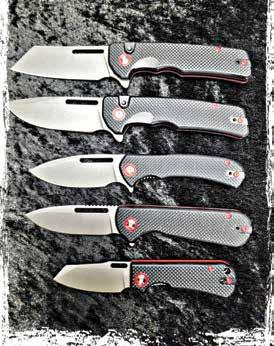
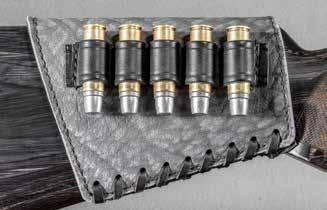
Big Horn Armory’s Premium Cape Buffalo Hide Butt Cuff is crafted from the robust and resilient Cape Buffalo hide. This premium butt cuff is easy to attach and is designed to keep five rounds of extra ammunition close at hand, ensuring one is always prepared when it matters. Tailored exclusively for the right-handed 500 S&W lever gun, this butt cuff is now available for purchase at bighornarmory.com.
rOks makes craft ice trays that have interchangeable designs that make custom ice cubes for any occasion. The Outdoorsman bundle includes one deer skull, duck head, turkey track, boot, dog paw and anchor, in its tray. Add a custom logo to the side of the ice mold for your next fundraiser, silent auction or company event. Inserts snap tight into the bottom of rOks’ silicone ice mold. Visit roksusa.com/collections/bundles/products/ the-outdoorsman-bundle


roksusa.com


Savage teamed up with Hogue to introduce the 110 Trail Hunter Lite. Hogue Overmolded rifle stocks have long been known to provide outstanding performance and grip. The full coverage rubber overmold on the stock provides the user with a superior hold on the rifle in all conditions. The Cerakote ceramic coating on the barreled action helps to seal out the worst that mother nature can dish out. The 110 Trail Hunter Lite will be the rifle that helps you fill your tags. Visit savagearms.com.
The FeatherSnap Scout, a Wi-Fi enabled seed feeder, redefines home birdwatching through an immersive, educational, and entertaining user experience. Its state-of-the-art camera offers a highdefinition glimpse into the secret world of birds, with 4-megapixel photo quality, 1080p video capabilities, and a wide field of view. Integrated solar panels keep the camera charged and the durable design can withstand year-round weather conditions. The dual seed bin allows users to attract twice as many birds and the universal mount easily attaches to a tree, house, or post. Visit feathersnapcam.com.

feathersnapcam.com
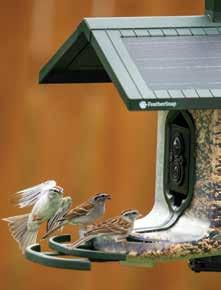

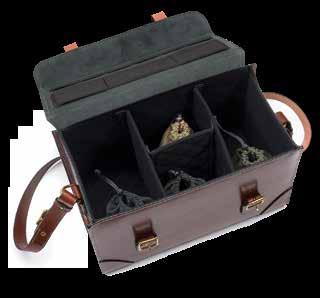

The M101 range bag is made from pretanned Italian leather of the highest standard. Each bag is hand-shaped and lacquered, using only the best leather hides. The meticulous stitching and colored edges are a testament to Falco Holsters’ attention to detail and high level of craftsmanship. Each bag has a spacious main compartment with separation walls; Velcro padding of the main compartment; included 4 nylon mesh bags for the organization of smaller items; flap with underlay & elastic loops for better organization; and rigid leather handle and padded shoulder strap for comfortable carry. Visit FALCOHolsters.com for customization options and more info.
Texas Trophy Showpieces will assist you in preserving the memories of that special hunt. Using their unique handcrafted metallization process, they can turn any skull into a showpiece.
Email Ebarrera2001@hotmail.com, or visit Texas Trophy Showpieces on Facebook for more information.
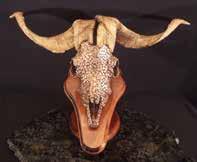

Ebarrera2001@hotmail.com
Note: We apologize for incorrectly listing the website for this product in our September/October issue. We’re listing it again with the correct website.
Orion’s Modular Box Blind is composed of a set of lightweight, 2-inch aluminum structural insulated panels, easily assembled with the Orion patented quick latch system. It can be placed into the back of a full-size pickup truck or UTV and hauled to nearest access point to your target hunting location. Thanks to the lightweight panels ranging from 15 pounds to 40 pounds, the blind can be carried to its location by foot and assembled on site in 5-10 min-

utes. No heavy equipment, extensive list of tools, or additional materials required. It’s resistant to weather and water ingress with EPDM seals on every seam. Visit huntorion.com.
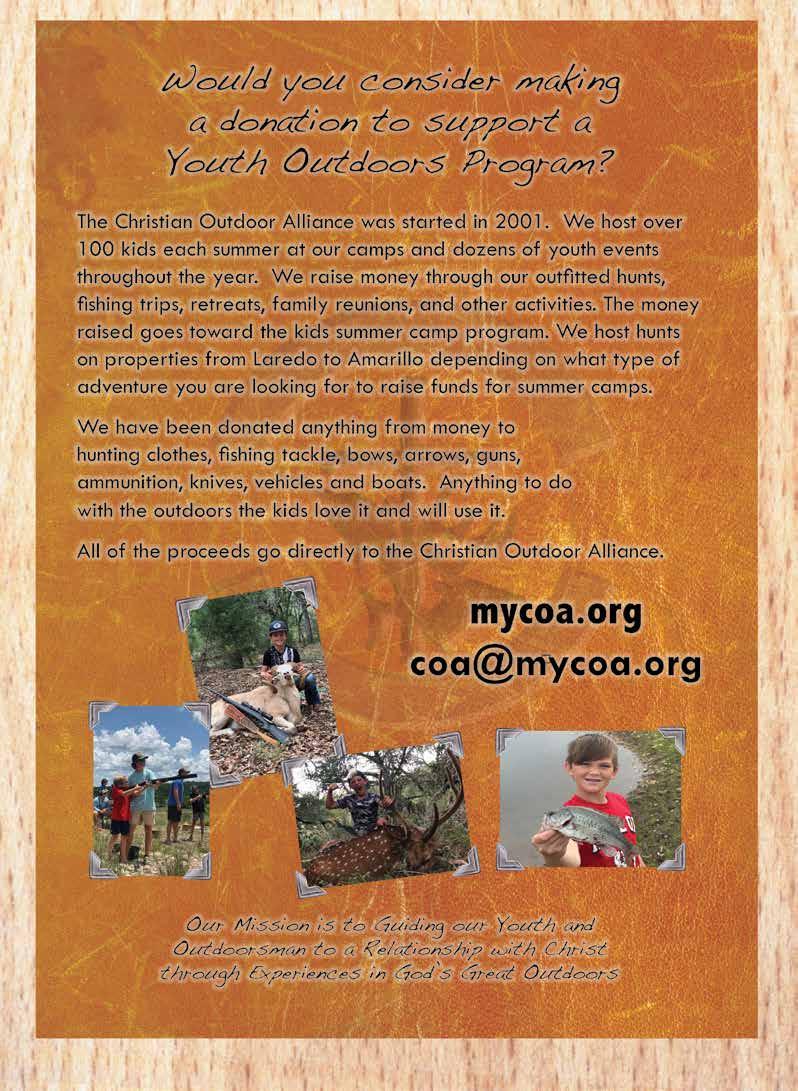

The scimitar-horned oryx has become one my favorite animals to watch, hunt, and process. The meat is outstanding, and there’s a lot of it. Not to mention they’re a beautiful animal to watch, and they also look really nice on the wall.
I first learned about the species on a field trip to the Bamburger Ranch in the late ’90s. The ranch is near Johnson City, Texas, and they had a very large and healthy herd of animals thriving in the Hill Country environment. When I first saw the oryx on the Bamberger, I could not help but wonder if people actually hunted these magnificent animals.
In those days I did not know anyone in my network of hunting friends that had taken one. A few years later that would all change. Because the oryx are valued and ranches can sell hunts for them they have an economic impact and a reason to make sure they thrive.
From the ranch’s website:
“Bamberger Ranch Preserve is a 5,500-acre ranch in Blanco County that has been restored to its original habitat. Our mission

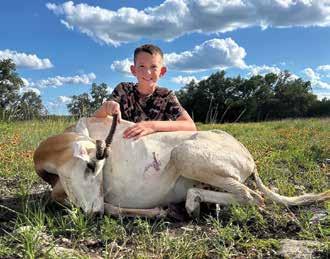
is to teach ethical land stewardship by example and outreach. We offer seminars for landowners and serve as a research lab for botanists, zoologists, and other scientists. We provide hands-on science classes and nature camps for school children — 2,000 children in a typical year. Our public tours and workshops attract land stewards, birdwatchers, photographers, and animal and plant enthusiasts.”
According to the Smithsonian’s National Zoo & Conservation Biology Institute:
“Twenty-three years after being declared ‘extinct in the wild,’ the scimitar-horned oryx has made a remarkable comeback. In December 2023, following decades of conservation efforts, the International Union for Conservation of Nature downlisted the scimitar-horned oryx as endangered.”
Each year we probably take a dozen, give or take, scimitar on our Texas ranches. Over the past 10 years we have taken more at our summer camps that we do for kids. We have a lot of great animals roaming our properties and the numbers game has worked out to where we can take several of these magnificent animals each year. The bigger male oryx will weigh in at 350 to 400 pounds and the females will weigh from 250 to 300 pounds.
We are very blessed to take these animals and enjoy the meat at our camps. Most of the meat goes home with the kids, but sharing is a big deal at the summer camps. And on our last evening together, the wild game dinner is always a hit as we cook wild pig, axis, oryx, red stag, and more. The kids definitely come back for seconds on the wild game night.
At our last summer camp of 2024, we had a young man named Luke Altman who really wanted to take an oryx. Most of the kids at our camp shoot our management oryx or our broken

horned animals, but in this case we were going to shoot a trophy animal. Luke set out with one of his friends, Colt Parkinson, and one our COA guides, Kase Kramer. The three decided they would spot-and-stalk the herd of oryx. Having a good idea of where the herd was roaming gave them a great opportunity to drive to a spot and then start their hike.
One crucial thing is staying concealed. The oryx are not really flighty, but they don’t like people walking around their vicinity. They will typically put up with our ranch vehicles and don’t run from them, but shooting from a vehicle on our ranch is something we don’t like to do. We really like the animals to see the vehicles as a friend and not a death trap. So as the crew took off after the oryx it would be tricky with three people making the stalk.
As luck would have it, they found the herd on a hill, with their noses in in the wind and feeding away from the hunters. Now all they had to do was get into position and allow the animal to give them a good broadside shot. Within minutes of getting a visual on the oryx, it was time for Luke to steady himself on the shooting sticks and make a good shot. As the animal turned broadside Luke did just that and after a short run the animal was down for good. The excitement amongst the three hunters was through the roof and after a few high fives and some great pictures they had the animal loaded up and headed to the camp.
Upon getting back to the camp, the rest of the 20-plus kids came out to look and congratulate Luke on his kill. I’m most certain that the kids were excited about Luke’s trophy, but more excited about the wild game dinner that would come their way. I get such a kick out of the kids, as they’re so serious about their hunting and just listening to them talk about the critters we take and how they take them puts a huge smile on my face. It’s a wonderful thing to introduce young people to the outdoors and recruiting more hunters and fisherman for the future.


Thank you, Lord, for the scimitar-horned oryx and their beauty. I’m proud Texas has made sure these magnificent animals have a place to thrive and prosper on Mother Earth. I encourage you to take a look at ranch, if you’re interested in a tour. If you’re looking for a family retreat or hunting opportunity, then make sure to give us a call. Texas has thousands of oryx and their numbers are increasing all the time. As I have heard many times in my
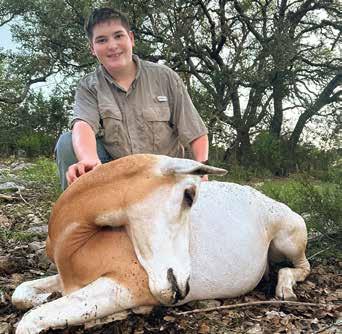
life, and I will repeat it again: “Take a child hunting and you won’t be hunting for the child.”
Michael Marbach is the CEO of the Christian Outdoor Alliance, www.mycoa.org; 210-827-9802. COA’s mission is to guide youth and outdoorsmen to a relationship with Jesus Christ through experience in God’s great outdoors.




By Heath Siegel
Last June, under the blazing Texas sun, a group of young nature enthusiasts, including myself, gathered for a unique five-day experience with the 23rd Battalion of South Texas Buckskin Brigade at Chaparrosa Ranch in La Pryor, Texas. During those five days, we delved into the world of wildlife conservation, made lasting connections, and gained knowledge that promises to shape our futures.
South Texas Buckskin Brigade provided us with a chance to discover the crucial role of wildlife management and conservation. Our camp curriculum was quite extensive and lasted roughly from sunup to sundown each day. Amongst other things, we learned about firearm safety, the importance of native plants as food sources for whitetail deer, and even got to see why controlled burns are vital for maintaining a healthy habitat for wildlife. We also explored the world of taxidermy
and dove into the anatomy of deer, helping us understand the animals we aim to better support.
But the most important lesson, and my personal favorite, was understanding why conservation efforts are so important and why our generation will have to be knowledgeable and carry on the traditions of wildlife conservation. This is all so our future generations can enjoy the same things we do. I’ve always loved wildlife, but being at South Texas Buckskin Brigade opened my eyes to how important it is to actively participate in wildlife management and conservation. It’s not just about hunting; it’s about ensuring that our natural world remains for generations to come.
Apart from gaining knowledge, we also developed teamwork and leadership skills during the camp. Working together with other campers in our assigned herds and getting to know a va-


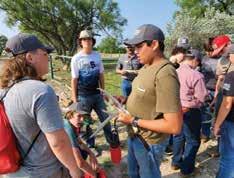
The author says the South Texas Buckskin Brigade teaches young individuals how to make an impact in the world of wildlife conservation.
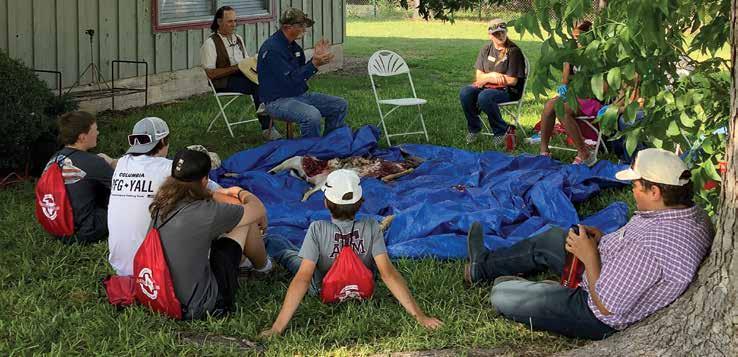
riety of mentors who taught us the power of collaboration and leadership, we went from a large group of strangers to making lifelong connections.
The camp didn’t just inspire me while I was there; it compelled me to spread awareness in my community. I felt a responsibility to share what I had learned with others. So, over the last few months, since my return from camp, I have worked hard to educate others not only on the importance of conservation, but also to make sure other teens know about the program so they can find ways to get involved.
One memorable experience was promoting upcoming camps at the Hunter’s Extravaganza in Houston. There, I spoke with like-minded individuals, shared my experiences, and encouraged them to join these programs. I have also distributed flyers around town and made several social media posts, reaching out to our local community and inspiring more young people to get involved.
I also decided to take my commitment to the next level by volunteering with activities organized by the Texas Parks and Wildlife Department, such as a kids fishing event at the Sea Center in Lake Jackson as well as an upcoming event where I will help disabled veterans on a weekend hunt. These events have allowed me to put the skills and knowledge I’ve gained at the camp to practical use while actively contributing to the cause I’ve become so passionate about.

My dedication didn’t go unnoticed. I had the privilege of being interviewed by our local newspaper, an opportunity that allowed me to share my journey and the importance of youth involvement in wildlife conservation. I hope this exposure served as a catalyst, inspiring more individuals to become a part of the program.
Looking ahead, my goal is to apply for a chance to return to the South Texas Buckskin Brigade this summer as an assistant herd leader. This role would give me the opportunity to pass on the knowledge and experiences I’ve gained to a new group of young conservation leaders.
I know the South Texas Buckskin Brigade camp was an unforgettable experience that equips young individuals with the knowledge, passion, and determination to make a real impact in the world of wildlife conservation. The lessons learned during those five days in the heart of South Texas go beyond mere facts and figures. They instill in us a deep sense of responsibility and the power to be stewards of our natural world. This camp is not just an event; it’s an important educational experience, and I’m honored to be a part of it.
Texas Brigades hosts nine summer camps throughout June and July. The application period for camp is available Nov. 1 through March 15 of each year. Additional information can be found at texasbrigades.org.
Texas Brigades is a conservation-based leadership organization which organizes wildlife and natural resource-based leadership camps for participants ranging in age from 13-17. Its mission is to educate and empower youths with leadership skills and knowledge in wildlife, fisheries, and land stewardship to become conservation ambassadors for a sustained natural resource legacy. There are multiple camps scheduled in the summers, focusing on different animal species while incorporating leadership development. Summer camps include Rolling Plains and South Texas Bobwhite Brigade, South and North Texas Buckskin Brigade, Bass Brigade, Waterfowl Brigade, Coastal Brigade, and Ranch Brigade. Visit texasbrigades.org or call 210-556-1391 for more information.




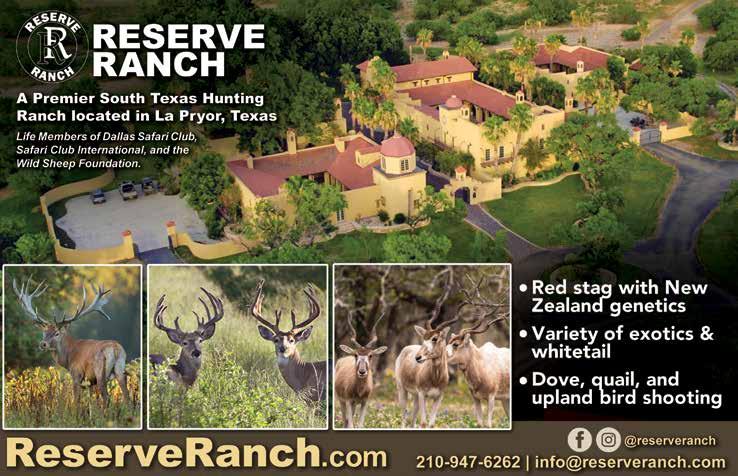

By John Goodspeed
With the end of the deer season on the horizon, hunters that love an excuse to get outdoors can turn to predator hunting, which continues year-round with no bag or size limits and a trophy claimed with every bobcat or coyote killed.
The latest callers include an ultrasonic unit that was years in the making and finally is in full production and another electronic unit using seven speakers to blast sounds in 360 degrees that received some improvements this year including the return of the company’s ultrasonic sounds.
Humans cannot hear those ultrasonic sounds, which can be made by prey in distress, but predators detect them loud and clear — and they come running to them.
Of course, those ultrasonic callers do not come cheap—coming in at $1,999 and $1,499.95 respectively—but other digital callers that produce traditional prey in distress sounds do not have to
break the bank with the least expensive one this year sitting at $119.99.
There also are a number of new mouth and hand-held calls, which have a proven track record going back decades and can go as low as $11.99. Those types of calls require a little practice to master, but they can mimic cottontail and jackrabbit distress sounds as well as coyote vocalizations such as howls, barks and pup yelps.
Digital callers with remote speakers can be placed several hundred yards away from the hunter so predators will be looking at where the sounds are coming from and may not notice the human’s movements or scent. Those mouth and hand-held calls will draw the attention of the predator to the hunter, which makes the sport even more challenging.
The following is a roundup of some of the latest products. All prices are MSRP.
After more than six years in development and a shaky start last year that had nearly 10,000 prospective owners on a waiting list, this ground-breaking call is in full production and has been available to ship since last December. What makes the Freq different is its ultra-high-frequency sounds and the ability of the unit and its speakers to broadcast them, Gary Roberson of Burnham Brothers said. Most other digital callers produce sounds within the range of human hearing. This one creates ultrasonic sounds that people can’t detect. But predators can. The Freq can play sounds up to 50,000 hertz. Its prey in distress calls can top 40,000 hertz. Ordinary callers peak out at 17,000 to 18,000 hertz. Humans can hear up to 20,000 hertz; coyotes up to 40,000 hertz; and bobcats up to 64,000 hertz. The range of the remote is nearly 300 yards. Roberson first planned to release the Freq in 2019. Delays began with production of the special speakers.
Then the COVID-19 pandemic hit the micro-chip

industry and other parts makers. The final delays were because of needed tweaks to the software and speakers. So far, the Freq has seven patents. Meanwhile, Roberson continues to add sounds to the Freq’s internal memory, which now contains nearly 400 with more than 300 animal sounds recorded on special ultrasonic equipment. He also continued to improve the speakers. Roberson captured some surprises while getting footage for his “Carnivore TV” on the Pursuit Channel for the new season, which started in July. “Bobcats and coyotes were all over the call and coming back repeatedly,” he said. “There is footage of a fox fighting the call, dragging it around and flipping it for 8½ minutes until the fox accidentally turned it off.” The Freq comes with a two-year guarantee. “It also has a 30-day money-back guarantee if you used the product and are not satisfied that it is better than anything you have ever used,” Roberson said. “I’ve had a few of them returned, mostly guys who did a big bobcat contest and used the call in the hunt — even though some of them placed with it.”
l
This electronic caller package remains Convergent Hunting Solutions’ most popular product, and the MSRP is $40 less than when introduced in 2022. The kit includes the caller, a built-in decoy, a spike to anchor them, a picatinny rail to mount a cell phone on a weapon for controlling and recording and a carrying bag. The special Bluetooth range is up to 300 feet, which is about 10 times the distance of regular Bluetooth. The Predator Pro App download, which works on Android or IOS devices, includes more than 50 sounds of prey in distress. Sounds stored on a smart phone also can be played. A picatinny rail for mounting a cell phone onto a firearm makes it easy to access the controls or record the hunt while reducing movement when using the app. The Bluetooth connection allows playing predator calls or music stored on the phone. The app features controls for volume, sounds, decoy and four programmable calls. The decoy features dual directional erratic movement to entice wary predators. The call’s 10-watt amplifier produces sounds of more than 100 decibels. The

integrated lithium-ion battery can run for 10 hours at full volume and is rechargeable with a USB cable for use in a vehicle or with a 110-volt outlet. A stain less steel stake, which stores in a compartment, anchors the caller. The stake is designed to get the speakers and decoy above vegetation. Fully extended, the Bullet HP stands more than 20 inches tall. It also comes with a threaded tripod mount to get the unit above taller vegetation or shrubs. The system packs into a water-resistant camo bag with a zippered pocket for accessories. The call also is available with sounds for deer, turkey, feral hogs, crows and snow geese. It weighs 4.9 pounds and measures 10½ inches by 14½ inches and is six inches tall. A limited lifetime warranty is included.
This flagship model in FoxPro’s electronic caller line introduced last year gets some upgrades for 2024 including the ability to play 32-bit sounds, up from 24-bit, which increases dynamic range. The X360 also brings back the ability to play ultrasonic sounds, which previously was available in FoxPro’s Prairie Blaster around 2016. The ultrasonic sounds have greater definition and higher frequencies, effectively fooling predators that come close to the call and lures them in to seal the deal. One of the main features of the X360 is its 360-degree sound, which utilizes a seven-speaker system to create a level of realism that FoxPro says has never been achieved before in the industry. It gives hunters the ability to move sound in random directions at an urgency of their choosing.
This ensures that the calls are moving around the environment mimicking the natural movement of an animal in distress. The sounds also can increase and decrease in volume for realism to fool wary predators. The unit can start with a low urgency of 360-degree sound and gradually increase the urgency or just start out with the most chaotic action. The system consists of three horn speakers, three tweeters, and a down-facing bass speaker. The built-in tripod elevates the call for better sound distribution and folds up for transport. The unit can store up to 2,500 sounds.
The Bluetooth feature can play audio files from a phone. The two built-in decoys are independently controlled. The TX-2000 remote features a large full-color LCD screen with customizable options and subcategories for easy navigation. A built-in scale can weigh predators in the field.

Other features include temperature and barometric pressure gauges, a moon phase indicator, battery level indicator for both the X360 and the TX-2000, and timer or time clock. Two buttons allow selection of favorite sounds at predetermined volumes. Two more buttons are customizable to quickly access other features. The improved FOXFusion allows two 32-bit sounds to be played at once with FOXPitch control, which offers a greater range of pitch changes. FOXCast sequences are designed by the pros. Sound sequences also can be customized. FOXData can record sounds, times, dates, barometric pressures and temperatures.

This electronic caller from Hunting Made Easy comes with a compact remote with a 300-yard range and 100 pre-loaded sounds including distress calls such as jackrabbit, cottontail and raccoon babies and coyote vocalizations that can lure coyotes, bobcats and foxes. Other sounds can bring in elk, deer, turkey, moose and duck. The remote, which can dock on the caller for transport, features a two-inch LED back-lighted screen with four to six lines of text or icons. With swiveling legs, the caller includes a four-inch speaker with volume up to 110 decibels, an external power jack and connector with a mounting bracket for an optional motorized decoy and 32 MB of internal memory. It’s powered by eight AA batteries, which are not included.
This hand-held mouth call can mimic coyote vocalizations such as howls, barks, pup yelps and pup distress as well as low and high-pitch squalls. The call features an internal-reed with a molded membrane on top. The pitch of the call is easily changed by blowing the call and adjusting the pressure on the membrane by using a thumb to press on the black bulb on top. For barks, release thumb pressure quickly. For longer sounds, add and release thumb pressure as desired. For predator or rabbit squalls, just blow through the call with no pressure. The lightweight pocket-sized call comes with a lanyard.
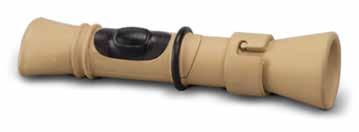

This model introduced in 2021 resurrected the name of an older electronic caller and includes some improvements for 2024 — it comes with 100 pre-loaded Johnny Stewart Premium calls, not 50, and the remote has a 300-yard range, not 200. Those calls are the same authentic wildlife sounds that put Johnny Stewart among the top brands in the industry. A USB port provides access for optional downloads of the Johnny Stewart call list. The remote sports a 2.4-inch color LCD screen with 10 back-lighting options. The caller is smaller than the older one at 5-by-5-by-55⁄8 inches and quite a bit less costly. The 3½-inch horn speaker hits 120 decibels for a long reach. A carabiner attached to the top allows the caller to be hanged from a branch. A sequential call feature can be used to set calls to play in order. A button also allows quick access to favorite calls. Two sounds can be played at the same time. The caller is powered by eight AA batteries while the remote uses four.
A new line of hand-held and diaphragm calls called the Icon Series promises to lure predators, elk, deer, turkey and waterfowl. There are two diaphragm calls in the Icon Series, The Wailer, shown here, and The Lonesome Howler Predator Mouth Call ($14.99). The Wailer is tuned to produce convincing cottontail and jackrabbit distress sounds with raspy, low tones. The Lonesome Howler can produce the tone of a lone, mature coyote with a loud, long-range howl. It features a tightly stretched prophylactic reed for maximum volume. The Icon Series also includes two hand-held calls, The

Tempter Predator Call ($44.99) and The Acrylic Tempter Predator Call ($49.99). The Tempter has a laminate barrel while the Acrylic’s barrel is constructed with that material. Both feature an easy-touse open-reed design that can replicate a wide range of sounds, from jackrabbit and cottontail distress to pup howls. The Tempter’s santoprene tone board provides a soft, comfortable feel. Combined with the laminate barrel, it allows a lower pitch and a raspy range of calls. The Acrylic Tempter increases the volume. Both are controlled with air pressure and mouth position.
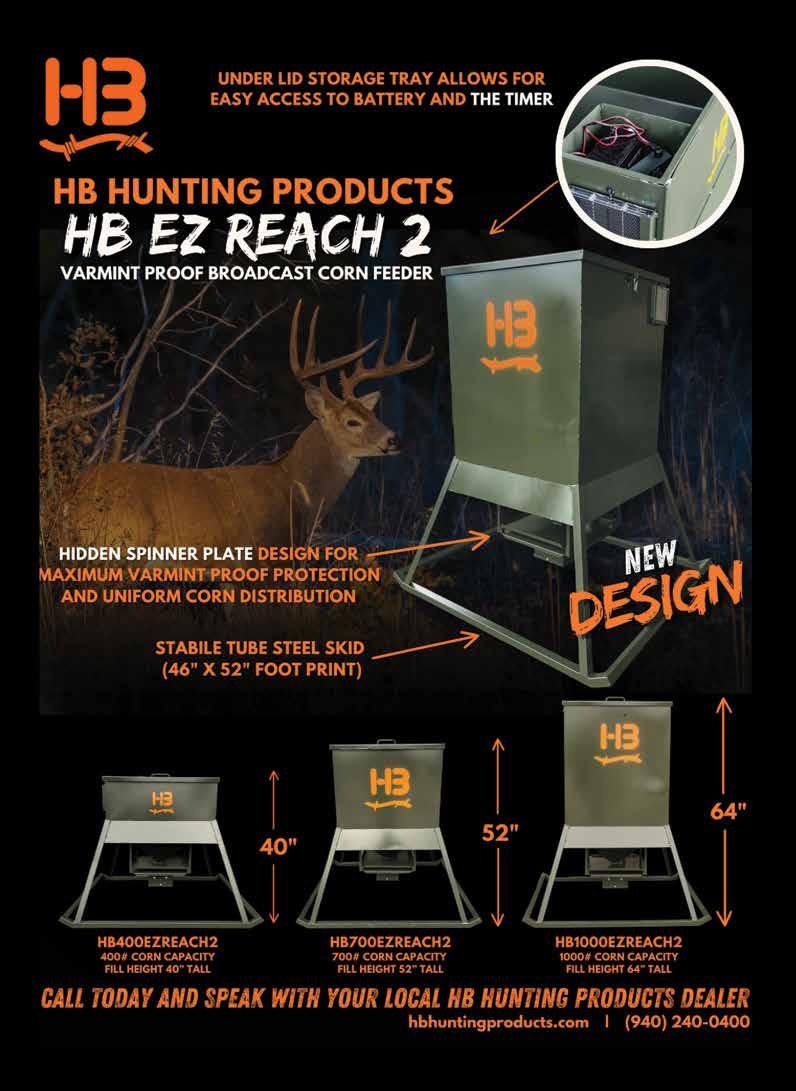
The bighorn sheep, or simply bighorn, is one of the most majestic big game animals in North America. In addition to the robust Rocky Mountain variety, there are several desert versions of this species. Interest in hunting bighorn sheep continues to grow, which funds more conservation efforts in a positive feedback loop, exemplifying how conservation works in North America. Bighorn are the poster child for conservation and restoration, driven and funded by the sustainable use of that renewable resource. Even if all sheep hunters were successful, it would amount to the harvest of only about 1-3% of the total wild sheep population in the continent. In 2024, a record $6.4 million was raised in one night for wild sheep conservation at the Wild Sheep Foundation’s 47th annual convention in Reno, Nevada. During the auction that year, a record $600,000 was paid for a single bighorn sheep hunting permit, followed shortly thereafter by a second tag
Interest in hunting bighorn sheep continues to grow, which funds more conservation efforts.
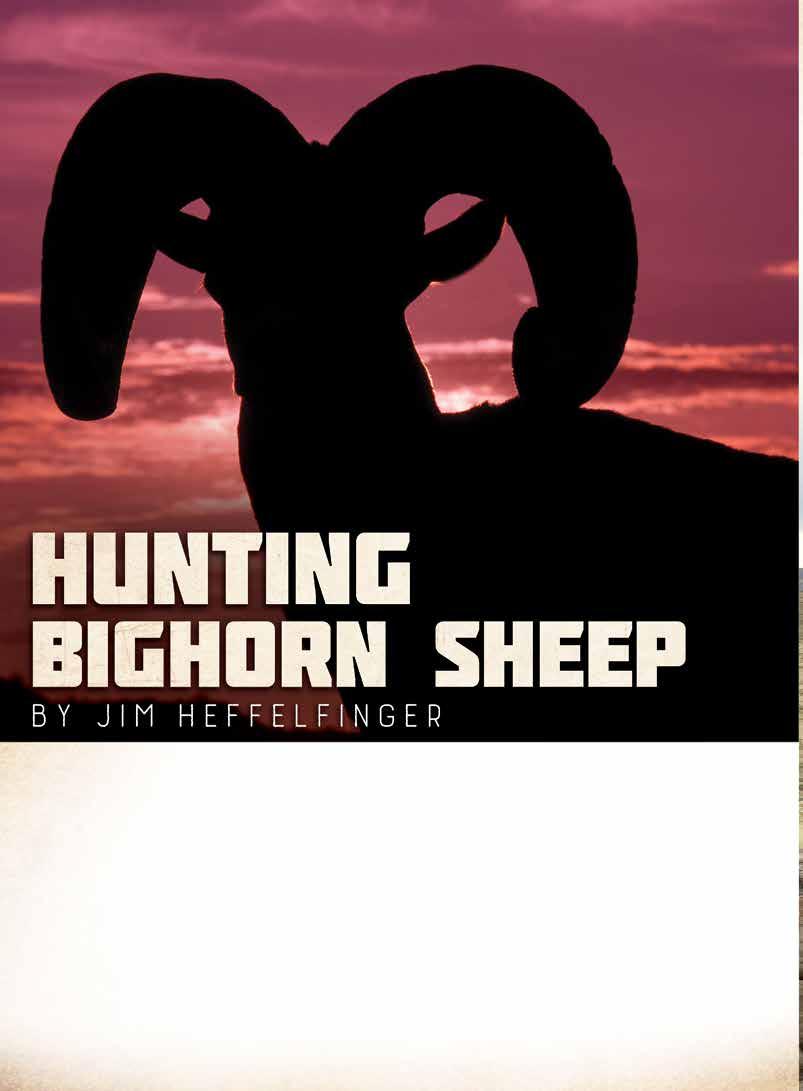
selling for the same amount. Raising $1.2 million for sheep conservation by selling two tags is a pretty clear indication of how passionate hunters are about hunting sheep. According to the Wild Sheep Foundation, about 22,000 wild sheep have been translocated during nearly 1,500 relocation events in the last 90 years in the U.S. and Canada, and that passion is the driving force.
A successful hunt starts many months before opening day. A coveted bighorn hunt is not like a deer hunt. Wild sheep tags are sometimes a once-per-lifetime affair and require a lot of preparation to be successful and enjoyable. If you fail to plan, you plan to fail. It will take you a while to assemble all the equipment you need.
This is a great excuse to buy that rifle or camo you have been
obsessing over; you probably don’t need it but since when did need have anything to do with gun purchases? Talk to others who have had that hunt (or any sheep hunt), about what to bring. At a minimum, you will need the best optics (binos and spotting scope) you can afford and a tripod to stabilize them. You will be sitting behind those optics glassing for sheep most of the day, so don’t forget a padded seat.
You’ll only need camo for the last 30 minutes of your hunt, but it may make a huge difference when you get close. Make sure you have adequate maps or mapping apps on your phone to navigate your hunt area. Good boots are too often an after-thought, but they can make or break a hunt. Preparation includes talking to your taxidermist to see how they would like to see your sheep come in after the hunt.
Be prepared to keep the meat cool and know how to prep the cape in the field. Maybe most-importantly, you must know where your gun is shooting at all yardage you feel comfortable shooting from. Lastly, prepare yourself mentally and physically for the toughest hunt you have ever been on.
Scouting is as much a part of the hunt than the actual hunt. This is the time to figure out how to get access into good sheep habitat (hopefully areas no one else is willing to go) and to get a look at the population before the hunt starts. Hopefully you have a lot of friends, if you don’t you will when you get a sheep tag in your pocket. Everyone wants to hunt sheep whether they personally have a tag or not.

It is usually not hard to find camp mates, camp cooks, and sheep glassers when you have a tag. Take advantage of that collective expertise to amplify your effort and effectiveness. If the habitat is dry, glass the areas within one mile of water sources. Start glassing as soon as it is light out so you can look across the canyon all morning before the midday heat waves start to obscure your view.
Talk to those who have hunted that area before. They will be willing to share secrets because they may never have that tag again. Cyber-scouting with mapping programs, social media, and discussion forums is a great way to gather intel. Web or app-based maps are available now to allow you to locate access roads, water sources, good glassing points, and more. Scouting is more about knowing the access into good habitat and good glassing points than actually finding the sheep you want to harvest.
When opening day comes, you may or may not have a target ram located. Ideally you will have a No. 1 shooter and a backup or two. You may have one located and patterned only to find it vanish the day before the season opens. Welcome to sheep
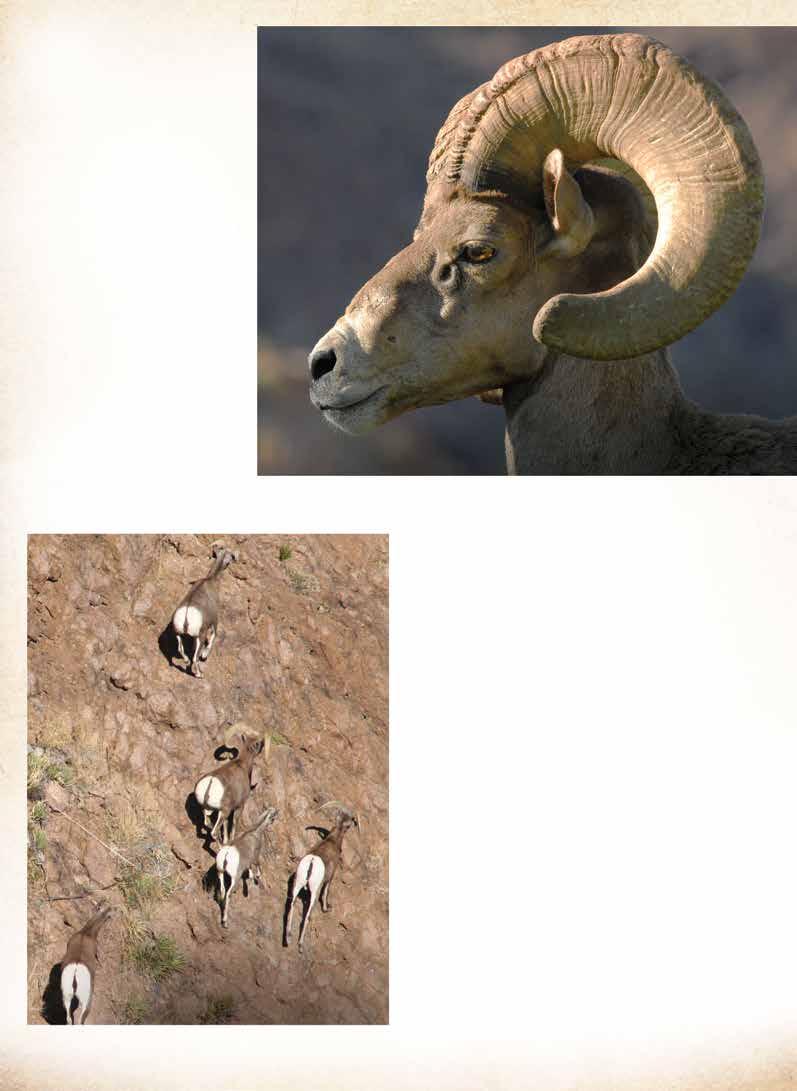
hunting. With sufficient scouting to work the bugs out of your equipment and gain knowledge of the area, it is not critical to have located your dream ram by opening morning.
Whenever possible, glass from the highest point you can and keep the sun to your back—all day. Hunt the early morning hours and late afternoon hours because they will be up and feeding and so much easier to see than when they are pretending to be a rock in the middle of the day. Sheep will head for shade or bed sites after morning feeding and take a midday nap, so you should do the same so you’re fresh and alert when they are. You are not glassing for grayish-brown animals among grayish-brown boulders, you are looking for white butts, movement, and sky-lined sheep. Use all your senses by listening for rolling rocks and head butting.
When you find a ram in the distance, and your spotting scope confirms you need to go after him, plan your entire stalk before leaving your vantage point.
According to the Wild Sheep Foundation, about 22,000 wild sheep have been translocated during nearly 1,500 relocation events in the last 90 years in the u.S. and Canada.
Approach from down-wind and from above. Sheep are also listening for rolling rocks above them and looking up so take your time.
It’s a good idea to approach on an angle from above rather than from directly above them like a mountain lion. Once a ram is spooked he will be in the next mountain range before dark. If sheep are on the move, the largest ram in a group is often going to be in the front or the back.
Before, during, and after the hunt take pictures of everything—especially details and downtime you would never think to capture. Even if your sheep hunt is not a once-in-a-lifetime opportunity, it will be one of the highlights of your hunting career and you need to capture it all. When taking pictures of the animal, be respectful and take the extra time to clean it up as best you can with no tongues hanging out. Silhouette the animal against the sky and pay attention to lighting on peoples’ faces because you can’t go back and recreate those pictures.
Work quickly to take care of the meat and keep the hide cool. Talk to your taxidermist about how to prepare the cape or hide well before your hunt, not standing on the side of a mountain with a cellphone in one hand and a knife in the other. Follow your taxidermist’s instructions so you can preserve your animal, and this experience, forever. All jurisdictions have laws about checking out the animal so biologists can record it and collect samples, and usually seal or plug the horns to permanently mark them. Planning, preparation, scouting, and execution are all important steps, but don’t forget to have fun, soak in the moment, and enjoy the most rewarding hunt of your lifetime.
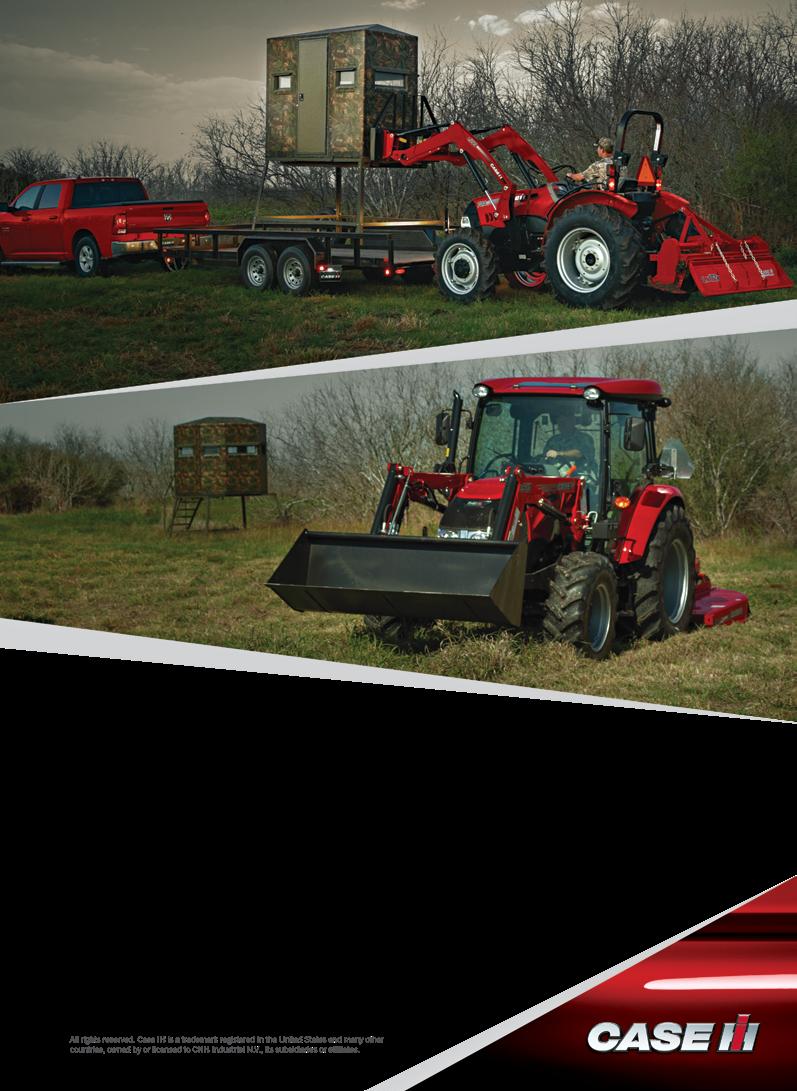
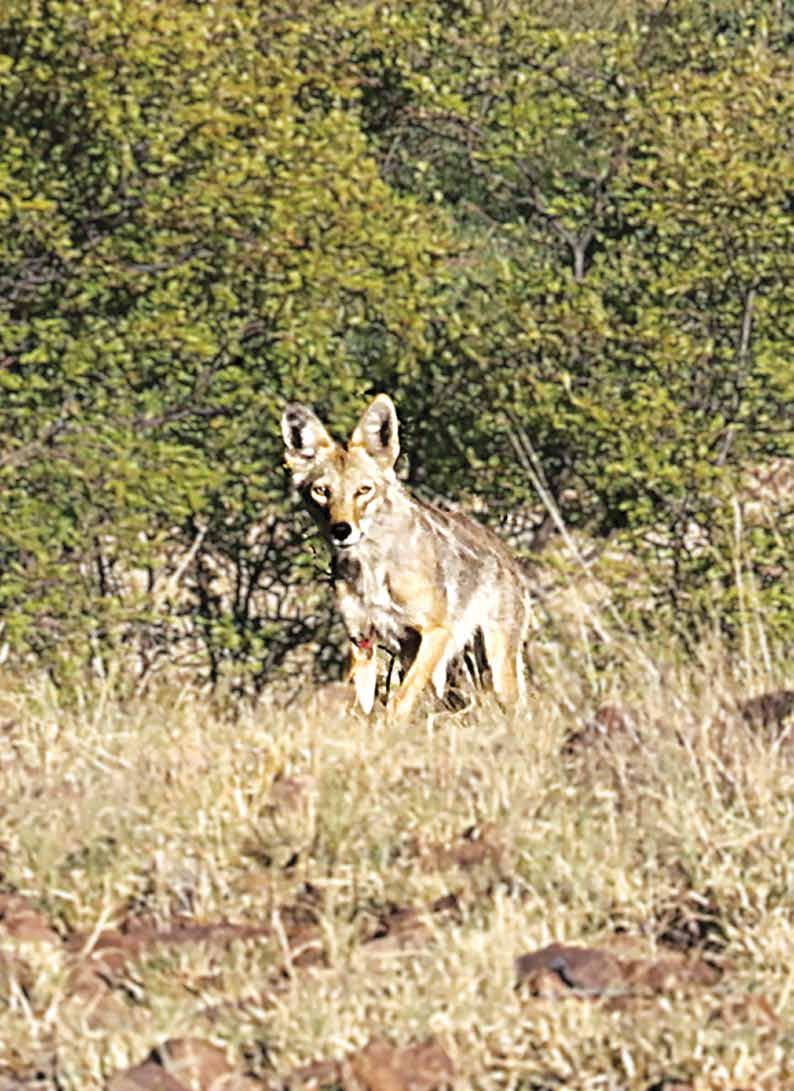
by GAry roberson
Shortly after I purchased Burnham Brothers in 1991, we hosted several predator calling contests in Menard and surrounding counties at an entry fee of $100 per team. All the entry fees were paid out to the top three placing teams. In those days, it was rare to call up and kill any predator other than gray fox and an occasional bobcat, because coyotes were few and far between as the sheep and goat industry still thrived.
Everyone snared their fence lines and if they heard coyotes howling, they would have a helicopter and gunner in the air the next morning. Landowners welcomed predator hunters with open arms, as most were spending thousands of dollars annually for predator control. I have hunted several ranches that paid bounties for every coyote and bobcat I killed.
I got the idea of having calling contests after hearing about similar hunts around Waco back in the ’60s when predator calling was gaining popularity. These hunts would begin at noon on Saturday and end at noon on Sunday when all the hunters would gather at a single location. Raccoons, foxes, bobcats and coyotes would be scored based on a point system with the highest scoring team declared the winner. I’m not sure if the first contests even required an entry fee. They were just a friendly hunting competition.
Today, many of the contest are used as fundraisers for non-profit organizations such as the one in Menard, put on by the volunteer fire department where a portion of the fees are retained to keep the fire department running. I’m aware of several contests where a portion of the entry fees go to support local 4-H clubs or FFA activities.
In 1995, I teamed with Larry Symes from Norman, Oklahoma, to compete in the World Coyote Calling Championship at Cortez, Colorado. I don’t remember the entry fee for the two-man team, but I do recall fewer than 100 teams from across many states participated. Larry and I didn’t win or even place, as we hunted country in the Navajo Nation we had never seen before. We did kill three coyotes, which was fairly respectable because it was a daytime hunt only.
Today, due to the popularity of predator calling, there will generally be several contests scattered across the state every weekend through the winter and early
spring. Without a doubt, the largest of these contests is the West Texas Big Bobcat Contest held in San Angelo. It holds three different contests each winter: one in January, one in February, and one in March.
Jeremy Harrison was one of the original founders of the West Texas Big Bobcat Contest in 2008. Today, Todd Schwartz and Quienten Holik have partnered with Jeremy to help run this huge contest. When I say big contest, in January 2020, 717 teams entered. The payout on the biggest bobcat in that contest was just over $50,000. Prize money is also awarded to the top five heaviest bobcats and the heaviest gray fox. Jackpots are paid to the most bobcats, most gray fox and most coyotes.
Anytime you have that much money paid in a contest of any kind, you’ll have folks who try to gain an unfair advantage. For this reason, the WTBBC requires all winners take polygraph tests, take body temperatures of the critters, and have carcasses examined by professionals in an attempt to find any evidence of foul play.
In 2024, 1,836 teams entered the contest and $421,280 was paid out in prize money. Since the first hunt in 2008, the WTBBC has paid out $3,961,020.
Prize money and the reduction of the predator population are not the only benefits of these contests. USDA and TPWD routinely test the gray fox for rabies, while various wildlife science students have taken predators for additional research studies. Taxidermists and fur buyers are present for the January and February hunts to pick up some of the more beautiful animals. In short, every step is taken to ensure these critters will be used in one fashion or another. Contestants are responsible for ethically disposing of any and all carcasses not used for any of the purposes described above.
Perhaps the greatest benefit of this hunt is that it gets kids into hunting. While teams are limited to four members, non-hunters, especially kids, may tag along but cannot assist in the hunt in any way.
The last time I looked, USDA’s Wildlife Services budget was approximately $150 million. I’m aware that only a part of this budget goes for predator control. However, there’s no doubt that between private landowners and Wildlife Services, millions of dollars get spent for predator control annually.
In my opinion, it’s difficult to see many negatives to these contests. Hunters make arrangements to hunt on private property, and must have a valid hunting license and a trapping license, if planning to sell the fur. Coyotes, bobcats and gray fox are non-game animals, therefore, there are no seasons

In spite of all the benefits of predator calling contests, these events are being attacked by well-funded animal rights groups claiming that they are merely “killing” contests. Most of these folks mean well, but do not understand the need for predator control.
In the author’s opinion, it’s difficult to see many negatives to predatorcalling contests. Hunters hunt on private property. They must have valid hunting and trapping licenses, if they plan to sell the furs. Coyotes, bobcats and gray fox are nongame animals, so there are no seasons or bag limits.
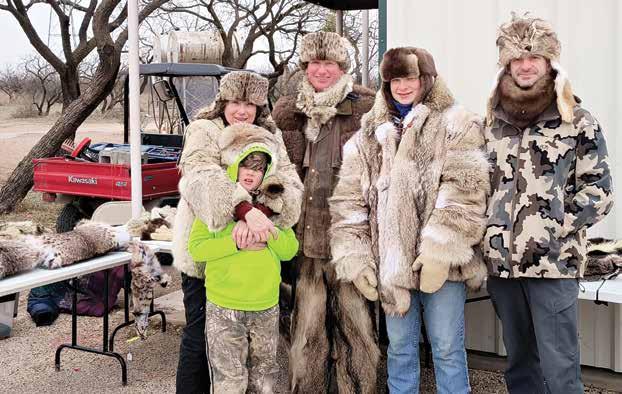
or bag limits. The reduction of the predator population as a result of these contests is at no expense to the taxpayers.
I will be the first to say we are never going to endanger predator populations simply by calling. In fact, I believe there are more predators today in spite of the fact there are more predator hunters than ever. I believe this is due in part to the fact there are more absentee landowners who are not interested in predator control. Another reason for the increase in predator numbers is because sheep and goat ranchers lost the wool and mohair incentives in 1993 and quit controlling varmints. It became less profitable to raise sheep and goats, and the ranchers were less concerned about predator control.
In spite of all the benefits of predator calling contests, these events are being attacked by well-funded animal rights groups claiming that they are merely “killing” contests. Most of these folks mean well, but do not understand the need for predator control. Unfortunately, it’s easy to convince someone to donate to an organization that’s purpose is to stop “unnecessary killing.” The most vocal of these organizations is Project Coyote, not surprisingly, headquartered in California. Project Coyote describes itself as “a non-profit organization that promotes compassionate conservation
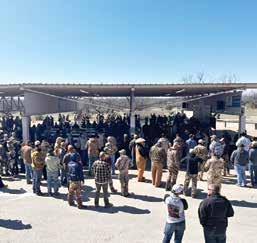
and coexistence between people and native carnivores.”
As long as I can remember, there have been people opposed to your right to hunt. However, it was not until the popularity of predator calling contests that I began to see organized opposition to predator hunting. Unfortunately, it’s extremely difficult to change someone’s mind once they decide that hunting is a bad thing.
In fact, the only way that I have seen anti-hunters change their way of thinking is when predation affected them. A few years ago, I got a call from a resident of an area just west of Austin. The sobbing voice asked if I was Gary Roberson. I assured her I was.
She admitted to being an anti-hunter and was totally opposed to killing any
creature until yesterday morning. She had turned her miniature poodle into her fenced backyard so that it could “do its business,” as she had done every morning. A couple of minutes later, she heard her dog screaming. She ran to the back door to see a coyote jumping over the backyard fence with her dog in its mouth. She gave chase but she was no match for the coyote as he disappeared into the greenbelt in her subdivision.
When her husband returned, a search recovered the dog’s collar and very little else. She said, “Mr. Roberson, I hear that you are very good at calling up coyotes and killing them. I will pay you whatever you want if you will please come here and kill every coyote in the country.”
I explained to her how we hunted and required the use of a high-powered rifle or shotgun. I assured her that her neighbors would not allow it, and furthermore, would be against the law in her subdivision. She said that she understood and wanted me to know that she and her husband were no longer against hunting.
Hopefully, we will find a way to educate anti-hunters to the benefits of predator hunting without them experiencing the loss of a pet, or even worse.

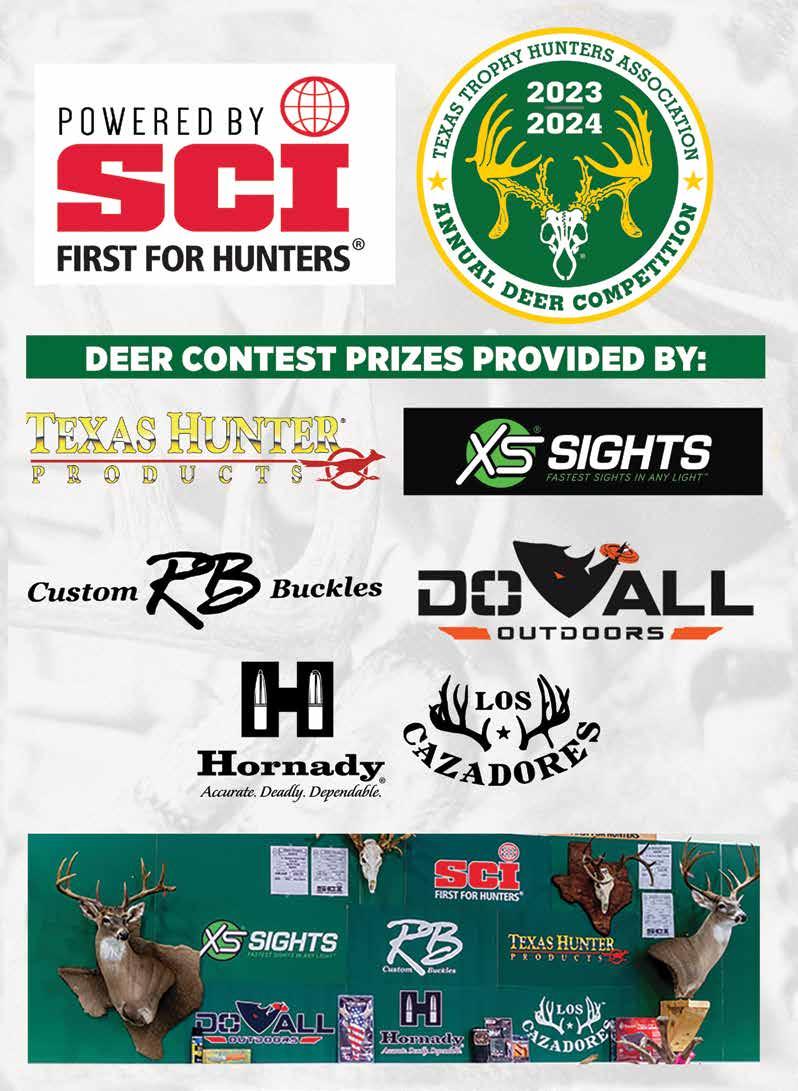
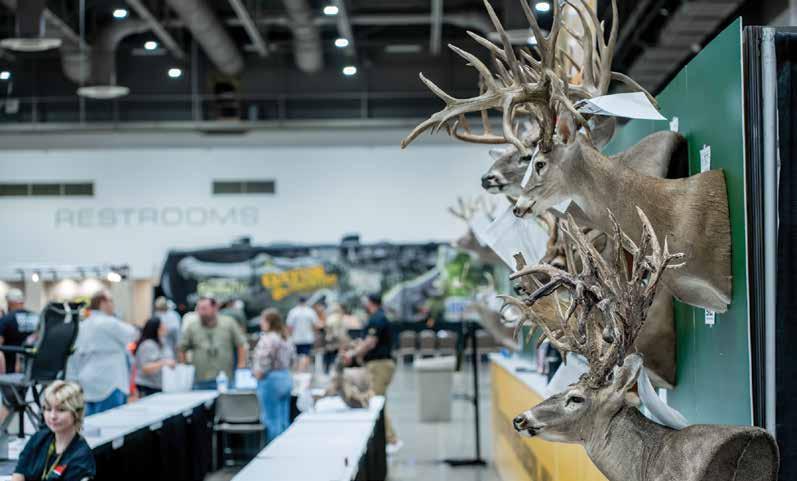


The deer seasons for 2023-24 were nothing to brag about. We were still in a drought and open range antlers were just so-so. Well managed deer herds that had supplemental feed and minerals fared much better, and on a scale of 1 to 10, deer hunters enjoyed a 7 season. The three Hunters Extravaganzas in Houston, Fort Worth, and San Antonio had deer competitions that reflected the droughty season, but all deer contests were very competitive.
Beginning with the 2023-24 Annual Deer Competition, an SCI team performed the Boone and Crockett scoring, using the new Trophy Scan technology developed by Los Cazadores. The 3-D scanner will be used in all future deer competition scoring.
—Horace Gore
Houston—17 total, 3 youth Fort Worth—39 total, 14 youth San Antonio—22 total, 7 youth
HOUSTON:
Fallon Clepper: 162, Uvalde County—Best of Show Open Range, High Overall Women’s, People’s Choice
Garland Spivey: 372, Walker County—Best of Show High Fence
Brenton Vaughan: 1146⁄8, Leon County—High Overall Youth
Matthew Cole Bridges: 1274⁄8, Polk County—Best Perfect 8

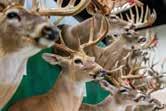
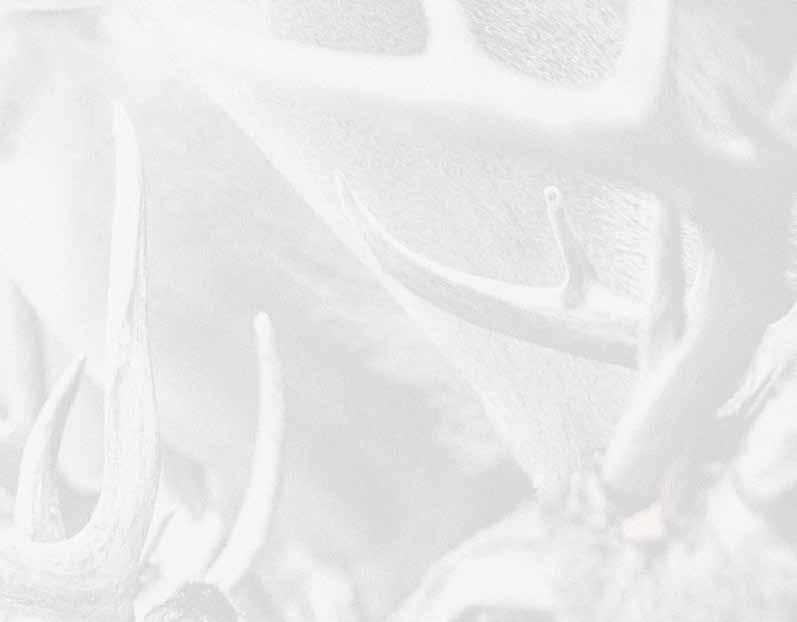
Dewayne Scheffe: 1806⁄8, Clay County—Best of Show Open Range
Matthew Dixon: 5345⁄8, Van Zandt County—Best of Show High Fence
Glenda Bullard: 1286⁄8, Parker County—High Overall Women’s
Dean Gallaher: 2481⁄8, Shackelford County—High Overall Youth
Ty Newman: 1361⁄8, Anderson County—People’s Choice
Azura Linden: 1211⁄8, Tarrant County—Best Perfect 8
Brooklyn Bowling: 1851⁄8, La Salle County—Best of Show Open Range, High Overall Youth
Jennifer Webster: 310, Burnet County—Best of Show High Fence, High Overall Women’s
Rusty Badillo, 2081⁄8, Frio County—People’s Choice
Brock Brown: 245 2⁄8, Tarrant County—Best Perfect 8
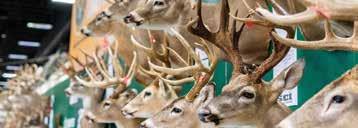
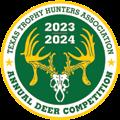



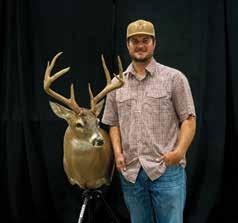

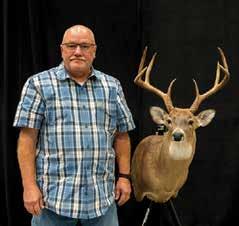
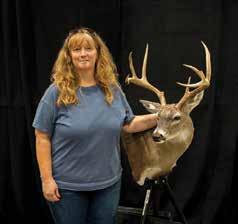


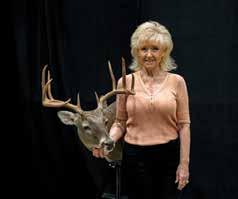
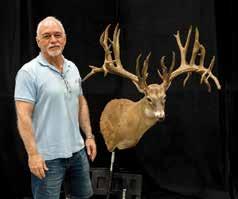
randall CoSta

MODERN ARMS OPEN RANGE NORTH TEXAS
Matthew Cole Bridges, 1st adult male, typical, 1274⁄8, Polk Co., Best Perfect 8
George Pearson, 2nd adult male, typical, 1256⁄8, Lampasas Co.
Tamara Fincher, 1st adult female, typical, 1106⁄8, Schleicher Co.
SOUTH TEXAS & MEXICO
Fallon Clepper, 1st adult female, typical, 162, Uvalde Co., Best of Show Open Range, High Overall Women’s, People’s Choice
Sophia Cantu, 1st youth female, typical, 983⁄8, Mexico
MODERN ARMS HIGH FENCE NORTH TEXAS
Garland Spivey, 1st adult male, non-typical, 372, Walker Co., Best of Show High Fence
Matthew Cole Bridges, 1st adult male, typical, 1617⁄8, Edwards Co.
Waverly Tripplett, 1st youth female, typical, 1062⁄8, Lee Co.
SOUTH TEXAS & MEXICO
Larry Hlavaty, 1st adult male, typical, 1742⁄8, Webb Co.
Duane Ondruch, 2nd adult male, typical, 1601⁄8, Live Oak Co.
Jackson Craft, 3rd adult male, typical, 1073⁄8, Duval Co.
ARCHERY OPEN RANGE
Jane Hale, 1st adult female, typical, 1404⁄8, Duval Co.


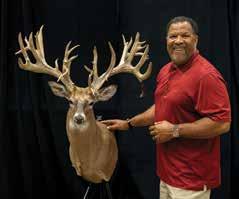
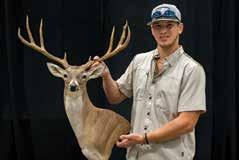
Brenton vauGhan
BEST IN PREVIOUS FIVE SEASONS NORTH TEXAS
Randall Costa, 1st adult male, non-typical, 376, Lampasas Co.
OUT OF STATE
Oscar Taylor, 2915⁄8, Michigan
HIGH OVERALL YOUTH
Brenton Vaughan, 1146⁄8, Leon Co.
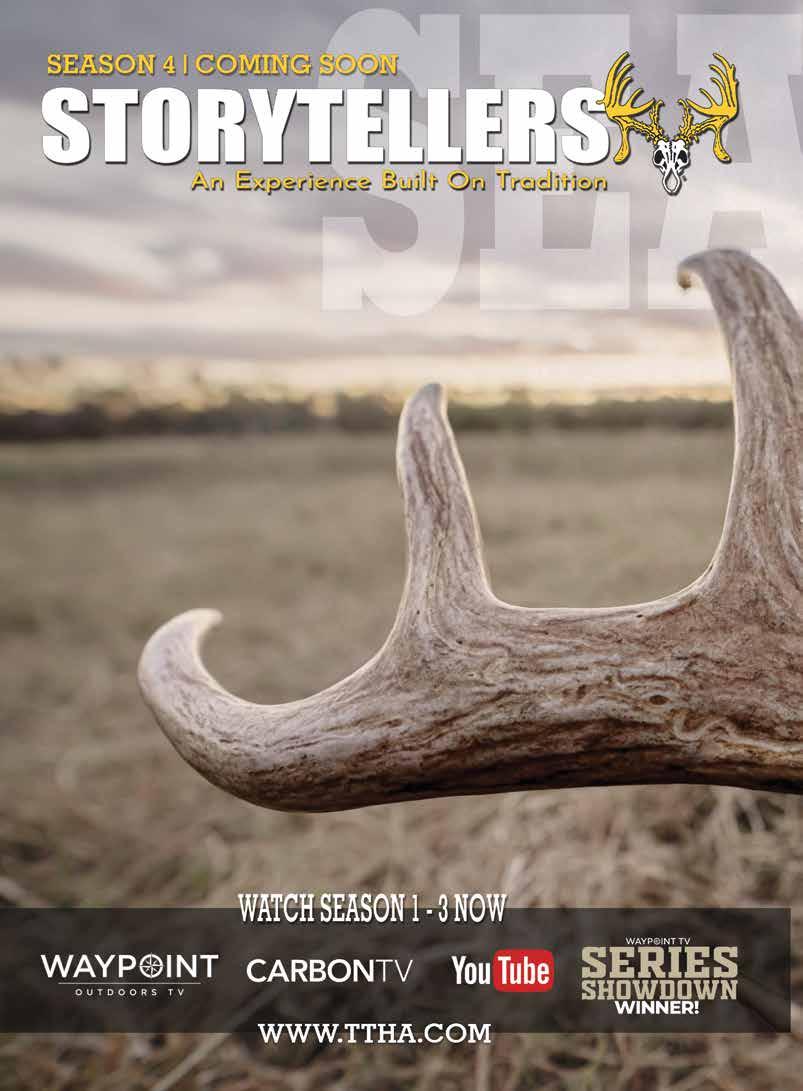
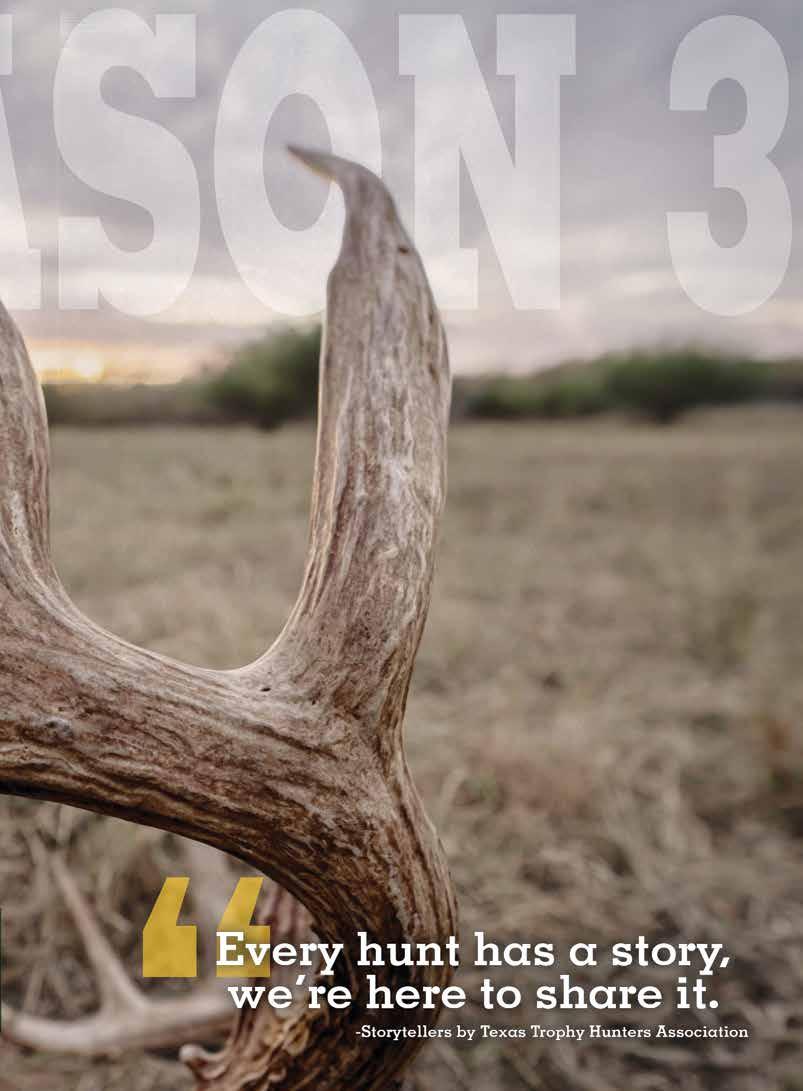


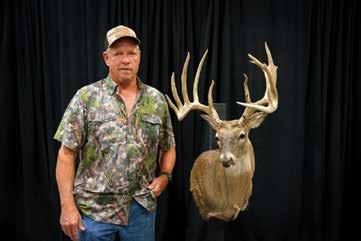
dewayne SCheFFe BEST OF SHOW (OPEN RANGE)
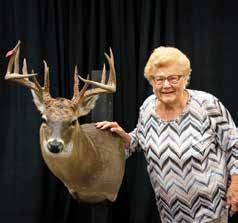
Bullard
HIGH OVERALL FEMALE

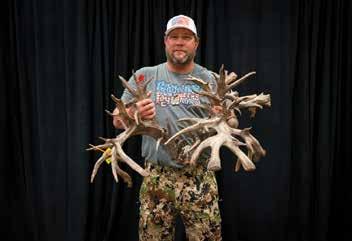
Matthew dixon BEST OF SHOW (HIGH FENCE)

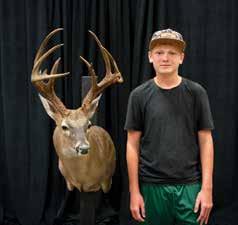


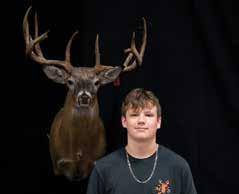
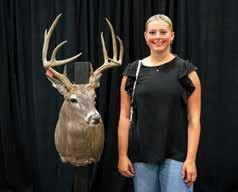
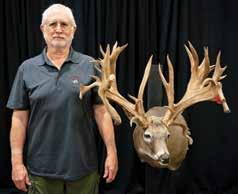

MODERN ARMS OPEN RANGE
Dewayne Scheffe, 1st adult male, 1806⁄8, Clay Co., Best of Show Open Range
Hunter Smith, 2nd adult male, 171, Cooke Co.
Daniel Keown, 3rd adult male, 1415⁄8, King Co.
Manuel Treviño III, 4th adult male, 1321⁄8, King Co.
Rory James, 5th adult male, 1295⁄8, Stephens Co.
Glenda Bullard, 1st adult female, 1286⁄8, Parker Co., High Overall Female
Jill Schick, 2nd adult female, 1262⁄8, Freestone Co.
Maddox Verden, 1st youth male, 1543⁄8, Montague Co.
Michael Logan, 2nd youth male, 1481⁄8, Baylor Co.
Ty Newman, 3rd youth male, 1361⁄8, Anderson Co., People’s Choice
Brooks Bilbrey 4th youth male, 1332⁄8, Donley Co.
Brooklyn Mayfield, 1st youth female, 1405⁄8, Stephens Co.
Macey Leichliter, 2nd youth female, 1236⁄8, Wise Co.
Tenley Neuman, 3rd youth female, 1132⁄8, Anderson Co.
Matalynn Stone, 4th youth female, 1077⁄8, King Co.
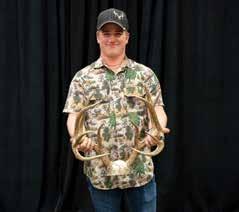

MODERN ARMS HIGH FENCE NORTH TEXAS
Matthew Dixon, 1st adult male, 5345⁄8, Van Zandt Co., Best of Show High Fence
Billy Bryant, 2nd adult male, 3122⁄8, Navarro Co.
Mark Shadburn, 3rd adult male, 2092⁄8, Bandera Co.
John Huff, 4th adult male, 203, Jack Co.
Edwin Haugen, 5th adult male, 1522⁄8, Upshur Co.
OUT OF STATE
Rodney Gann, 3426⁄8, Pennsylvania
ARCHERY OPEN RANGE NORTH TEXAS
Levi Lynn, 1st adult male, 171, Shackelford Co.
Jay Gillespie, 2nd adult male, 154, Jack Co.
Michael Maxfield, 3rd adult male, 1521⁄8, Throckmorton Co.
Justin Allison, 4th adult male, 1475⁄8, Parker Co.
Bo Linden, 5th adult male, 1166⁄8, Tarrant Co.
Case Summers, 1st youth male, 1492⁄8, Sterling Co.
Tate Miles, 2nd youth male, 1087⁄8, Shackelford Co.
Grace Waller, 1st youth female, 128, Shackelford Co.

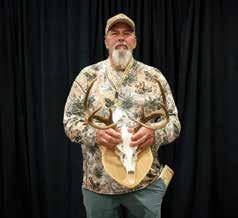
azura linden
BEST PERFECT 8
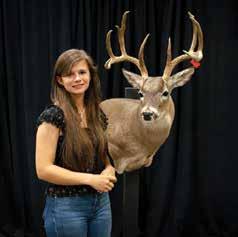
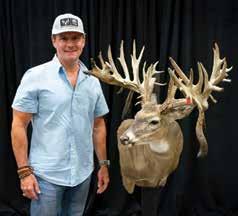
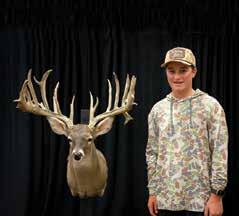
dean Gallaher
HIGH OVERALL YOUTH
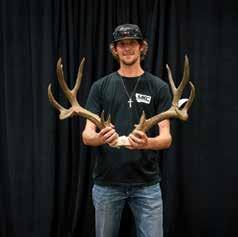


ARCHERY OPEN RANGE NORTH TEXAS (CONTINUED)
Azura Linden, 2nd youth female, 1211⁄8, Tarrant Co., Best Perfect 8
ARCHERY HIGH FENCE NORTH TEXAS
Jason Clayton, 1st adult male, 3431⁄8, Falls Co.
Dean Gallaher, 1st youth male, 2481⁄8, Shackelford Co.,
High Overall Youth
BEST IN PREVIOUS FIVE SEASONS
Macey Leichliter, 1337⁄8, Gillespie Co.
BEST TEXAS MULE DEER
Michael Gilder III, 1st adult male, 1684⁄8 typical, Winkler Co.
Mark Shadburn, 2nd adult male, 1604⁄8 typical, Bailey Co.
Andrew Anderson, 3rd adult male, 1527⁄8 typical, Hall Co.
Christian Chatellier, 4th adult male, 1412⁄8 typical, Lamb Co.
Perry Hightower, 5th adult male, 120 2⁄8 typical, King Co.
Brent Schumacher, 1st adult male, 1005⁄8 non-typical, King Co.



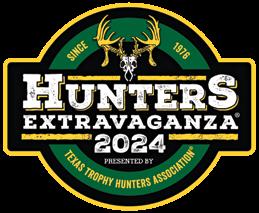
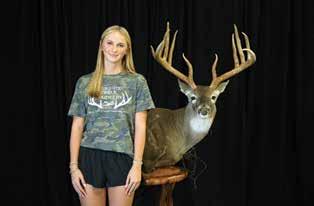
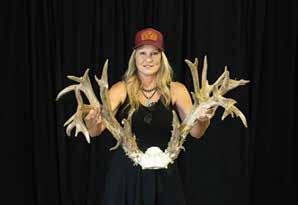

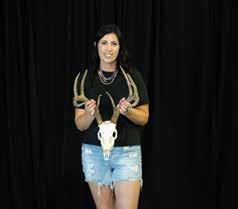

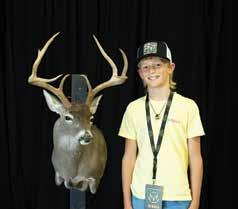


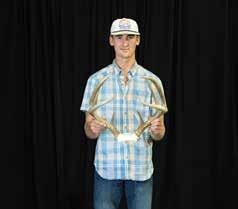
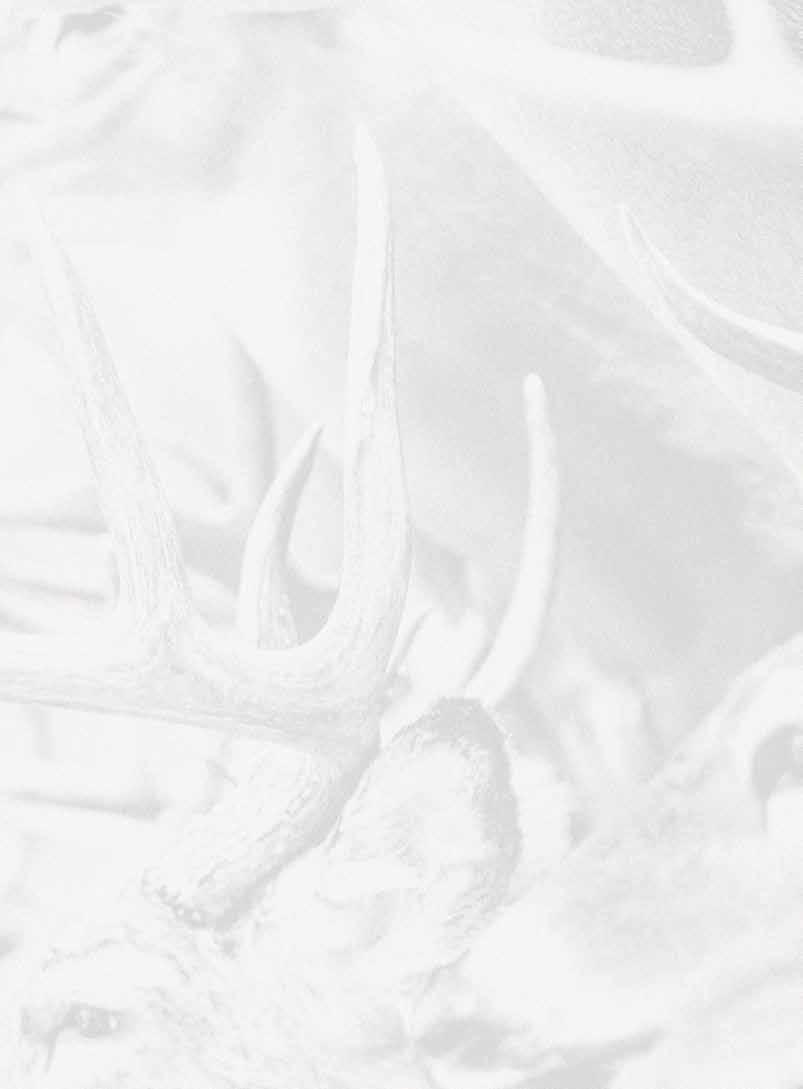
MODERN ARMS OPEN RANGE NORTH TEXAS
Sarah Parker, 1st adult female, typical, 1421⁄8 , Shackelford Co.
Amanda Brown, 2nd adult female, typical, 1263⁄8, ,Tarrant Co.
Brock Brown, 1st youth male, typical, 1452⁄8, Tarrant Co., Best Perfect 8
JW Seabolt, 2nd youth male, typical, 1416⁄8, , Bandera Co.
Jonathan Amador Jr., 3rd youth male, typical, 1144⁄8 , Sutton Co.
SOUTH TEXAS & MEXICO
Kyle Pruski, 1st adult male, typical, 1533⁄8 ,Webb Co.
Remington Rhode, 1st youth male, typical, 1446⁄8, Webb Co.
Rhett Rhode, 2nd youth male, typical, 1433⁄8, Webb Co.
Brooklyn Bowling, 1st youth female, typical, 1851⁄8, La Salle Co., Best of Show Open Range
High Overall Youth
OUT OF STATE
Ciara Hampton, 1st adult female, typical, 1482⁄8 , Nebraska

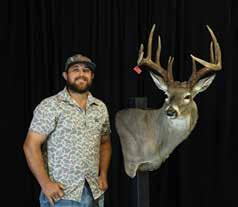
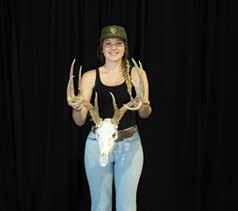
MODERN ARMS HIGH FENCE NORTH TEXAS
Jennifer Webster, 1st adult female, non-typical, 310, Burnet Co., Best of Show High Fence
High Overall Women’s

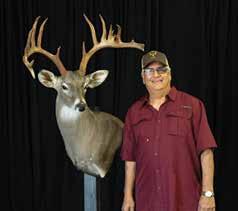
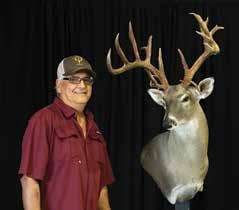

JoShua SpenCer
SOUTH TEXAS & MEXICO
Julian Garcia Jr., 1st adult male, typical, 1582⁄8,Webb Co.
Julian Garcia Jr., 1st adult male, non-typical, 2142⁄8, Webb Co.
Rusty Badillo, 2nd adult male, non-typical, 208 1⁄8, Frio Co., People’s Choice
Joshua Spencer, 3rd adult male, non-typical, 1484⁄8, Duval Co.
ARCHERY OPEN RANGE
NORTH TEXAS
Keith Aikens, 1st adult male, typical, 151, Tarrant Co.
Sadie Seabolt, 1st youth female, typical, 1256⁄8, Burnet Co.
BEST IN PREVIOUS
FIVE SEASONS NORTH TEXAS
Matt Carr, 1st adult male, 1862⁄8, Kaufman Co.

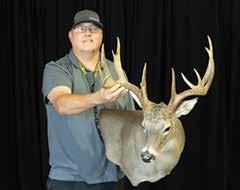
keith aikenS

SOUTH TEXAS & MEXICO
Timothy Ruppel, 1st adult male, 1515⁄8 , Atascosa Co.
BEST TEXAS MULE DEER
Trevor Hancock, 1st adult male, 1734⁄8, Gaines Co.
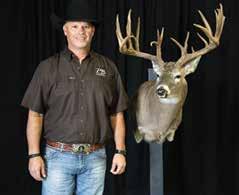
ruSty Badillo PEOPLE’S CHOICE
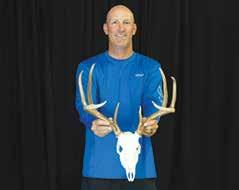


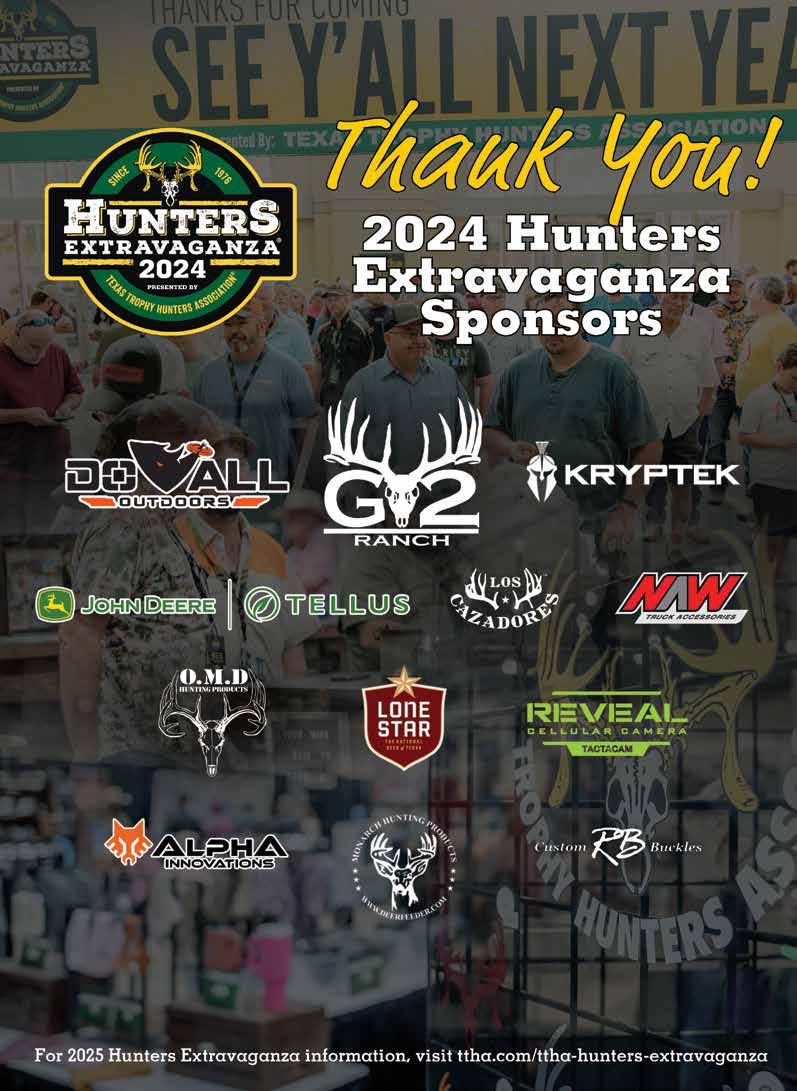
Each year during the month of August, deer hunters of all ages from Texas, Mexico, and out-of-state, bring their bucks to the Hunters Extravaganza Annual Deer Competition in Houston, Fort Worth and San Antonio. Young hunters proudly enter their trophy—sometimes their first buck—hoping to win a prize. TTHA is proud to recognize some of these young hunters and their trophy bucks.

Tate and Tanner Miles are Trophy Hunters of Tomorrow. The brothers are the sons of Trace Miles of Poolville, located in Parker County, Texas. Tate is 10 and Tanner is 7, and they attend Poolville Elementary. An interesting aspect of both young brothers is that they are outstanding bowhunters, and each has taken deer and hogs with compound bows. This story will relate the bowhunting success of each brother.
Tate has about 30 successful bowhunts on deer, hogs, and one turkey gobbler. He started using a compound bow at age 6. The poundage rule for compound bows was relaxed from 40 pounds by Texas Parks and Wildlife several years ago, so younger bowhunters could pull a bow with enough poundage to take a deer or hog. Trace took advantage of the rule, and Tate began hunting deer with a compound bow when he was in the first grade.
During the last five seasons, Tate has taken 10 bucks on the family hunting lease in Shackelford County. Three of these bucks
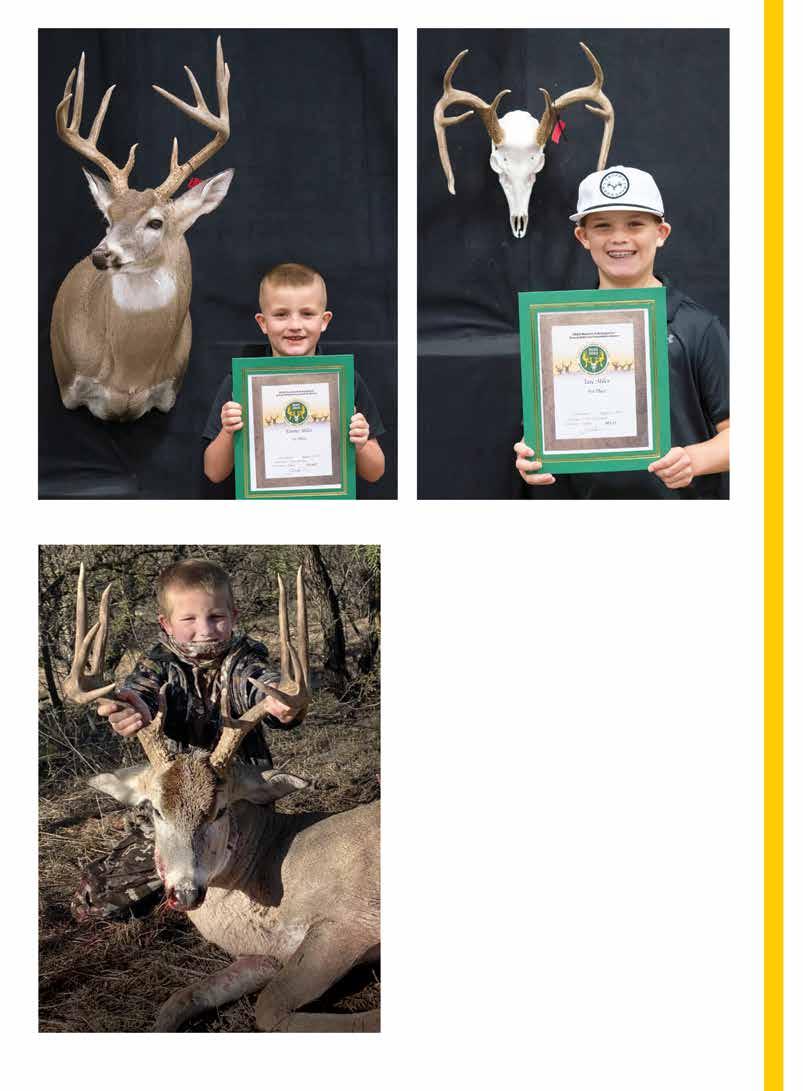
netted Pope & Young Book scores, and Tate entered bucks in the Fort Worth Hunters Extravaganza deer competition for seasons 2021-22; 2022-23; and the past 2023-24 competition.
Tate hunts from a blind with his father, and besides the deer, he has a lot of hogs to his bowhunting credit. You can be assured that Tate will be in a deer blind when deer season opens.
Tanner has about 11 successful bow hunts to his credit since he started shooting a crossbow when he was 5 years old. During his three years of bowhunting, he has taken three bucks and several hogs with the crossbow. During the 202324 season, Tanner switched from the crossbow to a compound bow and took two does and some hogs.
Tanner’s buck from 2022-23 season won first place for Youth Open Range at the Fort Worth Extravaganza deer competition. He’s anxious to get into the blind with dad this season, and woe is the deer or hog that gets within shooting distance of Tanner and his compound bow.
Tate and Tanner are lucky to have a father who makes sure that the boys get every opportunity to bow hunt each season. The Clear Fork of the Brazos in Shackelford County is a great place for deer, turkey and hogs, so I guess we will hear much more about the bow hunts of Tate and Tanner Miles—Trophy Hunters of Tomorrow.
Did we mention when the Miles brothers are not bowhunting or practicing with their bows, they like to fish and play baseball? Sounds like Tate and Tanner are busy in the outdoors of Parker and Shackelford Counties.

by Horace Gore
Iknow several Texas ladies around the state, and the rifles they shoot. Most hunt whitetails and hogs, but a few take a mule deer, aoudad, axis, or nilgai on occasion. Their rifles will surprise you, because the calibers are as different as night and day. These “Texas sure-shots” are all good hunters, and they won’t mind me revealing their rifle choices.
I’ve known Tina Kahlig of San Antonio for over 25 years, and the first time we met, we were chasing pronghorn antelope with Ozzie Barrett and Brian Hawkins on the Bar-lite Ranch between Alpine and Marfa. The hunt was fast and rowdy, but we got Tina’s young son, Landon, a good pronghorn, while Brian filmed the hunt for the Trophy Hunters TV show.
Tina wasn’t toting a rifle then, but between being a full-time realtor and part-time deer hunter, she has shot a Kleinguenther 7mm Magnum for many years. Hunting with hubby Clarence Kahlig, Tina has put some big trophy bucks in the truck.
Christina Pittman, president and CEO of Texas Trophy Hunters, hunts deer and other wild critters with husband Matt and the kids. Her go-to rifle is a Savage .243 and she has several bucks and hogs to her credit. On occasion, she shoots a Daniel Defense .308 and a Sig Cross 6.5 Creedmoor. Young Ava has several corn bandit (’coons) notches on her .22. She, 7, and Gunnar, 3, go to the deer lease, and will no doubt be hunters like Mom and Dad.
Like so many other lady hunters, Christina has found that her Savage .243 with 100-grain bullets is good for Texas whitetails and feral hogs. The recoil is minimal, and a well-placed bullet will put the coup de grâce on a buck or hog every time.
Laura Berry of Corpus Christi and I have been friends a long time. We both grew up in East Texas: she in the Pineywoods of Shelby County, and me in the flatwoods of Bowie County. Laura says she didn’t hunt until she married Marvin Berry. Marvin introduced her to hunting and shooting, and the rest is history.
I think the first gun Marvin gave Laura was a pistol, but she grew to love hunting with rifles and shotguns. She brags about all four of her boys taking their first buck while sitting on
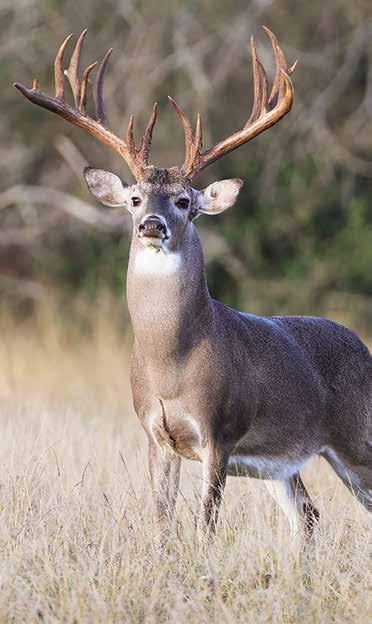


her knee in a Real County deer blind. Of her four sons, Laura laughs and says, “Four of a kind beats a full house every time.”
Laura’s favorite rifle for years has been a Weatherby .300 Mag., and the last non-typical buck she took with it was the best of her many South Texas whitetails. She has taken many bucks to the Muy Grande contest at Freer. And the almost opposite to her old .300 Weatherby Mag. is a little .224 TTH that she uses to thin out hogs in the off-season. By the bye, Laura is the No. 2 Platinum Life Member, a member of the Muy Grande Hall of Fame, and her shotgun has brought some mighty competitive shooters to their knees.
Debbie Keene, Journal executive editor of San Antonio, has hunted whitetails in South Texas for many years. I was surprised when she told me she started hunting in her teens with a custom 7mm Magnum.
“We bought the rifle back in the ’70s, and I’ve shot 30 or more bucks with it through the years,” she said. “Now that I hunt with the grandkids, I use a .243 on most hunts.” When asked about the 7 Mag’s recoil, she replied, “Some of the older kids have shot the Magnum and they didn’t complain.” Debbie said one of the grandchildren will get the 7 Mag., and any of them would love it.
Shyla Cutbirth Isom of Brownwood started hunting with her grandfather, Treldon, on the Cutbirth ranch south of town when she was about 8 years old. Her first buck was a four-point that fell to Treldon’s Sako .222. When she was 12, Shyla got a Sako .22-250 as a gift.
Twenty years later, she has taken about 25-30 bucks and a truckload of does with the little rifle. Two years ago, she and her hubby, Austin, hunted on the ranch for a big axis buck—Shyla’s

first. And of course, she used her .22-250.
I’ve known “Shy” all her life, and I don’t recall her ever losing a deer with the .22-250, although she says they had to get the flashlight to find a few bucks. “If I wait for a good shot, and put the bullet in the right spot, I’ll get the deer!” Shyla said.
Donna Gore Athey of Lorena went to hunting camps all her young life, but didn’t carry a rifle until she was older. On a trip to a lease in Brown County, Donna asked if I would keep the kids, Ciara and Ross, while

she went deer hunting. She took my Winchester .270 to a blind before daylight, and we were skinning a nice buck about two hours later.
The next morning, Donna came back to camp toting the .270 and a big turkey gobbler. Since those hunts many years ago, Donna has taken a dozen good bucks, several hogs, and one chickeneating coyote. Donna’s favorite rifle for years was a Winchester Super Grade .243, and all her bucks and hogs with that rifle were one-shot kills on Al Brothers’ place in Goliad County. Afterward, she shot a big eight-point buck on the Kokernot Ranch in Gonzales County, with my Winchester Featherweight 7mm-08, and after five or six more bucks, several hogs, and one coyote with that rifle, she has claimed it.
Dr. James and Susie Kroll of Nacogdoches are close friends. Susie shoots an exquisite deer rifle. The lightweight Remington 722 short action .243 is a custom high-dollar rifle in a superb French walnut stock with fancy checkering, and a Leupold scope.
I sold Susie the rifle after she took a “paralyzed oath.” She promised she would kill a good buck that same year. James made arrangements to hunt on the Mustang Creek ranch near Salado.
Susie hunted from a blind where James had seen a wide 10-point. She got a good shot with the .243, and they brought the big trophy buck by Lorena to show me that Susie had kept her promise. I think Susie is proud of her fine little .243, a one-of-a-kind rifle.
I recently chatted with Kathryn Coleman of Richmond about her many buck hunts in South Texas. Katheryn killed her first buck—a spike—with a .30-30, and later hunted with a .243. When the Remington .260 came out in 1997, her husband Joe had a custom .260 made for her by a rifle maker in Hempstead. She has taken most of her many South Texas bucks with that rifle. In her words, “I love my .260. It is deadly, accurate and recoil friendly. Nobody touches it, but me.”
The ladies who shoot rifles in this story are just a few I know. I know many more, like Jackie Hunter and the other ladies of Charco Marrano Ranch, and longtime hunter and Journal writer, Judy Jurek. Texas has its share of female hunters, and if you’re a regular reader, you know who I’m talking about.
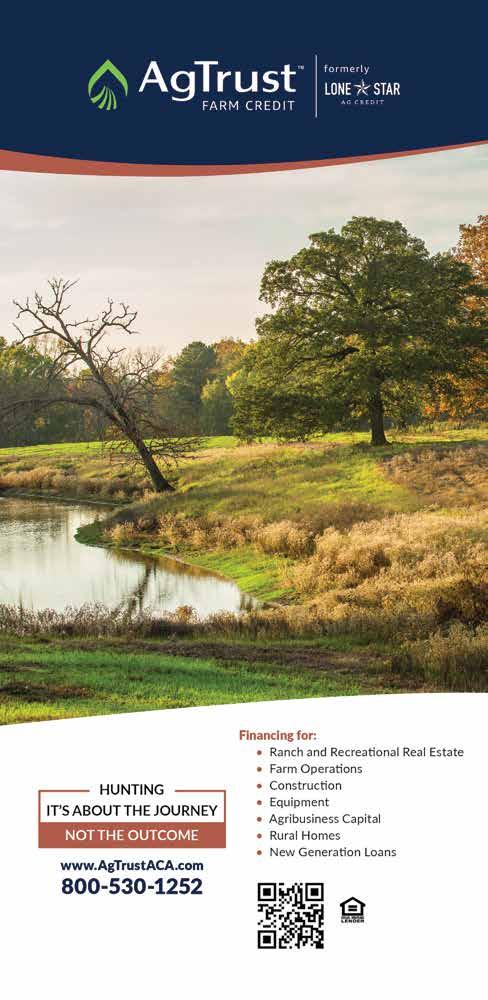

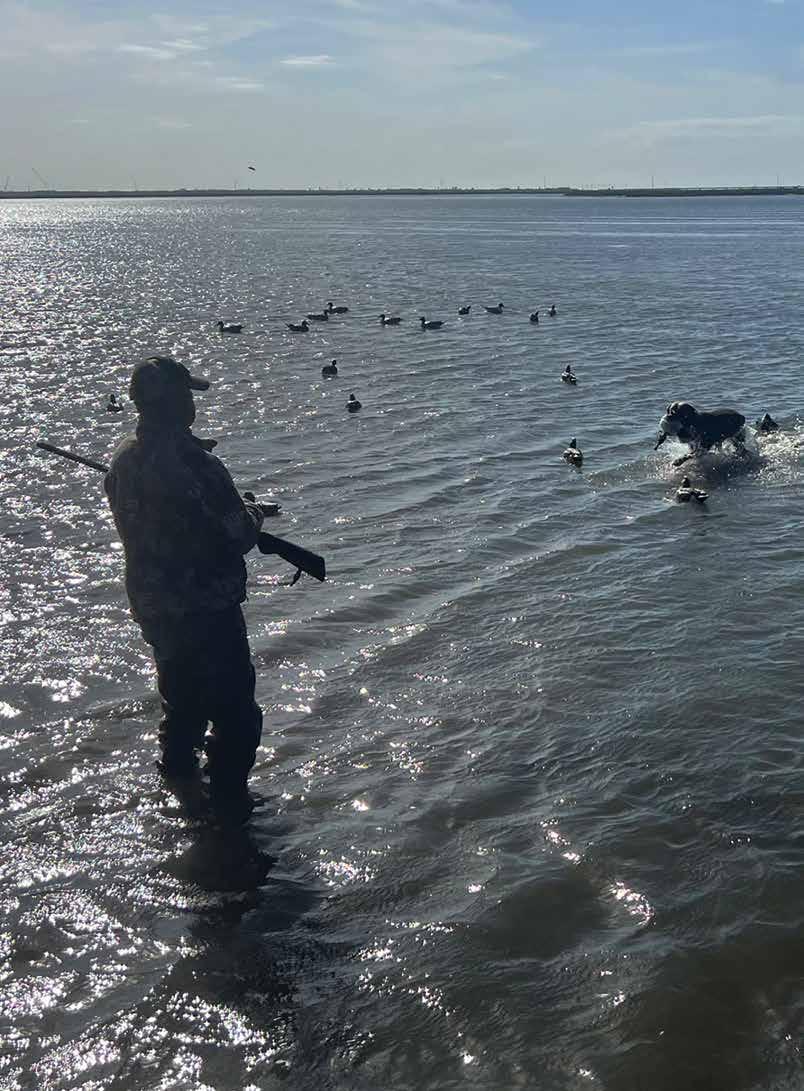
The Texas coast offers unmatched public water that allows easy access to day hunting across entire swaths of productive waterfowl habitat.
by Will Leschper
Texas waterfowl hunting is tough. It’s a fact rooted in the traditions passed down from the Panhandle playas to the coastal marshes and rice prairies. From preseason land improvements and scouting to in-season slogging through mud and muck just to set up, this isn’t a pursuit for the faint-hearted.
One lingering aspect for recent generations of hunters that seems to be toughest of all is the changing nature of migrating ducks and land-use practices that have altered the traditional hot spots. These changes have made it harder to take daily bag limits of birds particularly for coastal hunters looking to navigate a vast area of open water.
With that in mind, here’s a look at coastal public opportunities that shouldn’t be overlooked for successful waterfowl hunts.
Justin Hurst Wildlife Management Area
Hurst WMA, located west of Freeport in Brazoria County, is named for a game warden who was killed in the line of duty in 2007. It should come as no surprise that the WMA is a known commodity for
waterfowl hunters, who actually helped TPWD purchase the property through spending hunting dollars that have aided in habitat conservation through the Pittman-Robertson program. The WMA was purchased primarily to provide public hunting opportunities for waterfowl and was bought using waterfowl stamp funds and migratory game bird stamp funds.
As with other coastal WMAs and public hunting areas in Texas, Hurst is open to day duck hunts for multiple months through the Annual Public Hunting permit ($48). The WMA operates on a lottery draw system during the day of hunts to determine issuance of tags, ending at 4:30 a.m. in time for hunters to be in place at first light.
It’s advised that hunters get as much information as possible beforehand on any public hunt opportunities with waterfowl or any other species to ensure they’re able to hunt on a particular day. At Hurst, early teal season hunt dates have typically been Tuesdays, Thursdays, and Saturdays during the early season, while regular waterfowl hunting days have followed a similar schedule.
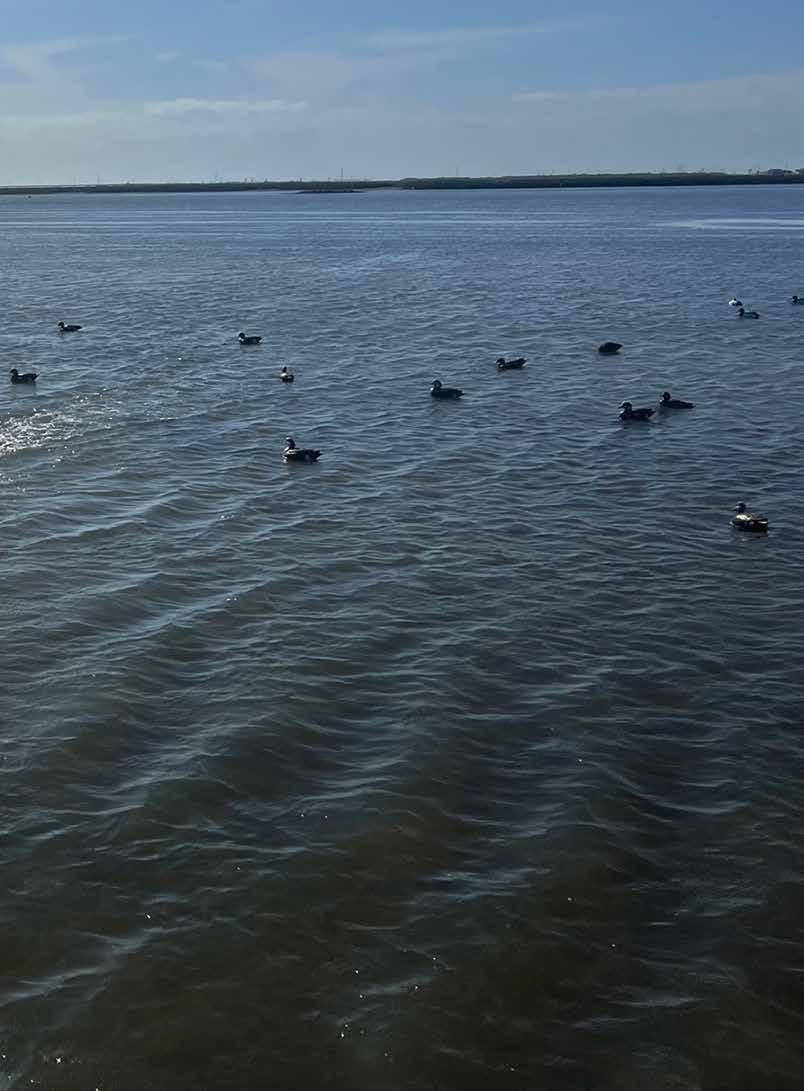
This 26,000-acre WMA is divided into multiple compartments, with roughly 20,000 acres of public waterfowl hunting provided by Choke Canyon Reservoir. The WMA, which also offers excellent deer hunting and bass fishing, is open each day of the early teal and South Zone duck frameworks and all waterfowl species having an open season may be hunted. Sandhill cranes also frequent the area and may be taken during the Zone C season at the South Texas locale.
It should be noted that when the land areas are closed, waterfowl hunters may access the lake through public boat ramps but must remain within the first 50 feet of the bank from the existing waters’ edge. Waterfowl hunting overall is also restricted to the surface of Choke Canyon Reservoir and the first 50 feet from the water’s edge on both the north and south shores of the lake. Also, there is no hunting within 200 yards of the Calliham and South Shore state park units, or the dam complex.
In addition to waterfowl, rails, gallinule, snipe, moorhen and woodcock can
be taken during dates for waterfowl as long as those frameworks coincide with duck hunting.
Matagorda Island is among the largest WMAs in Texas, though much of the more than 50,000 acres consists of offshore barrier island and bayside marshes. The area is actually jointly owned by the Texas General Land Office and the U.S. Fish & Wildlife Service, and is cooperatively managed by the agencies. TPWD has the responsibility of managing the area for public use and the Fish & Wildlife Service has the responsibility for managing the wildlife and habitat on the island.
The area is a hot spot for waterfowl hunting in the winter, with numerous species including redheads and pintails existing in good numbers. Roughly 20,000 acres of upland habitat are available for hunting, according to TPWD. However, the hunter check station on the island is approximately 11 water miles from the mainland and takes about 45 minutes to reach, officials noted.
The waterfowl hunting, like other coastal WMAs, is done through the Annual Public Hunting permit and regular day permits. Waterfowl may be hunted in the Bayshore marshes of Matagorda Island WMA without a regular permit, but hunters are cautioned that whooping cranes—protected as an endangered spe-
Airboats offer unmatched versatility when waterfowl hunting, allowing access to public areas traditional crafts can’t go.
cies—frequent the vicinity. It’s advised to ensure you’re up to date on your bird identification since killing a whooper can bring a hefty fine and jail time!
Located near the southwestern city limits of Port Arthur in Jefferson County, Murphree WMA represents a unique ecosystem. The 25,000-acre area is composed mostly of brackish marsh and is one of the best habitats for migrating birds of all species. In 1963, the WMA was named in honor of John David Murphree, a game warden who was murdered by a duck poacher in Jasper County.
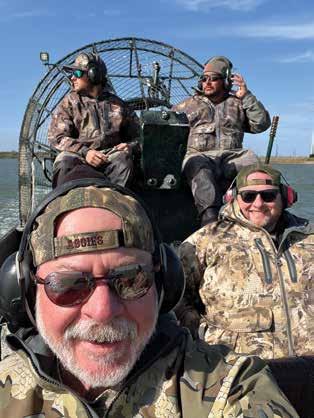
way canvasback population will spend several winter weeks on the management area, putting on weight for the migration north to their breeding grounds.
The WMA is the No. 1 public hunting hot spot for alligators in the core counties for alligator hunting in Texas, but it also has excellent waterfowl hunting. The area supports a large number of gadwall, bluewing and green-wing teal in the winter. A significant portion of the Central Fly-

It also should be noted that food, lodging and supplies are not readily available, so plan ahead accordingly and make sure you bring the essentials.
Located in Matagorda County, near the hamlet of Matagorda, Mad Island is roughly 7,000 acres of coastal marsh and freshwater impoundments that harbor exceptional numbers of wildlife.
The WMA was purchased with waterfowl stamp funds in 1987 to preserve coastal wetland habitat for wintering waterfowl. Mad Island offers a variety of hunting options through the draw system as well as the walk-in route. The day hunting options include the early teal and regular waterfowl frameworks as part of the South Zone, with sandhill cranes, geese, rails and snipe also available to bird hunters.
Mad Island, like other WMAs, uses a lottery drawing each day of a hunt to determine position in line. Check in begins at the hunter check-station following tag issuance. Tags are randomly drawn to determine order of check in and hunters sign in with tag number, name and hunt location.
Each hunt location is marked with a reflective sign to aid hunters in locating their hunt site. Hunters must hunt within 30 yards of said marker and no permanent blinds may be built. Walking distances range from a couple hundred yards up to a half mile, so plan ahead to tote your gear. Limited hunting locations may be accessed by small boats or canoes, which must be hand launched and hand or electrically propelled.
Guadalupe Delta, near Austwell and Tivoli in Calhoun, Refugio, and Victoria counties, consists of multiple units (Mission Bay Unit, 4,500 acres; Hynes Bay Unit, 1,000 acres; Guadalupe River Unit, 1,140 acres; and San Antonio Unit, 800 acres). The WMA is a mix of freshwater and saltwater, making it an ideal wintering spot for waterfowl. Due to the discharge of fresh water from the Guadalupe River, the area bay salinity is extremely low compared to the salinity levels of other Texas bays.
Like the other coastal WMAs, Guadalupe Delta offers a variety of bird hunting opportunities. In addition to the early
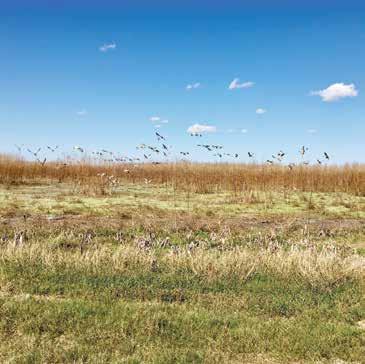
teal, South Zone duck and eastern zone goose seasons, hunters may take rails, gallinule and snipe during open seasons for these species.
Scouting for waterfowl hunting may be conducted the day before the start of the teal season and each split of the duck
Sandhill cranes typically are an afterthought on coastal wingshooting outings. The migratory species shouldn’t be overlooked nor should you overlook species identification of endangered whooping cranes which also winter on the Texas coast.
season. It also should be noted that like some other WMAs, legal shooting hours for waterfowl end at noon, at which time all hunters must exit the property. The use of airboats within the WMA is prohibited and hunting parties are limited to five individuals.

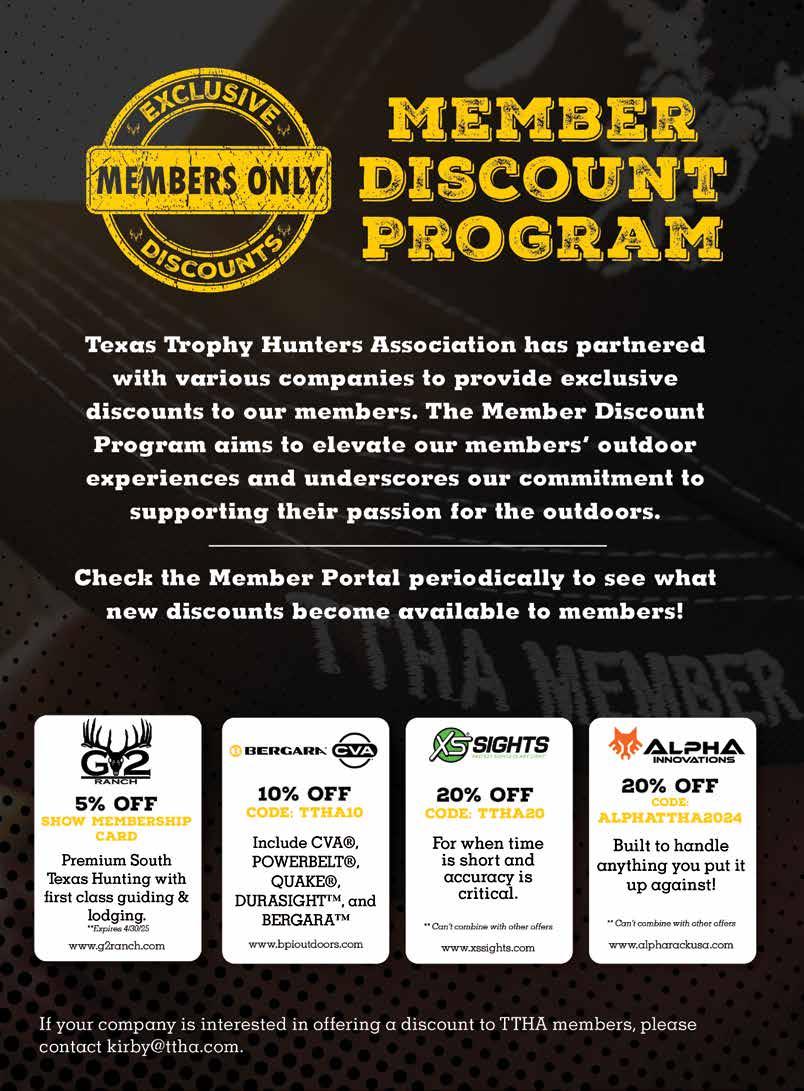

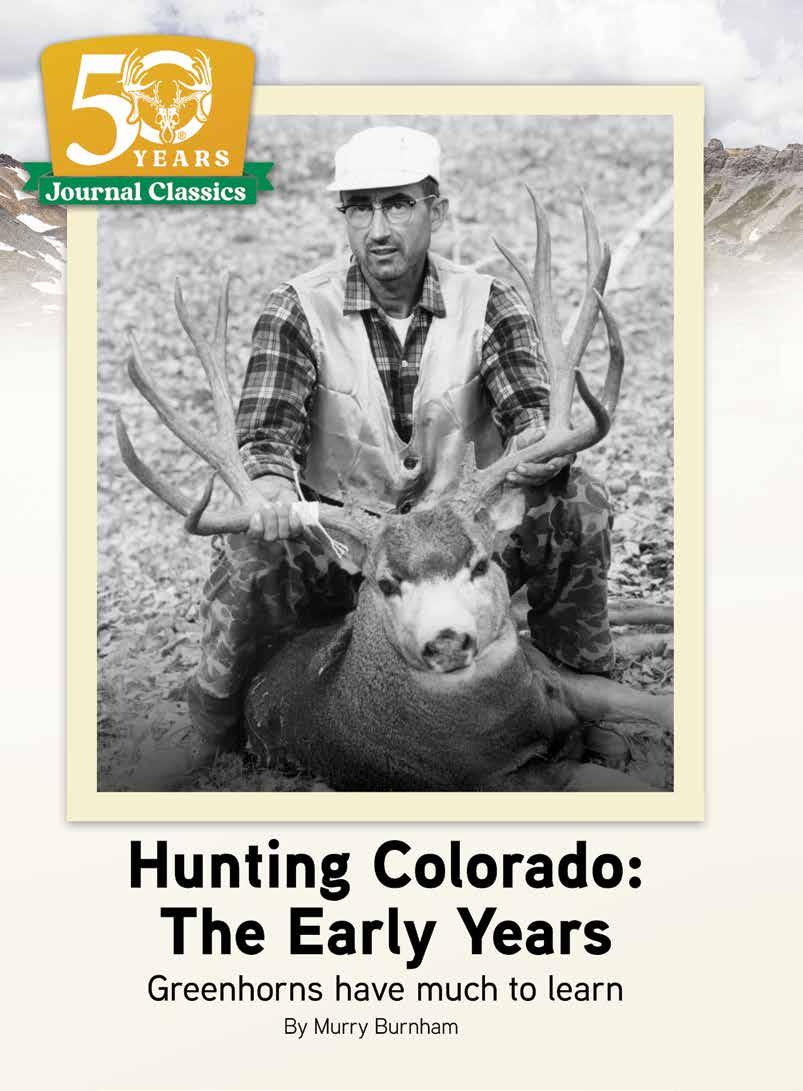
According to Murry, a non-resident mule deer license cost $30 in 1952.

Editor’s note: We’re celebrating our 50th anniversary a bit early. What better way to do so than feature one of our Journal Classics, written by none other than the pioneering outdoorsman, the late Murry Burnham. Enjoy!
Looking at some very old movies of Colorado hunting trips that have been transferred to DVD, my memory was revived a bit. I took my very first Colorado trip in 1952. Back then, DVD may have meant dead, very dead.
I remember we had some deer hunters on my home place near Spicewood who were from Dallas, and one hunter stood out. His name was Buck Johnson. We got along so well; it was like we had known each other forever. I helped him with his deer hunting, and he could buy any kind of sporting goods wholesale, including guns. That was right up my alley since I had very little of anything, especially money.
Buck had asked me if I wanted to go deer hunting with him in Colorado. I agreed. So, I invested in a $10 Kapok sleeping bag. With that, and all the clothes I could stack on, I managed not to freeze to death. I was poor, but well equipped.
We had built a good fire, and when it burned down, we crawled in the sack. The fire flared, though, and set my sleeping bag on fire. I was getting hot fast. I did some lively slapping and put the fire out.
We survived the night, ate something for breakfast, and hit the trail to unknown parts of the forest at daybreak. All I had was a .300 Savage, and at that time, I thought that was a big gun. I picked a spot where I could see pretty good downhill and sat myself against a big pine.
In an hour or so I heard a squirrel barking its head off. At home, a squirrel barking like that tells you that the squirrel sees a “booger.” Something really had that little pine squirrel carrying on. I got ready like I knew what I was doing, and lo and behold, there came a big bear.
When it passed into an opening I gave a loud yell. The bear paused and I shot—no sign that I hit it. The bear took off in a dead run. Literally. I didn’t see the bear fall, but the tracking job was easy. I hit the bear behind the shoulder middle way up in the lungs.
I couldn’t believe it. First morning of the Colorado big game season and I killed a bear. I field dressed it and went looking for Buck. “What now? ” I thought.
There was a ranch near our main campsite, and we were able to rent a packhorse. That old nag was having nothing to do with carrying a smelly bear. We had to blindfold and snub that
horse to a tree to load the bear. Later I learned 300 bears were taken statewide, so I guess I was pretty lucky.
A few days of hunting turned up nothing, except Buck had found a big 6x6 elk rack. We decided to move camp into some less mountainous country. Deer sign was very scarce, so the next morning I struck out in an easterly direction. Cool and not a cloud in the sky. Thank goodness for that. I covered a lot of ground, but did something that a hunter should not do.
I crossed a fence and got lost, big time! So I started back to camp, or so I thought. While putting on miles I saw a big buck. Not in sight enough for a shot. If I had killed it, there was no way I could have found it again.
Thank goodness for the sun. I thought I could reverse my direction and find camp, but the sun was moving to the south and I didn’t allow for the way sun travels. Along about noon I came to a gravel road. I didn’t have a clue which direction would take me to camp. As luck would have it, some hunters came along, and I hitched a ride. Another streak of luck, they went in the right direction, and I landed back in camp at 1 p.m. I had been walking since 6 a.m. My friends were worried and had fired off some shots. I never heard their shots, or they never heard my signal shots.
Well, I got home with the bearskin and the bear meat. My mom could cook any kind of meat and make it good to eat. My uncle had a sample of the bear roast and he said it tasted like a smelly wet dog. Fat bear sure is greasy.
That first trip to Colorado was the ruination for me. I had to go back. But I wasn’t able to hunt with Buck Johnson for long. He contracted hepatitis and passed away at a very early age.
My brother Winston became interested in my 1952 hunt after hearing me tell my version and seeing proof that I killed a bear. So, we ordered a map and big game hunting regulations from the Colorado Division of Wildlife and planned our trip. We didn’t have a clue where to begin the search, or where to even go.
We just thought it would make sense that there would be more deer in the two deer area. We picked a town in the two deer area, which was Delta, Colorado. Looking on maps proved Delta was a long way from Double Horn and Marble Falls. A thousand miles any way you went.
We drove in our dad’s brand new 1952 Ford 3/4-ton pickup. All the fancy stuff you could put in a pick-up back then was a radio and a heater. Dad opted not to have a heater. The reasoning was that if you had a heater you would use it too much, and getting out of a hot pick-up and into the cold would be too much of a change. That decision made for cold, cold trips.
We tried to pick the nearest route. Being country boys, we were leery of going through big cities. And Santa Fe was smack dab in the way. Our New Mexico map showed some sort of a road between Santa Fe and Albuquerque, so we took it. Boy, was that a huge mistake. The pavement soon ran out and it seemed we found the highest mountains in New Mexico. It was time to locate a place to hunt. There was a nice sporting goods store in combination with a jewelry store in Delta—McKnight Sporting Goods. The folks there directed all the out-of-town hunters to the same place to hunt. The 25 Mesa sure would be crowded.
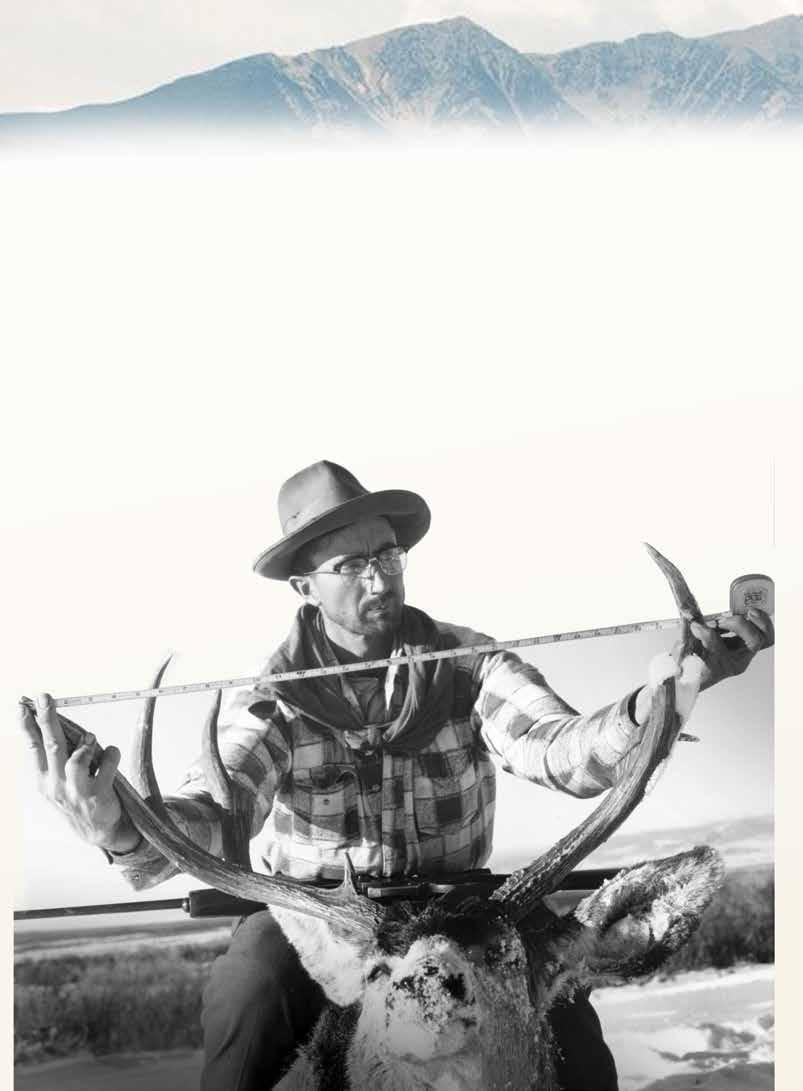
We then met Ed January. He was a little old skinny guy that was in the business of packing out big game for hunters. He had an interesting suggestion. He said, “Why don’t you just go up Escalante Canyon?”
He said there were very few deer in the canyon during that part of the season. “But just bide your time, and in a few days the hunters up on top of middle point will drive the deer down,” Ed added. There were still more days until the season opened and after we made camp where we could, we started following the trail that went one direction— uphill. We were headed up towards Kelso Point.
The weather got nasty. For several days there was rain in the canyon and snow on top. We were not about to move. We decided this is where we were going to hunt.
When the weather cleared we had mud. We started up the trail. There were five benches. Steep trail, then level out. Each bench was steep climbing, the going tough. The brush hung
in the trail. The last bench sort of leveled out with a ridge, which turned out to be the primary migration route.
We could see what was known as High Top and that was as high as we could go. Downhill from High Top was a lot of pinion and juniper. Back home we called it cedar and it smelled the same. Sage and oak was the primary bush.
Uphill from the oak brush we found aspen. And uphill towards High Top, there were huge ponderosa pines. We began to find mule deer antler sheds in the cedar on the south bench, lots of them. I would carry all I could until I found a bigger set. But we were not finding fresh tracks. This is where Mr. January’s information came into play.
On the last bench, we were into snow. On the south bench the snow was going fast. On the north bench, snow was deep and tough walking.
Rubber boots, the kind for the muddy cow pen, was all I had to wear. Those old barnyard rubber boots would not hold my flat feet in place going downhill. No matter what sock combinations I wore, they only made matters worse. I rubbed blisters on the ends of my toes; you could almost read a newspaper through them before the blisters broke. I went back to wearing my country leather brogans.
The rain and snow cleared the night before the season opened. Snow uphill from our camp made for a very clear and cold opening morning. The season always opened on a Saturday.
The early season rain and snow had started the deer migration early. That first morning we left camp at 3 a.m. We had a long way to walk, like 5 miles all uphill. Not far from camp in the first snow there stood a huge mulie buck. We got excited, enjoyed the sight, and kept walking.
We made it to the ridge before sun-up, but just barely. Boy, there were deer everywhere! That first morning we did not see a single hunter.
Looking back, if I had known more what a real trophy looked like, it would have been easy to be selective. The first buck I saw looked big to me, even though he was a good way off in a little clearing in the oak brush. The snow was deep.
Since the bear hunt the previous year, I thought I needed a larger rifle. I bought a Remington Model 760 in .30-06 caliber. Turned out that was a good choice. I shot many trophies with that pump gun.
There was that buck, so I just raised the gun, aimed at the top of his back and shot. Down he went. I hadn’t gotten in the habit of thinking I needed a rest to hit something.
Stepping the distance the buck was 280 long steps. Mr. January and his packhorse came in handy that first day. One of his packhorses was green-broke. He said when he got the deer loaded onto it, he’d let the horse buck all it wanted. By the time he got back to camp, that horse was broke.
Winston’s time came the next morning. We saw a huge mulie buck running flat out. Winston didn’t own his own big game rifle at that time, so he borrowed our cousin’s Springfield WWI
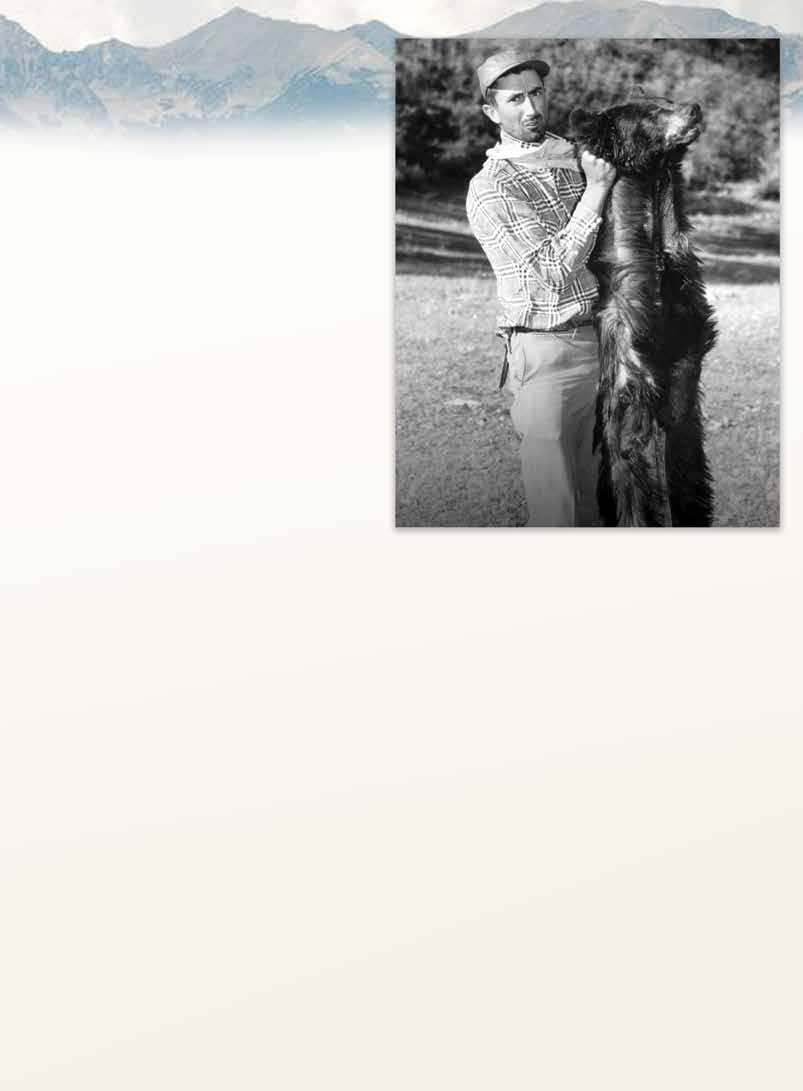
.30-06. It had a good 4X scope.
Since the buck was running so fast and quite a way off, I told Winston to shoot in front of the deer and maybe the buck would turn towards us. At the shot, the buck fell and skidded a long way in the snow before piling up. We stepped it off at 300 steps. The buck was bounding sort-of fast downhill. I measured how far the buck was going between bounds—30 feet. I never forgot that. Again, Mr. January’s packhorses came in handy.
Leaving the camp and headed for home, we remembered all the produce we’d seen growing along the way. But the first stop was at the old hotel in Olathe. Camping out that way sure can make the dirt layers thick. We needed a bath.
The best part was the old hotel served family-style meals, just like home cooking. There never were any country-boy hunters hungrier than we were. After a few inquiries with those friendly folks, we located an apple orchard. Somehow we found room for 50 bushels of delicious apples. Since this was pinto bean country, we bought a couple 100-pound sacks of fresh, re-cleaned beans. It wasn’t hard to sell that good stuff when we got home. Nearly paid for our trip.
In those early years of Colorado hunting, the entire trip would not be over $50 each, including license. But you had to really scrimp to do it that way. Anyway, we were anxious to get home and decided to drive straight through. That was the first and last time I did that. I felt like a zombie.
My buck was brought home only field dressed. That 11-pointer field dressed at an even 200 pounds. The whole deal was worth it. To Winston and me, this was not a hardship. I was hooked on hunting trophy mulie bucks. But that is another story.
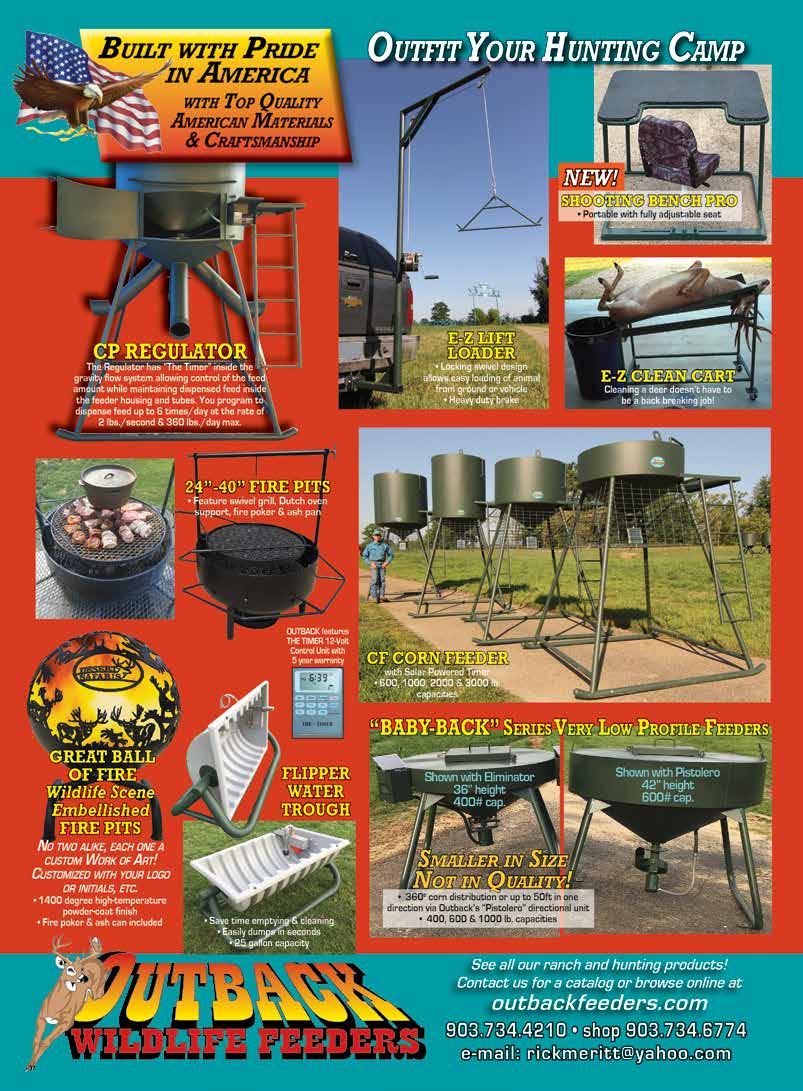
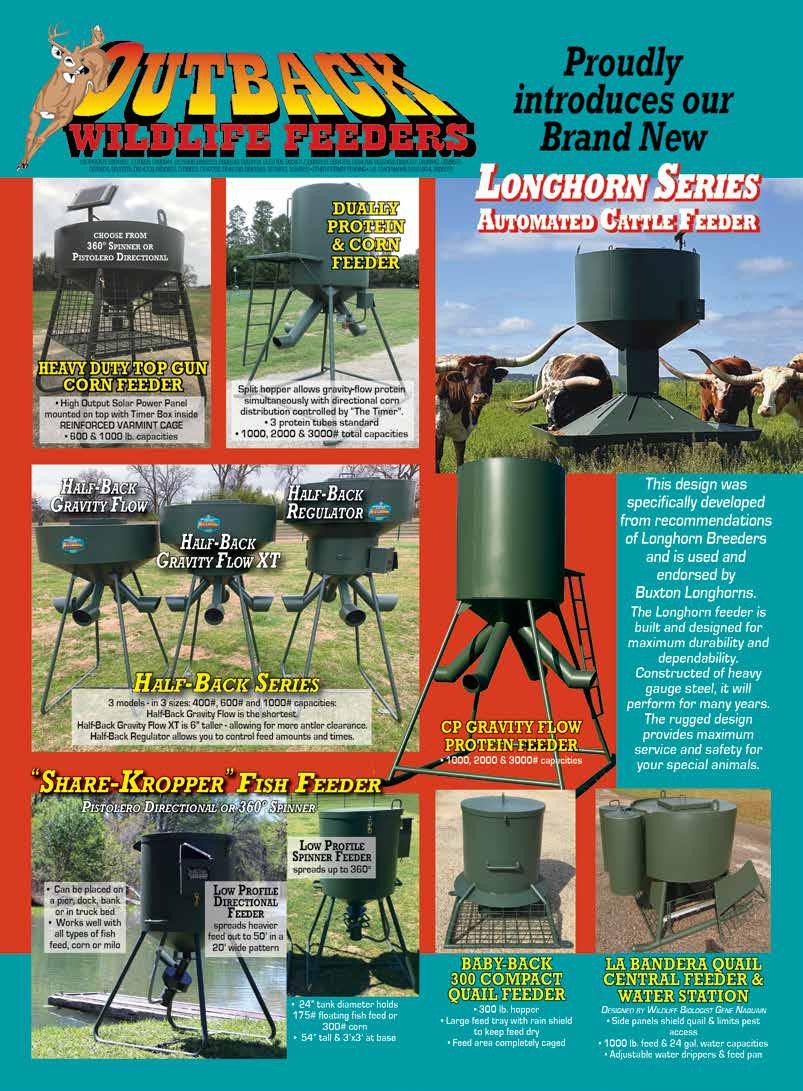

The wind was in my favor. That’s always step one when stalking wild pigs. On that April afternoon, I glassed the herd from a rocky cliff half a mile away. Cover was sparse along that Panhandle river, but a fallen cottonwood tree between me and the noisy, grunting hogs served as my cover. An hour after first spotting them, I was finally 40 yards away. I needed to get closer with my recurve.
On my hands and knees, I crawled. Just past the fallen tree, a spotted hog was broadside, its snout plowing the earth for roots or bugs. The distance was under 10 yards. I eased the 45 pound Bear Takedown recurve to the corner of my mouth. I don’t remember the release, but the next thing I saw was the bright chartreuse feathers of my arrow in the hog’s side. The herd bolted for a well-worn trail that crossed the river. I heard splashing water and then everything went quiet.
I found a few spots of red in the mud. At the river crossing I saw more blood, but none up the far riverbank. I wandered around for a bit, and then I spied a large object downstream. The heart-shot hog had died halfway across the creek, then floated downstream and snagged against a tangle of tree limbs. The solo photo shoot, complete with a tripod and self-timer in knee-deep water, was certainly memorable.
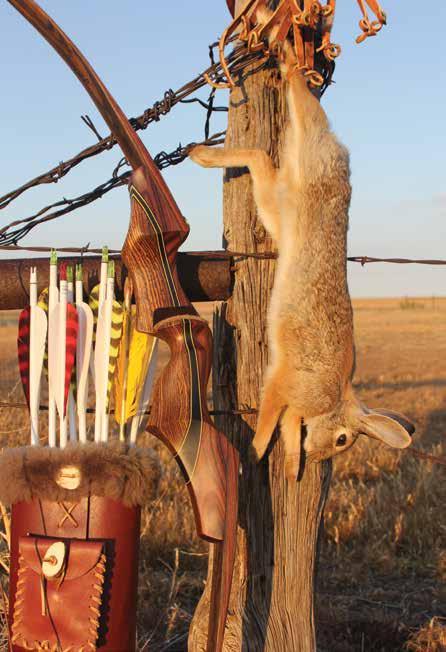
Who says you must shoot just one bow? Compounds, recurves or longbows, I love them all! If you’re new to traditional bowhunting here are a few tips on getting started.
Start by asking your bowhunting buddies if they have a light draw weight recurve you can try out. When switching from a compound, drop your poundage. For me, I pull about 60 pounds comfortably with my compound. When I shoot a stick-bow, I drop my draw weight 10-15 pounds. Given a close shot, heavy arrow and a well-built broadhead, I get killing penetration from 45-50-pound bows on deer-sized game. When you switch, expect your draw length to be shorter, too. For me, I shoot a 28-inch draw length with a release aid and D loop out of my compound. My draw length on a traditional bow is about 27 inches. Bow length is worth considering. The longer your draw length, the longer length recurve or longbow you will want for a smooth draw. I find a comfortable fit with bows 58-60 inches long. If you have a 29-31-inch draw length, consider recurves or longbows 60-64 inches long. Production bows will be rated a certain poundage at 28 inches. For example, it may be marked on the riser 50 pounds at 28 inches. For every inch past 28 inches, expect the draw weight
Brandon with a Texas mule deer he shot in December 2011. Gear included a 50-pound Hoyt recurve.
to increase about 3 pounds. If you pull that same bow to a 30-inch draw length, the draw weight will be 56 pounds approximately. Stacking occurs when the draw weight increases even more, 5-6 pounds per inch, and the draw becomes uncomfortable. Most bows will have a recommendation on what draw length they’re best suited for to avoid stacking.
Recurve or long bow? One-piece or take-down? The easiest way to explain

the difference is a recurve has limb tips that “curve” at the end and the string makes contact for several inches on the limb before the tip when the bow is strung. On a longbow, the string only makes contact at the string grooves on the limb tips when the bow is strung. Recurves are probably more popular, some would argue with a slightly smoother draw, but each bow is different. Some of my favorite bows are three-piece, takedown longbows that feature a grip more like a recurve. Almost a hybrid type of

stick-bow. The advantage of a take-down bow is the ability to pack it in a smaller case for travel or swap out limbs. If you usually shoot a 45-pound bow but want heavier 50-pound limbs for a special hunt, you can change the limbs on the same riser.
For your first stick-bow, you don’t have to drop lots of cash. I would recommend a one-piece bow from one of the major archery companies. I have a 58-inch, 45-pound Bear Grizzly that pulls and shoots as sweet as custom rigs that cost much more.
A new Bear Grizzly is about $500. Bear offers other simple one-piece designs. The Bear Takedown recurve, a timeless design that requires no tools to assemble, is one of my all-time favorites. It’s Bear’s top-end trad bow at $1,200. Martin, Damon Howatt, and Hoyt are other major brands that offer recurves. I’ve bought quality, used bows off auction sites like eBay. Ask lots of questions when buying a used bow. Examine photos for straight limbs and make sure there are no small stress cracks in the riser or limbs.
If you decide old school gear is something you really like, consider a fancy custom bow. The best of these are works of art. A few of the top brands are names like Schafer Silvertip, Great Plains Traditional Bow Company, Stalker Stickbows, Bob Lee Bows, and Thunderhorn Archery. I’ve hunted with bows from all these names and always been impressed with the quality. On a custom bow, you can order your draw weight within 1-2 pounds and order fancy woods like Cocobolo, Osage or other exotic woods for the riser or limbs. You can even add a checkered grip, rattlesnake skins on the limbs or antler limb tips. Years ago, bowyer South Cox built me a take-down recurve and a take-down long bow made from mesquite and cedar that I cut off my family’s Panhandle ranch. I shot wild pigs with both bows
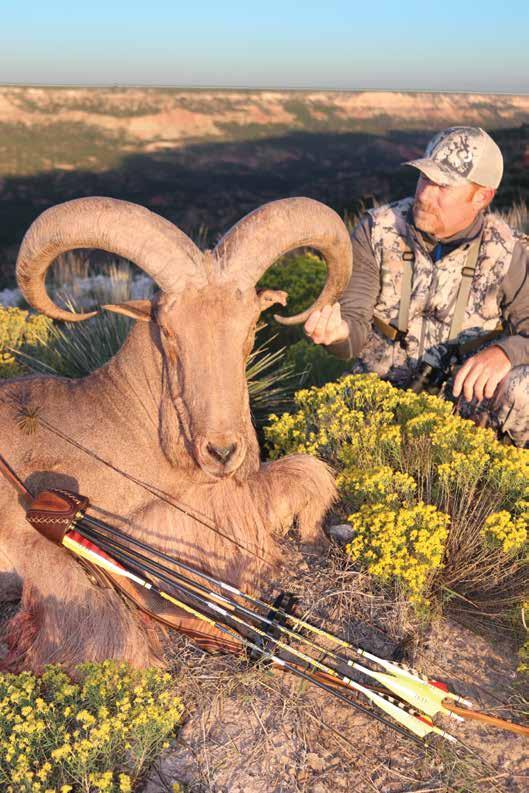
in the same pasture where I cut the riser woods! Expect a wait time of six months to more than one year from top bowyers. The cost, depending on extras, will be $1,000-$2,500 per bow.
Choose proven, one-piece broadhead designs like Zwickey, VPA, or the Bear

shot this aoudad ram with a 45-pound Thunderhorn take-down longbow in 2019. A file-sharpened Bear Razorhead was on the tip of his 560-grain carbon arrow.
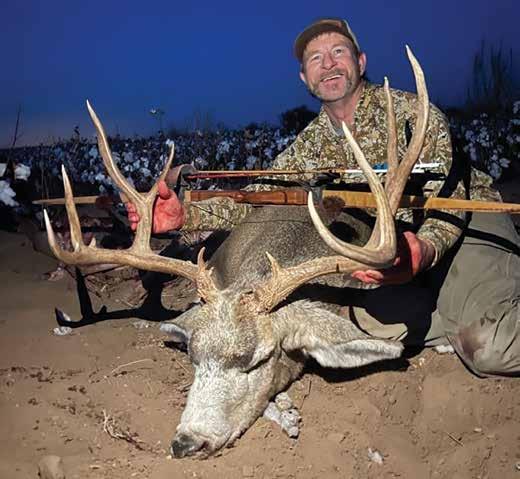

Steven Tisdale with a Texas mule deer from 2021. His gear included a take-down, 3-piece longbow, carbon shaft fletched with feathers and a Zwickey broadhead.
Razorhead for deep penetration. I prefer finished arrows with a weight of 550-600 grains, including the point, with extra weight up front. I trust 5-inch Trueflight feathers on either wood or carbon shafts. I carry one arrow in my quiver with either a steel blunt or judo point to stump shoot on my way to the blind and for opportunities at small game.
My friend Steven Tisdale is a perfect example of a bowhunter who can’t make up his mind. He collects bows like some guys collect stamps. Bears, moose, elk, deer, pronghorn, or hogs, he’s hunted them all. Give Steven a bow, any bow, and he will bring down the game. Who says you have to shoot just one?









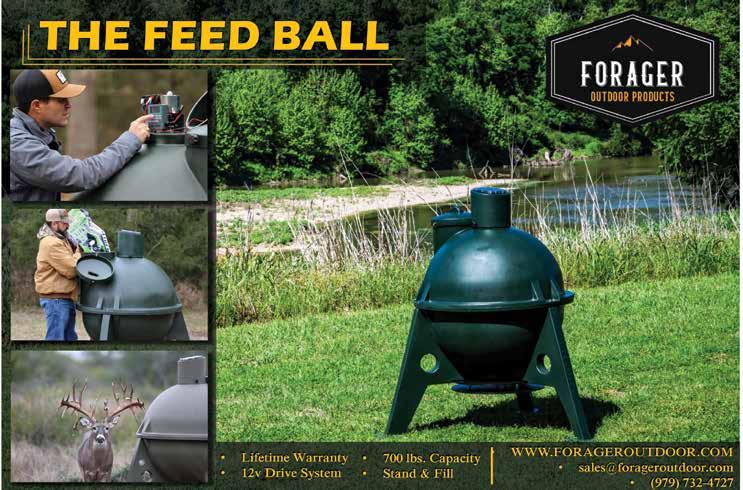
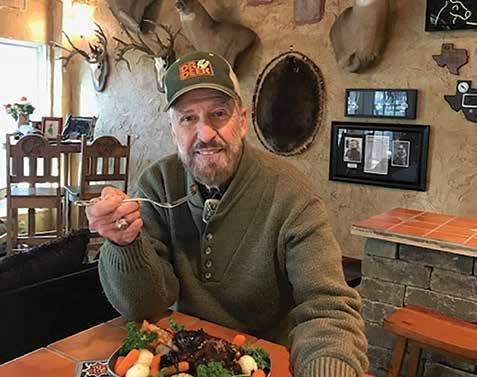
NEED:
• 1 lb. ground venison (or nilgai)
• 1 bell pepper, cleaned and diced
• 1 white onion, diced
• 1 clove garlic, minced (or ½ tsp. garlic powder)
• 1 ring German or Polish sausage, cooked
• 5 slices bacon, cooked crisp
• ¼ cup Worcestershire sauce
• 1 14 oz. can of tomatoes w/chilies
• 2 16 oz. cans Ranch Style beans, drained
• 1 16 oz can pinto beans, drained
• 1 tsp. salt
• 1 tsp. black pepper
CORNBREAD
• 1 cup flour
• I cup yellow corn meal
• 1 egg, beaten
• 1 Tsp. sugar
• 4 tsp. baking powder
• ½ tsp. salt
• 1 cup milk
• ¼ cup cooking oil
Do you have a favorite Wild Game recipe that you would like to share with our readers? If so, please type or print recipe and send to:

Brown venison, bell pepper, onion, and garlic. Place venison mixture in crock pot. Slice sausage in ½ inch rounds. Add sausage and crumbled bacon.
Add remaining ingredients. Cook on high for at least 4 hours. Prepare cornbread while beans are cooking.
Heat oven to 400 degrees. Coat a 12-inch skillet or 7"x11" baking pan with vegetable spray.
Place all ingredients in a bowl and mix well. Pour mixture into skillet or pan and place in center of oven. Bake 20-25 minutes. Yields 10 servings.
Serve beans with cornbread and iced tea to a small crowd of hunters or a family of eight.
Fish and game move in search of food in cycles relative to the moon’s location to the Earth. The time spans listed are the prime or major period times to start each day and along each time zone meridian of longitude 75° (Eastern), 90° (Central), 105° (Mountain) and 120° (Pacific). To determine the feeding cycle time for fishing and hunting in the area you plan to fish or hunt, advance the sum of 4 minutes for each degree west and back up 4 minutes for each degree east. The next prime feeding cycle (not listed on the calendar) will be approximately 121⁄2 hours later. There are minor periods that occur between the prime or major periods. The moon’s phases are shown as New, First Quarter (FQ), Full and Last Quarter (LQ). The feeding times are not a cure-all. Weather and other environmental conditions affect wildlife feeding activity.
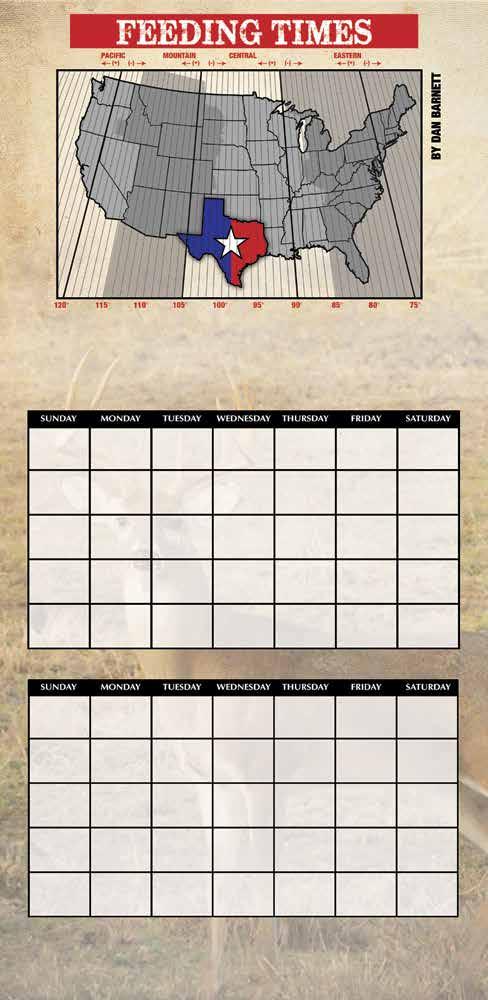
11:15A - 4:15P 12:20P - 5:20P 1:20P - 6:20P 2:20P - 7:20P 3:20P - 8:20P 4:20P - 9:20P 4:50A - 9:50A
5:45A - 10:45A 6:30A - 11:30A 7:15A - 12:15P 8:00A - 1:00P 8:45A - 1:45P 9:30A - 2:30P 10:20A - 3:20P

5:45A - 10:45A 6:30A - 11:30A 7:05A
3:45P - 8:45P 4:45P - 9:45P 5:20A - 10:20A 6:20A - 11:20A 7:20A - 12:20P 8:20A - 1:20P 9:20A - 2:20P 11:10A - 4:10P 12:15P - 5:15P 1:20P - 6:20P 2:30P - 7:30P 3:40P - 8:40P 4:40P - 9:40P 5:00A - 10:00A 10:15A - 3:15P 11:15A - 4:15P 12:15P - 5:15P 1:10P - 6:10P 2:05P - 7:05P 3:00P - 8:00P 3:50P - 8:50P


10:10A - 3:10P 10:50A - 3:50P 11:35A - 4:35P 12:25P - 5:25P 1:15P - 6:15P 2:05P - 7:05P 2:55P - 7:55P


4:40P - 9:40P 4:55A - 9:55A 5:40A - 10:40A 6:25A - 11:25A






MORGAN BARRETTO: whitetail 10-point taken 11/25/23 in Jim Wells County.
GEAR: Howa 7mm-08, Leupold scope. OUTFITTER: Papa.
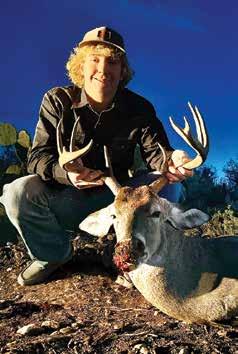
whitetail 10-point taken 12/29/23 in Webb County.

BOBBY GONZALES: whitetail 10-point with 21-inch inside spread taken 11/5/23 in Kerr County.
GEAR: 7mm, 3-9X Leupold scope. OUTFITTER: self.

McMAHON: whitetail eigh-point with 15-inch inside spread taken 11/4/23 in Mason County.
GEAR: .243, Leupold scope.
OUTFITTER: family Llano River Ranch.
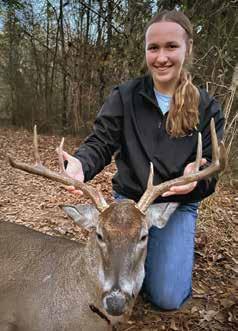
MERRITT McMAHON: whitetail eight-point with 18½-inch spread taken 12/11/23 in Gregg County.
GEAR: Grandpa’s Ruger .30-06, Leupold scope.
OUTFITTER: family ranch.
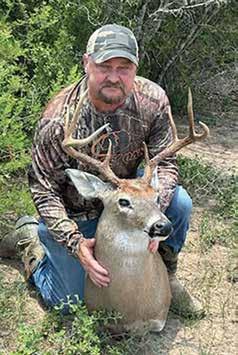
JODY BYRUM: whitetail eight-point with 18½-inch inside spread taken 12/23/23 in Live Oak County. GEAR: rifle.
OUTFITTER: Burda Ranch.
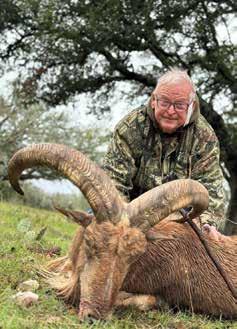
JACK SKEEN, JR.: aoudad with 30-inch spread taken 12/5/23 in Coryell County. GEAR: Ruger .270, Winchester ammo, Leupold scope.
OUTFITTER: Stone Creek Ranch.
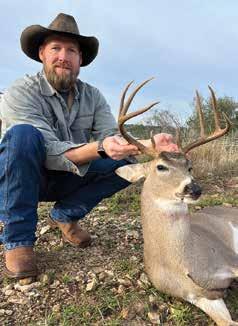
JIMMY PAUL McMAHON: whitetail eight-point with 15-inch inside spread taken 11/5/23 in Mason County.
GEAR: Ruger .30-06, Redfield scope. OUTFITTER: family Llano River Ranch.
NOTE: Only members of Texas Trophy Hunters Association or immediate family may submit photos. Out of fairness to all members, only one photo of each family member will be accepted each year. Do not paperclip or staple photos as this can damage them. Prints must be no larger than 4x6 inches and printed on photo-quality paper. No photos will be returned. Photos may also be e-mailed to HuntsEnd@ttha.com. If sent by e-mail, please make sure to include all information from the form below and limit your photo size to less than 5MB. Send a separate e-mail for each entry.


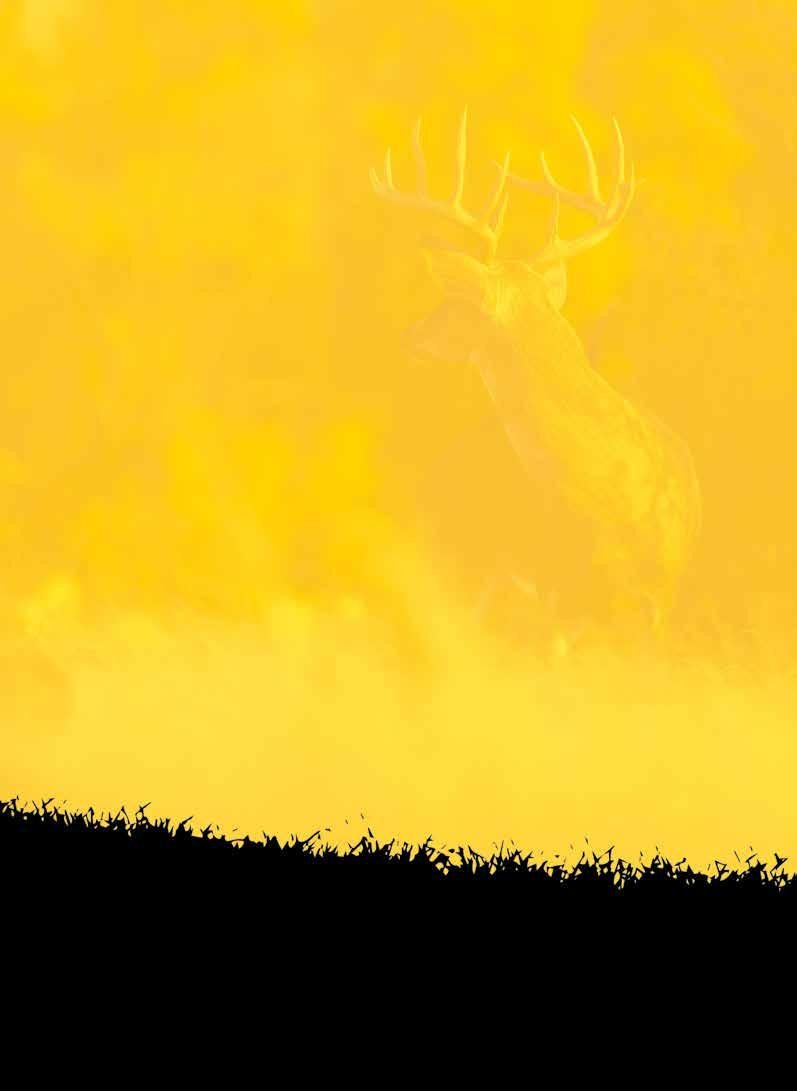


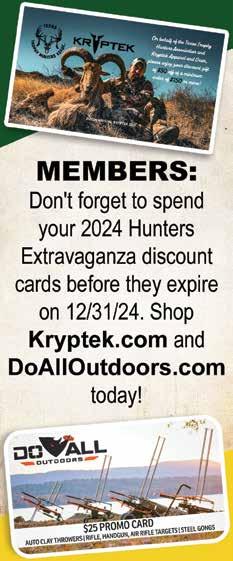






he Journal likes bringing you high-quality articles throughout the year. So, just in case you’ve missed a few, we’ve made your life a little easier by compiling this handy index of all this year’s articles. We’ve broken it down into three convenient categories. We hope you put it to good use.—TTHA Staff
ATV-UTVs for 2024, John Goodspeed
New Crossbows for 2024, John Goodspeed
Compound Bow Roundup, John Goodspeed
Eye-Spy Gear, John Goodspeed
Riflescopes Roundup 2024, John Goodspeed
This Year’s New Predator Calls, John Goodspeed
Science
Pineywoods Whitetails, Dr. James Kroll
Deer Diseases: Descriptions and Concerns, Dr. James Kroll
What Is a Whitetail Worth?, Dr. James Kroll
The Big Five (parasites), Dr. James Kroll
Buck Mortality, Dr. James Kroll
The Arizona “Cooz” Deer, Jim Heffelfinger
Hunting Mature Pineywoods Whitetails, Dr. James Kroll
Hunting Southwestern Mule Deer, Jim Heffelfinger
Celebrating Texas Hunting at its Best, Horace Gore
Conservation Aids Coastal Fishing, Will Leschper
Wild Game for Dinner, Judy Jurek
Hog Wild, Gary Roberson
Muzzleloading In The Hunt, Eric Stanosheck
Coastal Waterfowl Hunting Tips
Hunting Southwestern Mule Deer, Jim Heffelfinger
Texas Aoudad 101, Brandon Ray
Antlers of Alaska, Lee Leschper
Bucks by the Book, Brandon Ray
Celebrating Texas Whitetails in 2024
Respect Mother Nature, Will Leschper
Panhandle Creek Bottom Gobblers, Brandon Ray
The Epic Gould’s Turkey Hunt, Jim Heffelfinger
Salt & Gunpowder, Will Leschper
Jan/Feb-p.74
Mar/Apr-p.92
May/Jun-p.94
July/Aug-p.106
Sep/Oct-p.86
Nov/Dec-p.80
Jan/Feb-p.20
Mar/Apr-p.18
May/Jun-p.18
Jul/Aug-p.18
Sep/Oct-p.18
Sep/Oct-p.21
Nov/Dec-p.20
Jan/Feb-p.92
Jan/Feb-p.30
Jan/Feb-p.42
Jan/Feb-p.45
Jan/Feb-p.54
Jan/Feb-p.62
Jan/Feb-p.84
Jan/Feb-p.92
Jan/Feb-p.98
Jan/Feb-p.104
Jan/Feb-p.108
Mar/Apr-p.22
Mar/Apr-p.34
Mar/Apr-p.42
Mar/Apr-p.53
Fishing The Texas Gulf Coast, Will Leschper
The Other Deer (mule deer) Brandon Ray
To Skin a Doe Deer, Horace Gore
Nov/Dec-p.38
Nov/Dec-p.46
Nov/Dec-p.56
Start ’em Out Small, Judy Jurek Nov/Dec-p.61
Hunting Bighorn Sheep, Jim Heffelfinger Nov/Dec-p.84
WMAs Offer Good Coastal Waterfowl Hunting, Will Leschper Nov/Dec-p.112
The Stick-bow Challenge, Brandon Ray Nov/Dec-p.124
Mar/Apr-p.82 Alaska’s Spring Bears, Lee Leschper
Spring Exotic Hunting, Judy Jurek
The Bowhunter’s Bird, Brandon Ray
More on Texas Whitetails in 2024, Horace Gore
Flounder In Decline, Will Leschper
The Challenge of Spring Turkey Hunting, Gary Roberson
Top of Texas Tuskers, Brandon Ray
Favorite Southwestern Game, Jim Heffelfinger
Muzzleloader Rifles: Then and Now, Eric Stanosheck
15 Things You Need to Know To Hunt Alaska, Lee Leschper
Favorite Texas State Parks, Judy Jurek
Nilgai Fun, Will Leschper
Summer Fishin’, Will Leschper
The Winchester .243 (cartridge), Horace Gore
Pronghorn Scout, Brandon Ray
Slow Bullets and Speedy Pronghorns, Eric Stanosheck
Javelina Hunting Tips, Jim Heffelfinger
Reds and Rooters, Will Leschper
Archery Rams, Brandon Ray
Windmills, Prairies and Pronghorns, Brandon Ray
Hunt Safely, Horace Gore
Mar/Apr-p.97
Mar/Apr-p.102
Mar/Apr-p.110
May/Jun-p.22
May/Jun-p.34
May/Jun-p.42
May/Jun-p.46
May/Jun-p.59
May/Jun-p.62
May/Jun-p.105
May/Jun-p.108
May/Jun-p.118
Jul/Aug-p.52
Jul/Aug-p.55
Jul/Aug-p.58
Jul/Aug-p.62
Jul/Aug-p.82
Jul/Aug-p.86
Jul/Aug-p.126
Sep/Oct-p.42
Sep/Oct-p.56
Texas Whitetails: A Valuable Commodity, Will Leschper Sep/Oct-p.74
Relieving Opening Day Dove Hunts with .410 Fun, Ralph Winingham Sep/Oct-p.91
Alaska Caribou for the Freezer, Lee Leschper
City Limit Hogs, Brandon Ray
Tips for Taking Whitetails, Old Hunter
Sep/Oct-p.108
Sep/Oct-p.112
Nov/Dec-p.24


Don’t forget to use your free classified ad! It’s once per year and you must have an active membership in good standing. Send to:
700 E. Sonterra Blvd.,
You may fax your ad to (210) 523-8871, Attn: Debbie Keene or e-mail to Deborah@ttha.com. Send your ad in by November 8 to run in the next issue!
HAPPY 60th BIRTHDAY to my dad, Oscar Lopez, a true outdoorsman & conservationist. From the early morning hunt to afternoon fishing at the pond, thank you for sharing this passion with me & with your grandkids. We love you so much & wish you a very happy birthday!
KEI VALLEY SAFARIS offering plains game in the Eastern Cape of South Africa. Package hunts or build your safari. Deep sea fishing, photo safaris, and park excursions available upon request. Keivalleysafaris@gmail.com. Keivalleysafaris.com.
LOOKING FOR self motivated, honest & hard worker for ranch 15 min. out of GW towards Freer. Must be punctual, have knowledge of running basic ranch equipment, clean background. Mowing, mending fences/plumbing, filling feeders will be common. Hunting knowledge a plus. Housing on site can be discussed with right candidate. Email resume/work exp. to Rachel@awsblinds.com.
RESERVE RANCH, a Sportsman’s Paradise near La Pryor, Texas offering full service hunts for Whitetail Deer, Red Stag, Dove and Quail to individuals and Corporate clients. www.reserveranch.com.
DURABLE HUNTING BLINDS for the Dedicated Deer Hunter! The Blynd hunting blinds can be counted on for long-lasting durability that will not fail you in the field and provide the cover needed at an affordable price. http://www.blynd.com/ 1-800-458-0263.
MEXICO HUNTING - Rocky Mountain bighorn sheep, mule deer, trophy whitetail, exotics and more. 1 week lodging, meals, open bar, guides, transportation, Trophy fees and permits included. huntingoutfittersmexico.com or 210-3292959.
WALK-IN COOLER custom built for a deer lease. Inside dimensions are 7’ wide, 9’ long, 7’ high. 230V power. Outside dimensions 8’ wide, 16’ long, 9’ high.
Asking 9,500. 281-924-1407.
HILL COUNTRY ADVENTURES offers quality trophy exotic hunts on family land. First class lodging and meals. Visit us at: hillcountryadventuresllc.com or call: 337368-4686.
AOUDAD HUNT! Hunt free ranging aoudad in Llano County. Hunts begin in late August thru late October, 2024. Nice accommodations. For additional info, email darrellsteffek@gmail.com
AMERICAN FEEDER - Fish Feeders. Catch and grow larger, healthier fish. All new aluminum fish and deer feeders from American Feeder. Visit http://www. american-feeder.com for details.
TRAPPER FOR HIRE. High-fence or no fence. Predator management is crucial for fawn survival. Call Bob 317-326-4670 for details.
MAP MY RANCH specializes in developing printed maps for all your outdoor needs. We can create basic boundary maps, or those with customized features - locations of deer blinds, feeders, food plots, ponds, etc. Contact today to get started! www. MapMyRanch.com or 713-302-2028.
DuBOSE RANCH Outfitters. Trophy hunts in South Texas for 30+ years. Website –duboseranch.com. Phone – 830-391-7905.
GREAT DEER HUNTING Ranch For Sale 463+/- Acs. Sallisaw, OK. New barndominium and metal shops. $2,732 per acre. Southwest Ranch Sales (972) 5428511. www.swranchsales.com.
VETERANS CREED OUTDOORS Team Texas. Outdoor Trips for Veterans and First Responders. Find us on Facebook on our page and group.
DAVE WINCHESTER’S SPORTING Camps, New Brunswick Canada, offering full service Black Bear hunts. Spring and Fall. Call/Text for details. Now Booking! 506-425-9044, winchestersportingcamp@gmail.com.

AZTEK HUNTING BLINDS - dealers welcome. In Texas, New Mexico, Oklahoma, Arkansas and Louisiana. We make to order for our clients. We offer delivery service and have inventory in Texas. comederos.com. mx or call 210-329-2959.
RUSTY HINGE Ranch offers whitetail, hogs, squirrels, rabbits, coon, fox, duck hunting, fishing. Blinds, treestands, feeders & water year-round. 70 mi. north of Houston. $100/ day or $800/year. 713-823-7139.
HELP FEED THE HOMELESS – donate excess game animals to feed the homeless, orphans, and needy families. Go to www. trinityoaks.org “contact us” tab.
MEXICO RANCH: 8,500+ ac Ranch available for serious & management minded Group. Excellent Whitetail - Density & Genetics, Blinds, Feeders - Corn & Protein, 4 Bdr House exclusive for Hunt Group! Protein fed for last 2 years. Exc.Ranch for 4 Hunters. 210-379-7510. email: jharlan29@ gmail.com.
WILDLIFE & HABITAT Consulting. Commercial hunts available. Contact Certified Wildlife Biologist Jason Shipman 210-508-8447 or jasonashipman@gmail. com.
THE LONE STAR Bowhunters Association. Preserving and Promoting bow hunting in Texas since 1974. Join today at www. lonestarbowhunter.com. Take a kid hunting.
S & D WHITETAILS – Limited hunts avail. Booking 2021 now. All native S TX deer from 140-230 class. Deer & Dove hunts Central TX. Over 7500 ac. 24-yrs experience. 5 Star rating. 325-642-7596.
AFRICAN SAFARI $2,995 3 animals in 1 week. Lodging, meals, open bar, guide, airport transfers and trophy fees included!! Call 956-867-4964 for details. www. matorisafaris.com.
TEXANS ARCHERY CLUB wants to expand our state’s archery range infrastructure. Looking for local partners/land to expand our network. www.TexasArchery.info 501c3.







